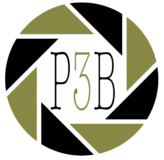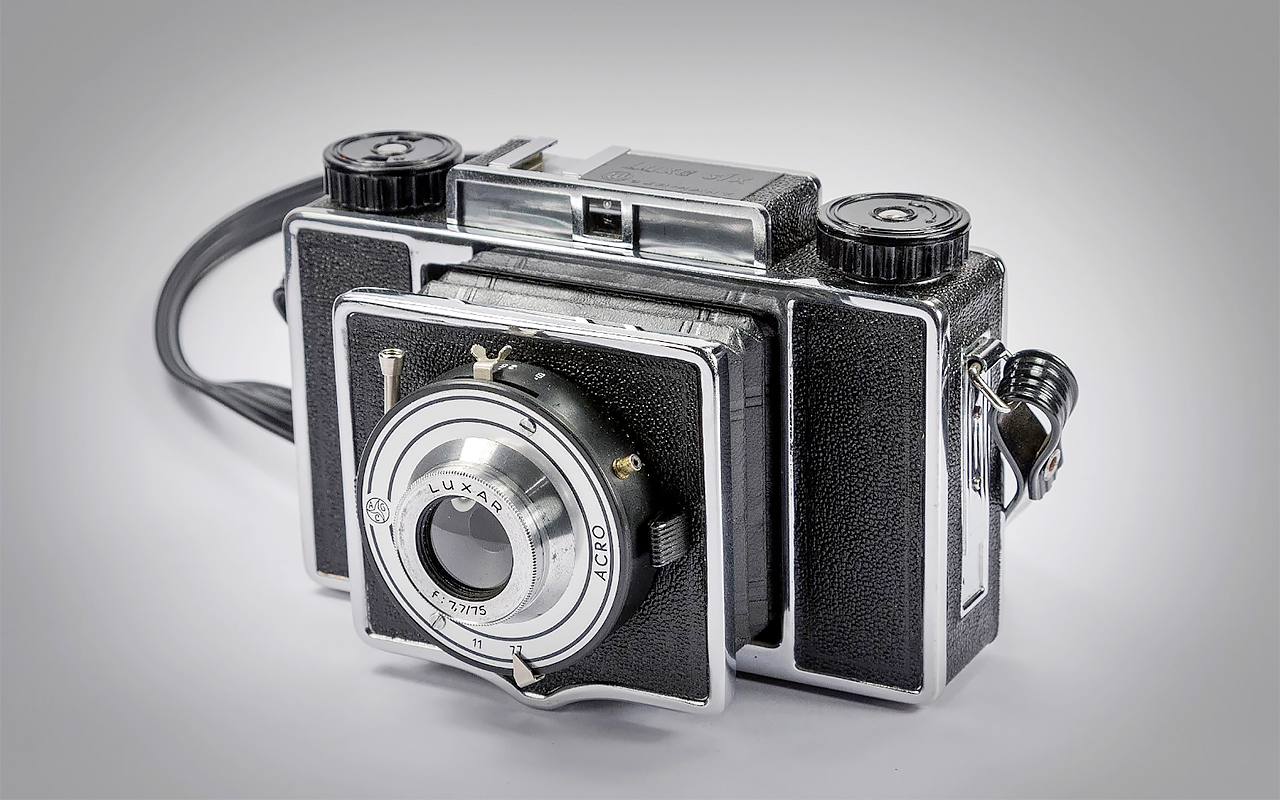Some of the following companies that manufacture(d) photographic material have already passed by in other parts of the site. Here you will find an overview of companies that marketed photographic material in the nineteenth and twentieth centuries. More is usually known about the best known or the most influential companies than about the lesser known ones; therefore they will be discussed more extensively than others.
The emphasis in this part of the site is more on the ups and downs of the company as such, while in other chapters the emphasis was on the product or on the man or woman who founded the company. The order of all companies is alphabetical.
Below are the names of the companies as will be discussed in this or any other chapter. By clicking on a name (so not on the bullet in front of it), you go directly to that part on this page where the manufacturer in question is located. Scrolling is also possible of course, but this service helps you to get to the desired manufacturer in question much faster.
Due to the fact that this introductory page has become much longer than originally planned and desirable due to the large number of manufacturers, we strongly advise you to use the name service below to go to the manufacturer of your choice on this or any subsequent page.
- General Introduction
- ADOX
- Agfa (see also Gevaert)
- Altissa
- Amaloco
- Ansco Camera Co (see also GAF)
- APM/APeM (see also Soho)
Amalgamated Photographic Manufacturers Ltd - Argus Camera Co, Ann Arbor Michigan
- Arsenal (see Kiev-Arsenal)
- Artima Export Ltd (see also Truvox)
- Asahi Pentax
- Bencini
- BOLCo and E Elliott Ltd
(abbrev. for The British Optical Lens Company) - Carl Braun Kamera-Werk
- Canon Inc.
- J.T. Chapman, Manchester –
- The Chicago Cluster of Companies
(consisting of 56 companies ) - Chinon
- Concord Camera Corp.
- K.G. Corfield & K.G. Corfield (Sales) Ltd.
- Coronet Camera Company
- Cosina Company, Ltd.
- Dacora
- Dixons
- Durst –
- E Elliott Ltd and BOLCo
(abbrev. for The British Optical Lens Company) - EHO-Altissa company (See Altissa)
- Ellison Kamra
(see also QRS Devry Kamra Company) - ELOP
- Ensign Ltd.
(distribution Company of Houghton-Butcher) - Ernemann-Kamerawerke AG
- Expo Camera Company
- The FED Company
- Ferrania
- Fisher-Price
- Fodor
- Foitzik-Kamerawerke
- C.F. Foth
- Fototecnica
- Franka Kamerawerk –
- Fujica (Camera Division of Fujifilm)
- Fujifilm (brief history)
- Futura
- GAF (see also ANSCO)
(abbrev. for General Aniline & Film) - Louis Gandolfi –
- Herbert George Company
- Gevaert Photo-Producten N.V. (see also AGFA)
- Girard et Cie
- GNOME
- GOERZ
- GOMZ (LOMO)
- Graflex (Folmer & Schwing)
- Great Wall Plastics Co
- W. Haking Enterprises Ltd.
- Hanimex
- Hasselblad
- Healthways
- Houghton–Butcher Manufacturing Co
(See also Ensign Ltd. and Ross-Ensign Ltd.) - R.F. Hunter Ltd.
- ICA AG
- Ihagee (Exakta)
- Ilford
- Imperial Camera Corporation
(see the Herbert George Company story ) - Jos-Pe
- Kamera-Werkstätten Guthe & Thorsch
- Keystone
- Kiev Arsenal
- KMZ
- Kochmann
- Kodak USA (incl. Australia, Canada, France, Germany & the UK)
- Konica-Minolta (Konishiroku)
(see also Minolta) - Kowa
- Krügener
- Kürbi & Niggeloh (Bilora)
- Kyocera (Yashica, Contax)
- Lancaster
- Leitz
- Lensless Camera Manufacturing Company
- Linhof
- Lipca (see also Richter-Tharandt)
- LOMO (see GOMZ)
- Loreo
- Mamiya
- Meopta Optotechnica
- Mimosa AG
- Minolta (see also Konica-Minolta)
- Minox Company
- Miranda (Orion)
- MMZ-BeLomo
- Motodori (Condor)
- Dr. August Nagel Kamera Werke
- Neidig Kamerawerk
- Nemrod-Metzeler (See Healthways)
- Nettel
- Nikon Company
- Nimslo Corporation (see also Nishika)
- Nishika Optical Systems (see also Nimslo)
- Noblex (See also K-W Guthe & Thorsch)
- Olympus Company
- ORION (see Miranda)
- ORWO
- Ottico Meccanica Italiana (OMI)
- Paterson Products Ltd.
- VEB Pentacon Dresden
- Pentax (See Asahi Pentax)
- Petri
- Photavit (Bolta)
- Plaubel
- Polaroid
- Photo Porst
- Karl Pouva – VEB Fototechnik Freital (see also Woldemar Beier)
- Purma Cameras Ltd.
- QRS Devry Kamra Company (see also Ellison Kamra)
- Foto-Quelle
- Rectaflex
- VEB Rheinmetall Büromaschinenwerk
- Richter-Tharandt (see also Lipca)
- Ricoh
- Rollei Germany
- Rollei Singapore
- Ross-Ensign
(continuation from Ensign Ltd.) - Ro-To Company
- Sea&Sea-Sunpak
- Shanghai Seagull
- Sida-Fotofex
- Sigma
- Soho Ltd (see also APM)
- Standard Cameras
- Steinheil
- Stenopeika
- Thornton-Pickard
- Topcon (Tōkyō Kōgaku)
- Tougodo Company
- Traid Corporation
- TRUVOX (see also Artima Export)
- Tura AG
- Universal Camera Corp.
- Vivitar
- Voigtländer
- Vredeborch
- Welta
- Werra (C. Zeiss Jena)
- Wirgin
- Kamera-Fabrik Woldemar Beier (see also Karl Pouva)
- Hermann Wolf GmbH
- Wünsche
- Yashica (see also Kyocera)
- Zeiss Ikon AG
- Zion
- Zunow (Teikoku Kōgaku)
FOUNDERS: Walter Waurich and Theodor Weber
COMPANY NAMES:
1914: Weeka-Kamera-Werk; 1919: Welta Kamerawerke Waurich & Co; 1923: Welta GmbH; 1946: VEB Welta-Kamera-Werke; 1950: merger with Reflekta-Kamerawerk Tharandt; 1959: Welta was brought to the VEB Kamera- und Kinowerke Dresden (later VEB Pentacon); 1960: Welta production facility was transferred to VEB Prüfgerätewerk Medingen; 1960: camera production stopped.
COMPANY ADDRESSES:
1914: Freital–Hainsberg, Saxony; 1956: Leßkestraße 10, Dresden-Freital.
Welta was a German camera manufacturer and a brand name of cameras that were manufactured there.
 On May 6, 1914, the merchants Walter Waurich and Theodor Weber founded the Weeka-Kamera-Werk in Hainsberg, Saxony. Initially, they employed only two mechanics who manufactured small numbers of hand-made plate cameras.
On May 6, 1914, the merchants Walter Waurich and Theodor Weber founded the Weeka-Kamera-Werk in Hainsberg, Saxony. Initially, they employed only two mechanics who manufactured small numbers of hand-made plate cameras.
As early as 1919, eight basic models were available, which resulted in almost 100 different models through variations. The first cameras bore the Welta logo as a model name, which was soon adopted as a trademark and later as the company name Welta Kamerawerke Waurich & Weber. From 1923 the company was only called Welta GmbH for short.
It was not until 1933 that the Perfecta 6×6 twin-lens reflex camera was introduced. The Superfekta (1935) was expanded to the film format 6×9. Welta could not ignore the trend towards 35mm cameras either. The 35mm folding cameras Welti (1935), Weltini (1937), Weltix (1939) and the 6×6 cm roll film camera Weltax (1939) rounded off the product range.
In autumn 1939, as a result of the beginning of the war, the production of parts for military control technology had to be started. The camera production was drastically reduced and in 1942 was completely switched to armaments production. From then on, Welta operated until the end of the war, as a supplier for Zeiss Ikon and Radio H. Mende & Co. in Dresden.
Almost inevitable: becoming a VEB
The war manufacturing plants were dismantled after the Second World War in June 1945. In 1946, the Welta GmbH was expropriated by the Saxon referendum and restructured into the VEB Welta-Kamera-Werke.
From 1947 the production of Weltax began with tools that had been repaired in the meantime. 1950 was followed by the merger with the now also owned company Reflekta-Kamerawerk Tharandt. This merger brought the successful “Reflekta” models and the already developed “Reflekta II” into the Welta product portfolio and the workforce grew to 215 workers. The engineers in Tharandt developed these Reflektas for Welta until 1954 to the “Weltaflex”.
In 1955, the dilapidated production building on Leßkestrasse had to be cleared and demolished. Production continued poorly in alternative workshops. In December 1956, Welta moved back to Leßkestraße in a production building that was newly built at the same location.
The last years
The Welta workforce had grown to over 600 in 1957. In order to exploit this workforce potential, on-board devices for the passenger plane Ilyushin Il-14 were also manufactured in addition to cameras in the Dresden aircraft plant.
From 1958 Welta produced the “Orix”, which was designed by Walter Hennig from VEB Kamera-Werke Niedersedlitz. From 1957, companies were merged to make the small-scale photo industry of the GDR more internationally competitive.
In 1959, Welta was brought to the VEB Kamera- und Kinowerke Dresden (later VEB Pentacon) and the Welta brand was thus withdrawn from the market. Even before the merger, the “Orix” was already on the market as the “Penti”. Their successor models “Penti I” and “Penti II” were manufactured until 1977.
The Welta production facility and 472 employees were transferred to VEB Prüfgerätewerk Medingen on January 1, 1960, which began with the conversion of the production of cameras to laboratory equipment and laboratory technology. The test equipment factory was located at Leßkestrasse for a few years and then moved to a new location at Goetheplatz. The old Welta building was demolished after the 2002 Elbe flood.
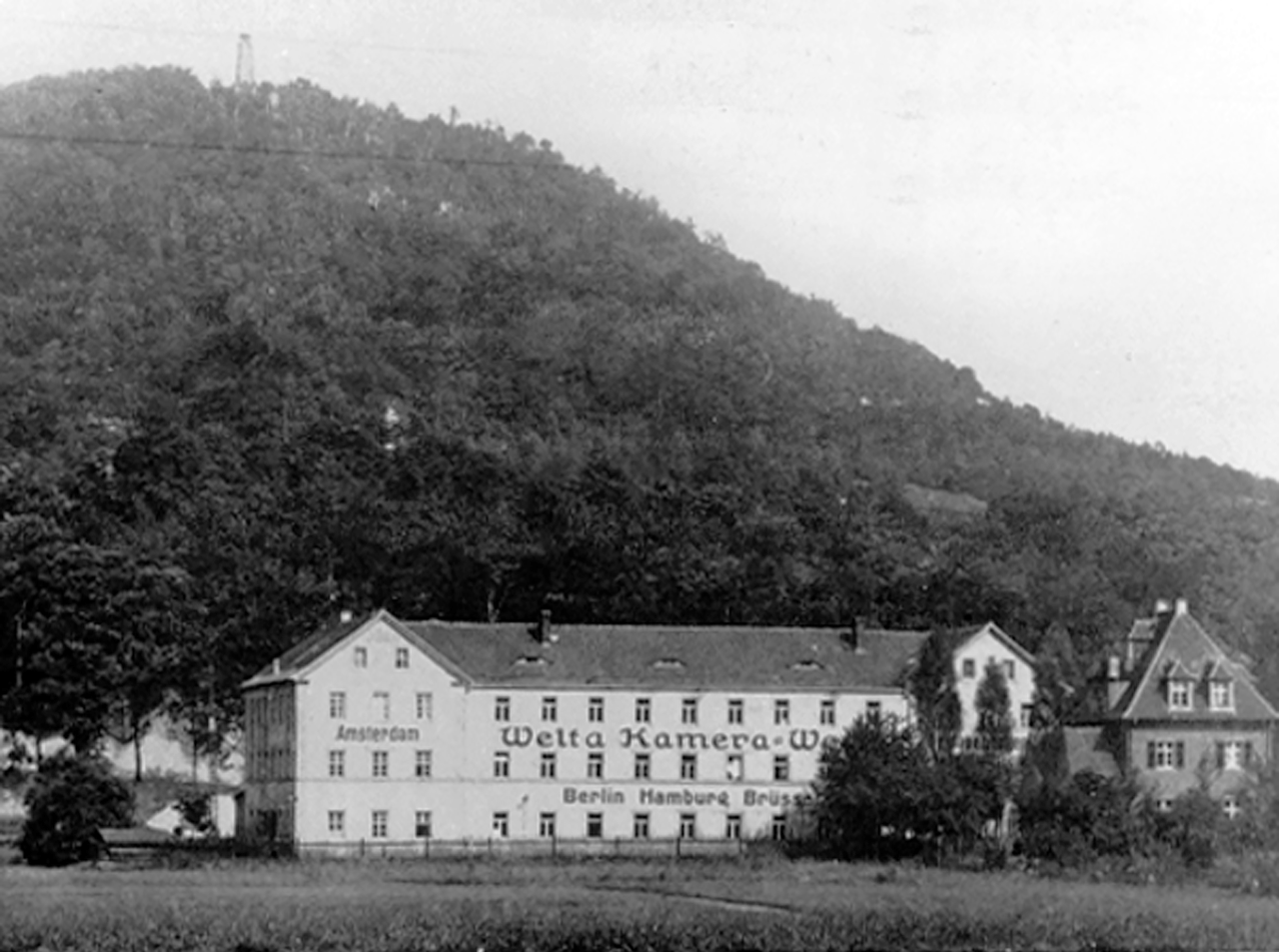
Welta camera factory in Freital. The building was demolished after the 2002 flood).

The Penti (ORIX) was available in several striking colors.
Overall, the company launched a relatively manageable range of cameras, but in numerous versions and variants. Here is an excerpt:
Dubla
The Dubla was a high-quality and precise plate camera in the format 9 × 12 cm from around 1925. Later models could measure up to 10 × 15 cm.
Perle
Welta has produced many different models in many different formats under the name Perle. The palette ranges from medium format 4.5 × 6 cm, 6 × 6 cm (120 film) to 6 × 9 cm, 5 × 8 cm for 129 film to 6.5 × 11 cm for 116 film.
Perfekta and Superfekta
The Perfekta is a TLR in the medium format 6 × 6 cm from 1933. The Superfekta is a Perfekta from 1935 with a format of 6 × 9 cm.
Welti
The Welti is a 35 mm folding camera that was manufactured from 1935 to the 1960s. It belongs to a group of very similar cameras, including the cheaper cameras Weltix and Watson. The models manufactured in the GDR after the Second World War are called Welti 1, sometimes with an additional letter.
Welta 35
Folding camera in small format from 1935.
Weltini
Small format rangefinder camera with coupled rangefinder from 1937. The camera was produced in two versions, both officially called Weltini, but today known as Weltini I and Weltini II.
The Weltini I was manufactured from 1937 to 1938. In the Weltini II manufactured from 1938 to 1942, the rounded housing of the rangefinder was as long as the camera housing.
Weltax
The Weltax is a compact 6 × 6 / 4.5 × 6 cm folding bellows camera that was built between 1939 and 1959.
Belfoca
The Belfoca is a compact folding bellows camera in the medium format 6×6 / 6×9 cm. Production date from 1952 to 1959. There were the models: Belfoca I from 1952; Belfoca II from 1958) and Belfoca III from 1959).
Reflecta / Reflekta
(Spelling with “k” from 1949)
Reflekta II
By merging with the Tharandt camera factory, Welta also got the newly developed Reflekta II in 1952, a TLR in the medium format 6 × 6 cm for 120 roll film. There are also export models – For example: The “Flektar” (Reflekta) and “Peerflekta II” (Reflekta II) distributed by the British “peerless camera company” as well as the Superflex distributed by “Penn”.
Weltaflex
The Weltaflex is a further development of the Reflekta II from 1954. Like its predecessor, this camera is a two-eyed viewfinder (TLR) in the medium format 6 × 6 cm for 120 roll film.
Orix & Penti
The Orix is a compact pocket camera in half format (18 × 24 mm). It was manufactured between 1958 and 1959. The Orix was on the market as a Penti until 1961. Today it is also called Penti 0.
The Penti I is a Penti with a slightly modified housing. Between 1959 and 1961, the Penti cameras were almost unchanged available in a variety of different color combinations. The successor model Penti II, built from 1961 to 1977, is equipped with an integrated selenium exposure meter.
35mm film Folding
- Watson
- Welti
- Weltini
- Weltix
35mm film rigid
- Belmira
35mm film half frame
- Penti
Belca
After the WW2, the Dresden firm Balda stayed in east Germany and its name changed to Belca-Werk in 1951. It continued for some time to produce folders, and was absorbed into VEB Kamera-Werke Niedersedlitz in 1957. From that time some Belca cameras made by Welta, which was a part of VEB-Kamera-Werke Niedersedlitz.
- Belfoca I
- Belfoca II
- Belmira
- Beltica II
120 film Folding Viewfinder
- Garant (6×9)
- Weltax (6×6)
- Perle (4.5×6, 6×6 or 6×9)
- Symbol (6×9)
- Trio (6×9)
120 film rangefinder
- Solida (6×9)
- Weltur (4.5×6, 6×6 or 6×9)
120 film Folding TLR
- Perfekta (6×6)
- Superfekta (6×9)
- Extra Rapid Aplanat
120 film normal TLR
- Reflecta, actually made by Richter, later continued by Welta as Reflekta.
- Reflekta II
- Reflekta III
- Weltaflex
- Peerflekta, Peerflekta II
127 film
- Gucki (3×4)
- Gucki (4×6.5)
129 film
- Perle (5×8)
116 film
- Perle (6.5×11)
filmplates
- Rak
- Tux
- Watson
- Vario

four examples of welta cameras
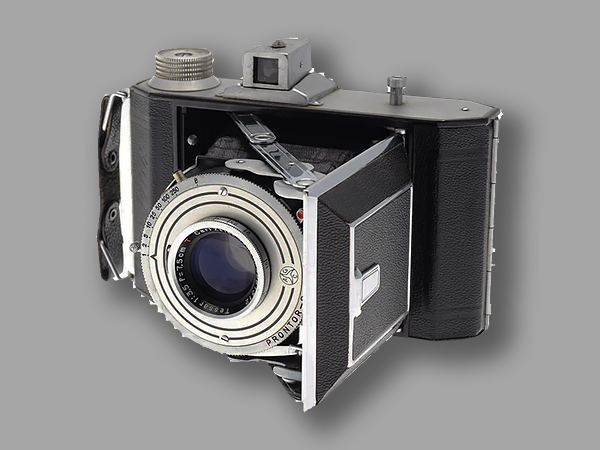
The Weltax was a self-erecting 120 folding camera introduced by Welta in 1938. It takes 12 6x6cm images on each roll of 120 film, but it can shoot 6×4.5cm images as well using masks. Around 1956, some Weltax production was taken up by VEB Rheinmetall, engraved with their name on the bottom. The camera has a flash synchronized quality shutter. It has a sturdy metal body, coated with leatherette. The front door was made of black plastics.
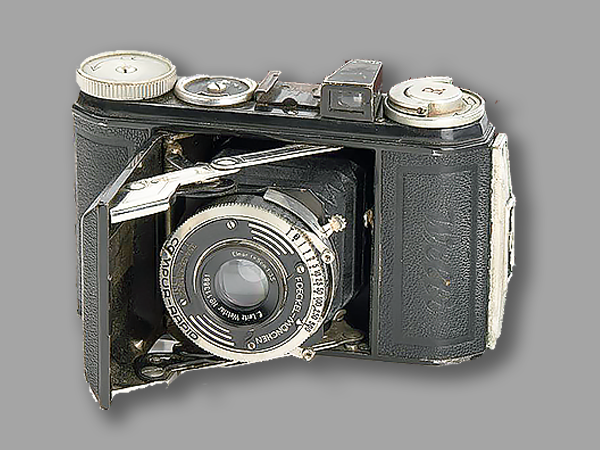
The Welta Welti is a 35mm folding viewfinder camera made by Welta from 1935 through the 1960s. It is one of a confusing family of nearly identical cameras that also include the lower cost Weltix and Watson. Like many European manufacturers, numerous enhancements and changes were made during the production life of any given model. Most (if not all) Weltis used Compur shutters, usually made by Welta under license.
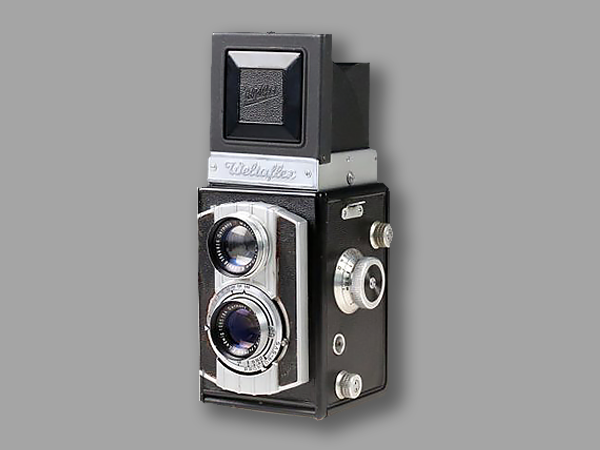
The Weltaflex is a TLR made by Welta in what was then East-Germany. There seem to be two versions. An “older” version with a red slide window for advancing or a “newer” model with a VEBUR shutter that has auto framing. This newer model does not have the rear red window for advancement but a pin and lever at the bottom of the camera.
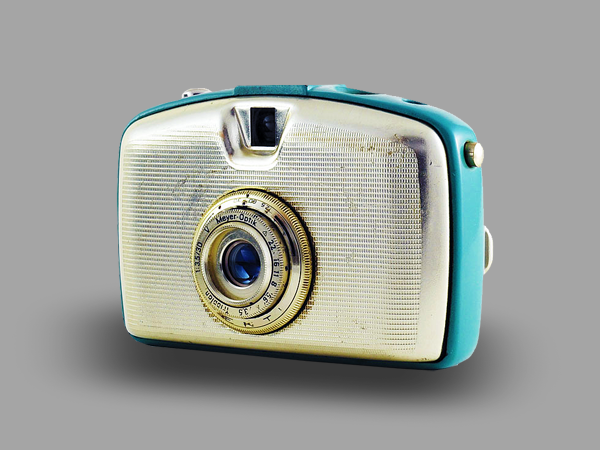
The Penti was first introduced in 1958 as the Welta Orix. This was a viewfinder camera with a complete set of manual controls, all in rings around the lens. It was available with a white, red , black or blue body. An unusual feature was the long film advance button. Once pushed into the camera the film was advanced to the next frame. After exposure the button appeared again in full length so that forgetting film advance was never an issue with this camera.
FOUNDING DATE: 1953
FOUNDER: Rudolph “Rumü” Müller
COMPANY NAMES:
1953: the Carl Zeiss Jena factory, Werra department.
COMPANY ADDRESSES:
1953: Eisfeld, Germany.

INTRODUCTION
Actually, there is no such thing as the Werra Company. It originated as an “activity project” for Zeiss Ikon employees who had returned from Russia to Germany after World War II. So, before we go into the details of this Werra project, here’s first a brief introduction to Zeiss Ikon. The extensive story about that company can be found under the title Zeiss Ikon AG.
The Zeiss pre-history
Although most known for their quality line of lenses, the brand Zeiss has been associated with a great deal of other products too. From cameras to turn signals, if it involved glass, there’s a good chance at some point in the 20th century, Zeiss likely had a hand in it. Although sold as a Zeiss product, the Werra is not made by Zeiss-Ikon as it was produced in Jena, a factory who predominantly produced lenses.
 Originally founded in 1846 by physicist and mathematician Carl Zeiss as Carl Zeiss Jena, it’s first products were microscopes and other scientific instruments. The name “Jena” refers to the town the company was founded in, Jena, Germany. Upon Carl Zeiss’ death in 1888, the company would change it’s name to Carl-Zeiss-Stiftung (Carl Zeiss Foundation in English) and the company would continue on as a leader in the photographic lens industry.
Originally founded in 1846 by physicist and mathematician Carl Zeiss as Carl Zeiss Jena, it’s first products were microscopes and other scientific instruments. The name “Jena” refers to the town the company was founded in, Jena, Germany. Upon Carl Zeiss’ death in 1888, the company would change it’s name to Carl-Zeiss-Stiftung (Carl Zeiss Foundation in English) and the company would continue on as a leader in the photographic lens industry.
The early 20th century was a period of huge growth for the entire German camera industry with companies popping up all over the country. Many of these companies formed in or around the eastern city of Dresden due to it’s excellent transportation system. Dresden became the unofficial centre of the photographic industry with over a dozen companies all competing in the camera and optics industries.
After the First World War, the German economy was in shambles and many of the medium to smaller companies found it difficult to stay in business. In 1926, by order of the German government, four different Dresden based camera makers would all merge together with an infusion of capital from the Carl Zeiss Foundation to form an all-new company, known as Zeiss-Ikon. As a unified company, Zeiss-Ikon would survive the poor Germany economy and would become a worldwide leader in the camera industry.
The birth of the Werra department
After the Second World War, Carl Zeiss was divided into a West German and an East German division. The East German division, Carl Zeiss Jena, lost a lot of personnel to the Russians, who deported them to create cameras for the Motherland. Many of these workers were sent to Kiev, Ukraine where entire assembly lines of the pre-war Contax rangefinder were transferred to be built as the Kiev rangefinder.
When they slowly started trickling back to Jena where they originally worked in the early 1950’s, Zeiss Jena didn’t have an immediate use for their expertise. They realised however that it would be a tremendous loss to the company and the country if their experience went to waste, so they gave them a project of their own: the Werra cameras. Manufactured in the Ernst Abbe Werk of Eisfeld, they were named after the river that runs near that town.
 The project involved to create an all-new amateur camera that reportedly could be sold for less than 100 Mark. The man most widely recognized as the father of the Werra was Rudolph “Rumü” Müller, an avid sports photographer, Müller had more of an engineering background than a design, but had wanted to build a people’s camera with a clean and easy to use interface.
The project involved to create an all-new amateur camera that reportedly could be sold for less than 100 Mark. The man most widely recognized as the father of the Werra was Rudolph “Rumü” Müller, an avid sports photographer, Müller had more of an engineering background than a design, but had wanted to build a people’s camera with a clean and easy to use interface.
He discussed his ideas with Paul Oswald who was in charge of manufacturing in Jena and the foundations for what would become the Werra were born.
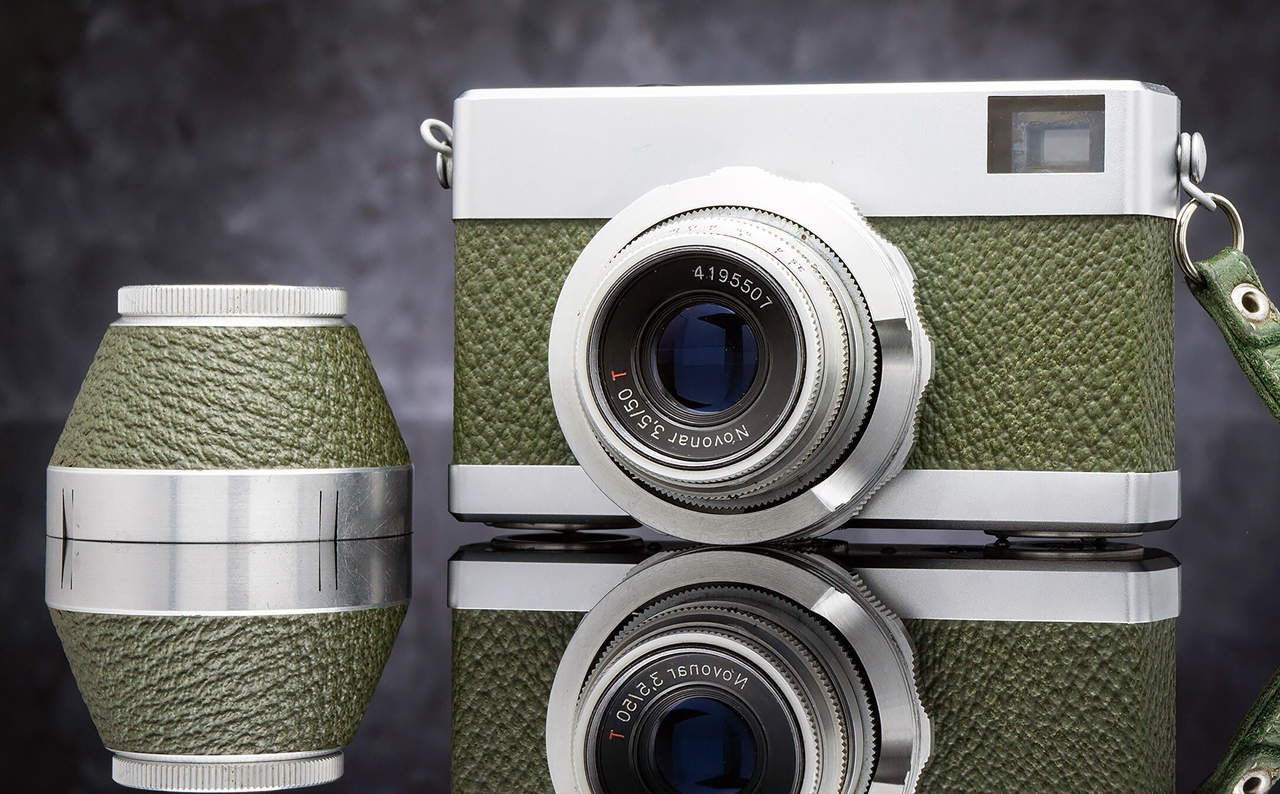
In addition to the unique design of the camera, it was characterized in the early days by its olive green cover.
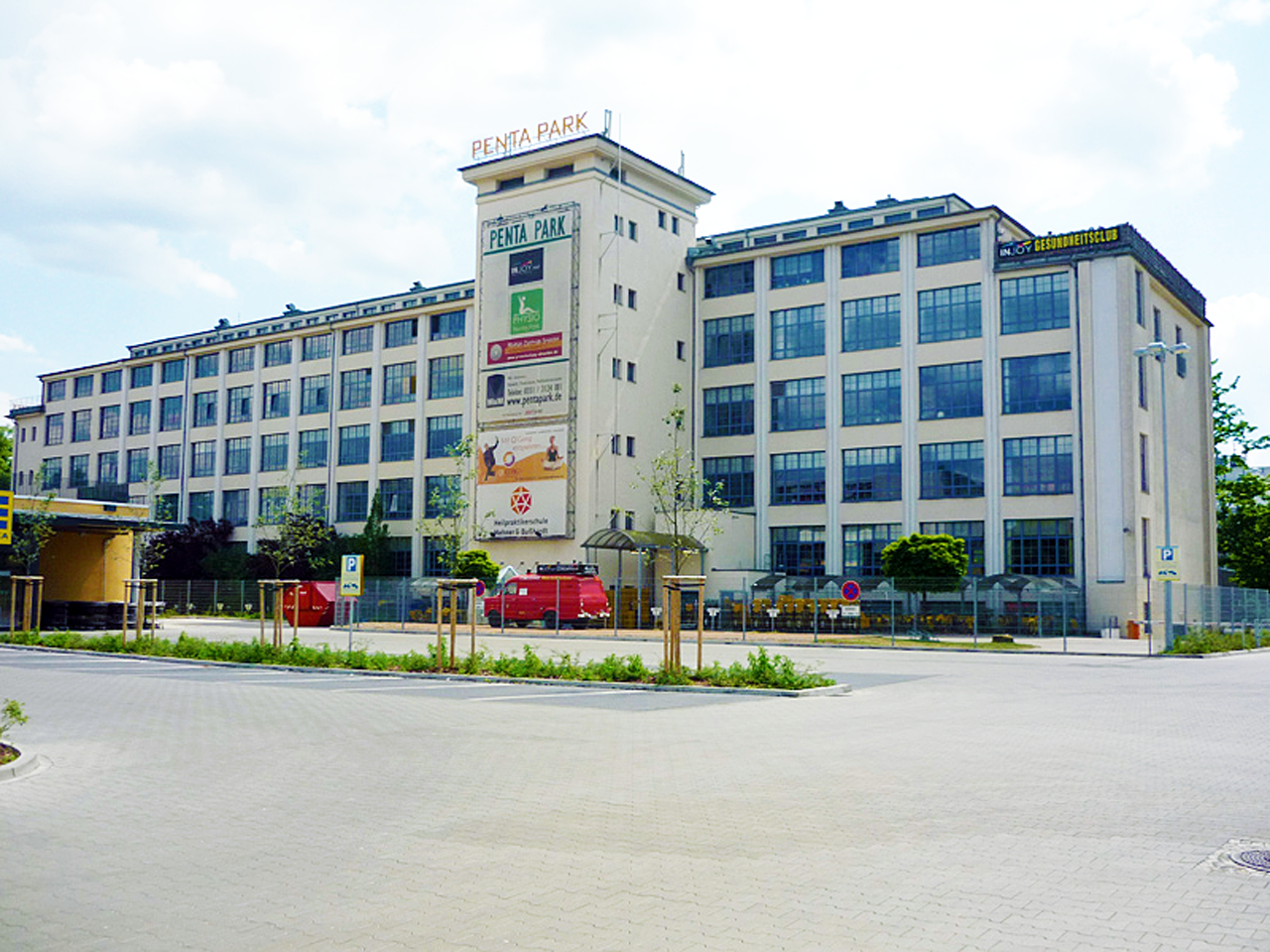
Zeiss Ikon plant, built 1936 at Glashütter Straße in Dresden by Emil Högg, who was also architect of the Ernemann Tower
The Werra specs
To keep the cost of the camera low, it would come with a simple 3-element Novonar, or for a little more, a 4-element Tessar. The shutter would be a central leaf without any ability for interchangeable lenses. The camera would not have a light meter or a rangefinder, but these features would be added later.
The choice of a green body covering is thought to have been chosen by Rudolph Müller who picked green to honour the lush green fields and landscapes of the state of Thuringia where Jena is located.
According to the Spring 2013 Zeiss Historica newsletter, this explanation is doubted, but is the best one I’ve come across, but at the very least it seems it was a decision made by Müller.
The main idea behind the whole Werra series, its unique selling point, was the rapid film advance ring. This ring, which is the big-carpeted ring near the body, cocks the shutter, and advances the film and the frame counter all in one twist. A very rapid, very sure, very smooth twist.
The camera’s included lens cap could be reversed and used as a lens hood, and all non-essential controls for the camera were located to the bottom, to keep the top appearance as clean as possible. Due to the minimalist design ethic, they were nicknamed the Volkscamera, meaning the people’s camera.
Into the real world
When the camera was finished, the Werra made its debut at the 1954 Leipzig Spring Fair.
 The original Werra was a very basic camera with a fixed 50mm f/3.5 Novonar triplet in a Vebur shutter with a maximum speed of 1/250s. Its appearance was dominated by its olive skin colour, which was changed to black in 1957 when Zeiss finally got the word that everybody hates olive drab.
The original Werra was a very basic camera with a fixed 50mm f/3.5 Novonar triplet in a Vebur shutter with a maximum speed of 1/250s. Its appearance was dominated by its olive skin colour, which was changed to black in 1957 when Zeiss finally got the word that everybody hates olive drab.
Because Werras weren’t Zeiss Jena’s core business (optics was), production built up slowly. Two years after the production was initialised in 1954, a sales figure of 100.000 was reached.
The Werra was successful enough to warrant a variety of new models with improved features. In 1958, three new models called the Werra II, III, and IV were released adding a bright frame viewfinder and selenium exposure meter in the II, a coupled rangefinder and interchangeable lenses, but no meter in the III, and a new meter with coupled shutter speeds and f/stops in the IV.
What started out, as a simple camera with a minimalist appearance and feature set was now an advanced and capable system camera, on par with the Kodak Retina IIIC.
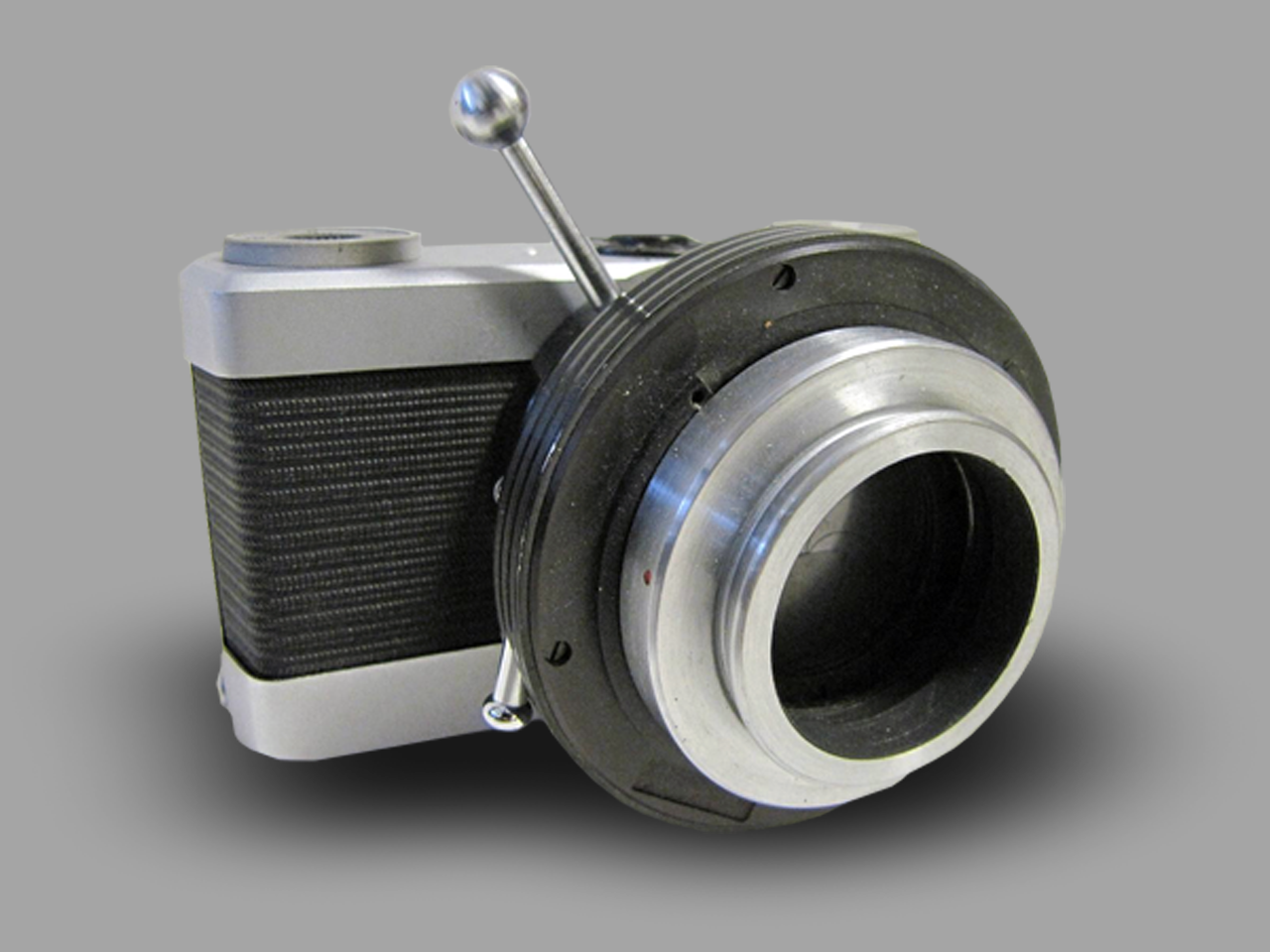
Special Werra E version with microscope adapter. It has no viewfinder and no lightmeter, just a body with shutter and adapter. For the benefit of science, Zeiss Jena built around 1960 two different microscope models based on the Werra, which were sold on the point that they vibrated much less than cloth shutter cameras and SLRs.
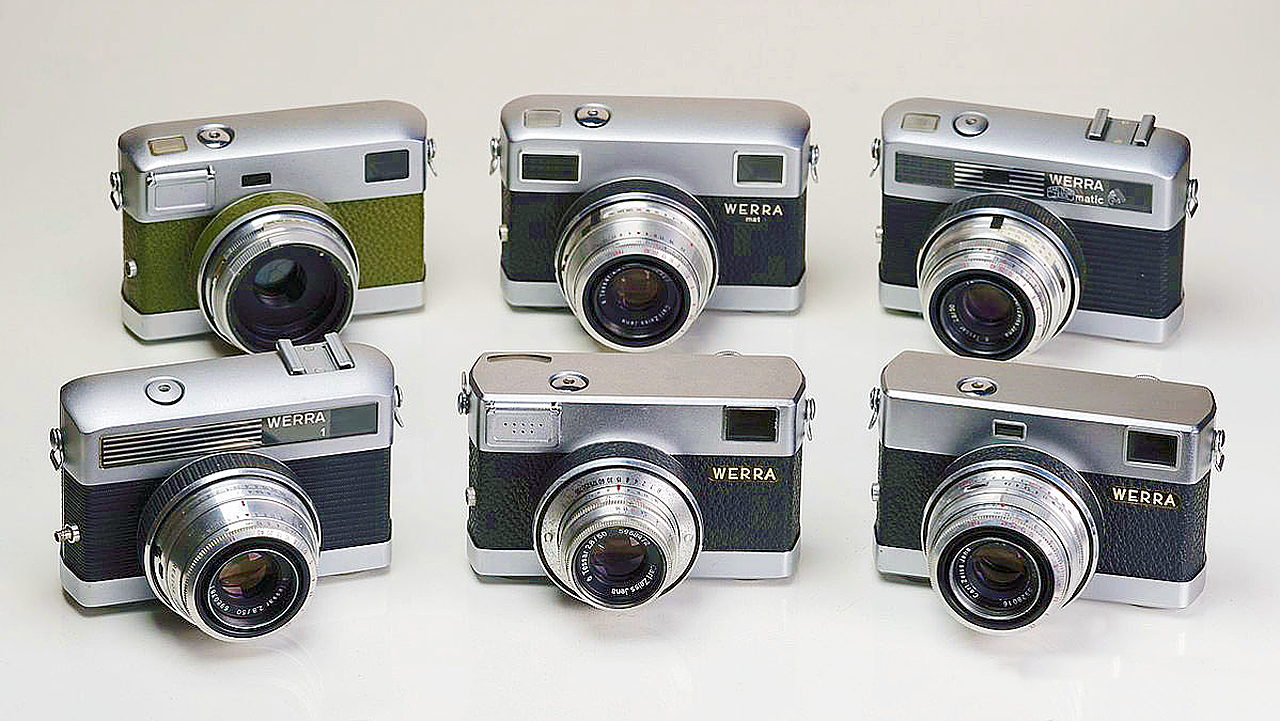
A group of six different types from the wide range of 30 different Werra models.
Even extra features couldn’t win the battle with the SLR cameras
 As the years went on, further advancements to the Werra were made adding more features; even a prototype SLR called the Werraflex was developed but never released.
As the years went on, further advancements to the Werra were made adding more features; even a prototype SLR called the Werraflex was developed but never released.
To build a working SLR in the body of a Werra required an all-new leaf shutter purpose designed for this camera, a compact pentaprism, and an all-new lens mount. By the time the prototype was completed, management changes decided it did not make financial sense to build the SLR, competing with other SLRs being made in Dresden.
Werras were exported all over the world including the United States, although it does not appear to have been done in great numbers here.
The Werra series enjoyed a long life, being produced until 1968 with a huge number of variants in that time. According to an unofficial list of models, as many as 30 different Werras were made.
Roughly half a million cameras were produced. Despite good sales, the Werra series was discontinued in 1966 after VEB Pentacon assimilated Carl Zeiss Jena in 1964.
Pentacon’s director Siegfried Böhm felt that a highly specialised company like Zeiss should stick to its core business (optics) and abandon its simple viewfinder cameras. Other companies in the Pentacon group were making viewfinder cameras too, and Böhm foresaw that the future lay in SLRs – of course, history proved him right.
FOUNDERS: the brothers Heinrich, Max and Josef Wirgin
COMPANY NAMES:
1920: Gebrüder Wirkin; 1939: The Wirgin factory in Wiesbaden became incorporated into the Dr. Schleußner Adox company; 1946: Heinrich Wirgin refounded the Wirgin company; 1968: Change of company name to Edixa GmbH; The Wirgin company existed till 1972.
COMPANY ADDRESSES:
1920: Schiersteiner Straße 9 in the Hessian capital Wiesbaden, Germany; 1929: Dotzheimer Straße 172, Wiesbaden, Germany; 1962: also Franka-Kamerawerk in Bayreuth/Oberfranken; 1967: the Franka-Werk was closed.
Wirgin was a German company which is still known for its brands Wirgin and Edixa, and for its camera types like the Edina, the Edinex or the Gewirette. It made a line of quite inexpensive 35mm SLRs from the 1950s to the 1970s, including the Edixa Reflex and Edixa-Mat Reflex. Wirgin was West Germany’s main producer of SLRs with focal plane shutters. It also produced some of the lenses for its cameras, among them several M42 screw mount lenses.
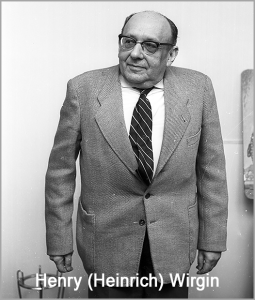 Wirgin was founded in 1920 by the brothers Heinrich, Max and Josef Wirgin, who were immigrants from Poland.
Wirgin was founded in 1920 by the brothers Heinrich, Max and Josef Wirgin, who were immigrants from Poland.
They built several folding plate cameras before the company surprised the market in 1932 with a very small viewfinder camera for type 127 film, the Gewirette, which was smaller than medium format.
From the mid-1930s it also made Edinex 35mm viewfinder cameras, which they produced also as Adrette for Adox. These came equipped with a Wirgin Gewironar lens and a Compur shutter or a Steinheil Culminar lens (like a Tessar) in a Prontor shutter.
Here the story takes a dramatic turn. The Wirgin brothers were of Jewish origin and became the subject of increasing harassment. In 1938 circumstances in Germany had changed since the brutally dictatorial regime of the Nazi party had reached the peak of its success, pushed by the Olympics in Berlin in 1936 and the economic upswing. In their delusion of grandeur, the political leaders decided to start making true all their only ideologically justified abhorrent menaces against minorities in Germany, especially against the Jews.
In 1938 Heinrich and Josef Wirgin still lead their company in Wiesbaden, but with the help of one of their clerks they managed to escape from Germany via Switzerland to the USA.
Max might have been already in the US. The company was confiscated by the German state in 1938 and integrated into the Dr. Schleußner Adox plants and produced cameras under the name Adox. During the war production stopped and the factory was partially destroyed during Allied Forces bombing raids.
Post-War Period with Heinz Waaske
After the war Heinrich Wirgin, who had meanwhile changed his name to Henry Wirgin, came back from America, and re-founded the Wirgin company in Wiesbaden. The production of cameras was resumed.
Max Wirgin remained in the United States and founded the Camera Specialty Company (Caspeco) in New York. The company sold various photo products and also imported cameras from Germany.
 An administrative officer of the American occupied zone of Germany established the contact between Wirgin and Heinz Waaske. Heinz Waaske was born in 1924 in Berlin and did an apprenticeship as a precision mechanic. He was later in the Wehrmacht, suffered severe injuries and was taken prisoner of war.
An administrative officer of the American occupied zone of Germany established the contact between Wirgin and Heinz Waaske. Heinz Waaske was born in 1924 in Berlin and did an apprenticeship as a precision mechanic. He was later in the Wehrmacht, suffered severe injuries and was taken prisoner of war.
After the end of the war, he came into contact with camera technology at the Berlin company Krenzin and began constructing cameras. In 1948 he completed a prototype for a 16mm camera and sold the plans to the Americans.
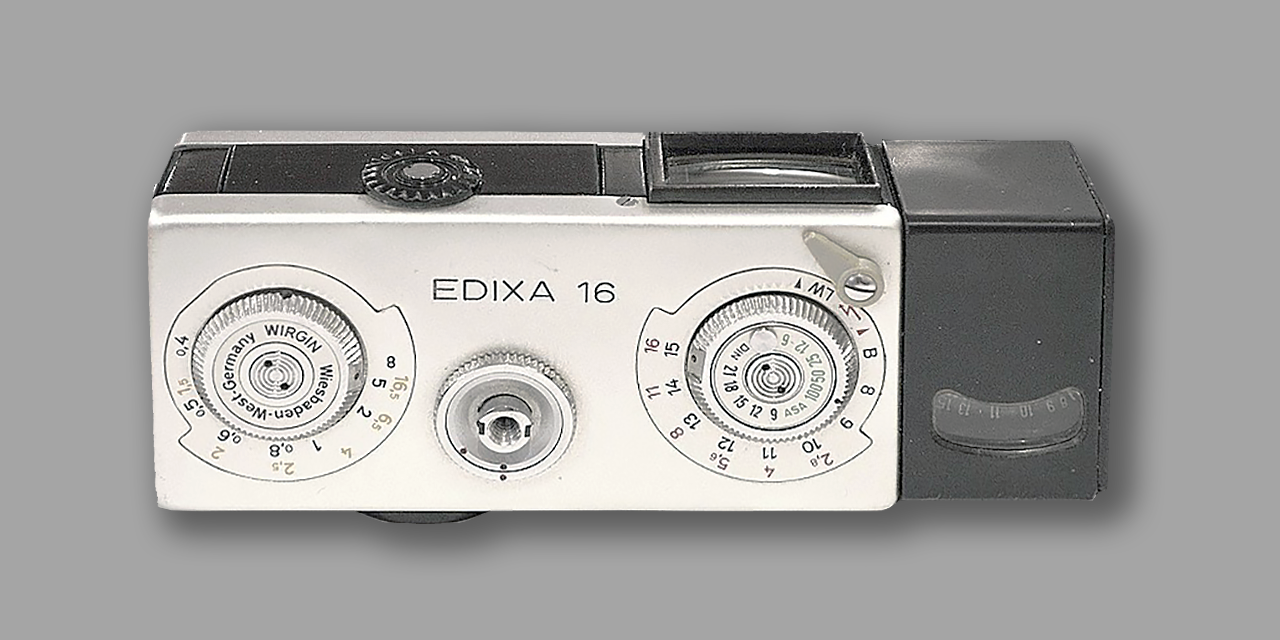
Designed by Waaske, and produced by (initially) Franka and subsequently Wirgin factories in Germany, in the 60’s. At the time of its apparition, it was the smallest 16mm film camera on the market. A coupled light meter match needle type is present. This meter unit can dismounted off the camera, making it a even smaller package. The lens is a very good Xenar 25mm/2.8.
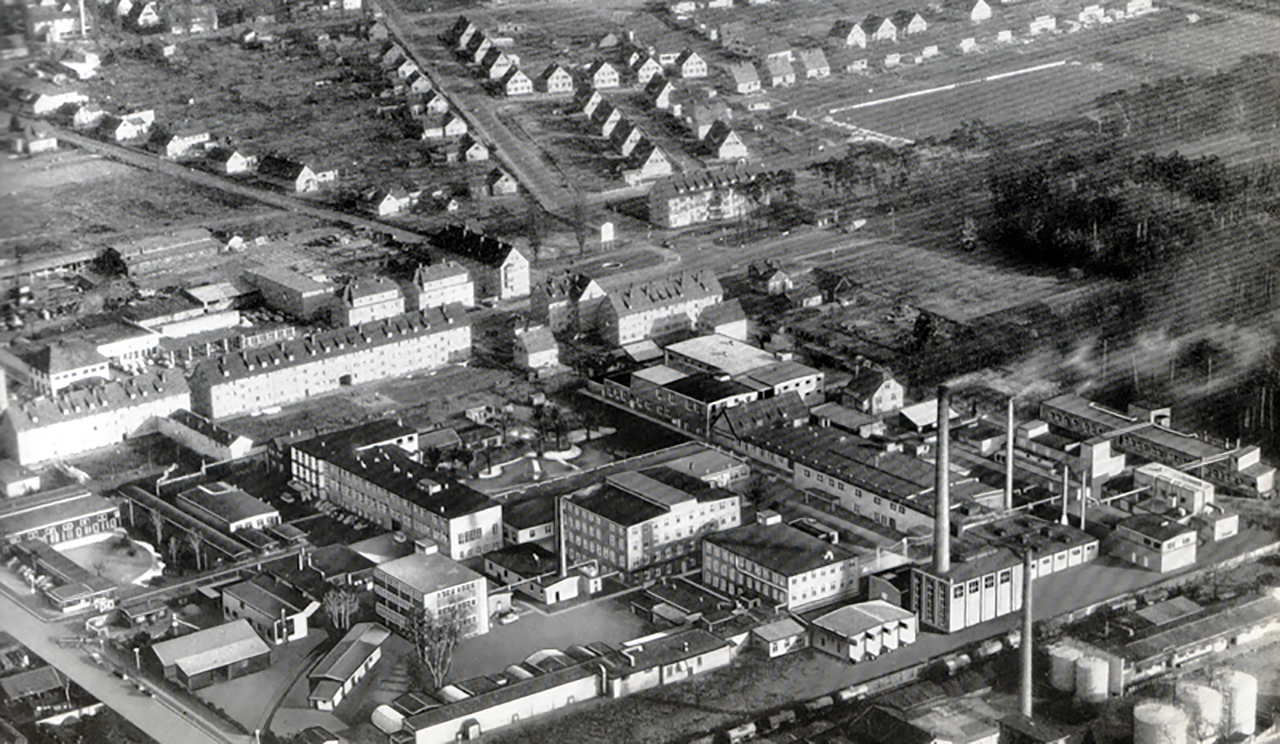
Aerial view of the Dr. Schleussner Adox Fotowerke Frankfurt just before World War II.
Many new products were developed
In 1951 the talented technician Waaske was also hired as a precision mechanic at the Wirgin Kamerawerke. He quickly rose to become head of the experimental workshop, designer and finally chief designer.
As chief designer he developed the Edixa Reflex, a single lens reflex camera with automatic central shutter. It was the first camera of this kind from West Germany. He also constructed a more elegant SLR prototype, and later a complicated electronically controlled SLR with Compur shutter, and a stereo rangefinder camera. Until Edixamat Reflex and Edixa-Electronica he was responsible for the Wirgin division.
During the development of the Edixa 16, a camera for Rollei’s 16mm film cartridges, he noticed customers’ demand for a compact camera with the largest possible film format. Thereupon he developed the smallest possible camera for the popular 35mm format. The prototype did not appeal to Henry Wirgin.
Henry Wirgin bought the Franka company from Bayreuth in Bavaria in 1962. Since then several Edixa 35mm viewfinder cameras had been made in the Franka-Kamerawerk in Bayreuth/Oberfranken. Made in Bayreuth and Wiesbaden were the small Edixa 16 cameras for 16mm film with removable coupled or uncoupled selenium meter, all derived from an original model designed by Heinz Waaske in Wiesbaden and developed and produced in Wiesbaden and Bayreuth as Edixa 16, Franka 16, or, for the Karstadt warehouses, as Alka 16.
Waaske leaves for RolleI
In 1965 Heinz Waaske left Wirgin since Henry Wirgin had decided to give up camera production sooner or later. Wirgin granted the rights on a new 35mm viewfinder camera to Waaske. Waaske found a new job at Wirgin’s competitor Rollei and found an open ear for his design.
The Rollei 35 was introduced in 1966, became a worldwide success and is still one of the most popular and iconic cameras of the German manufacturer.
In 1967 the Franka-Werke were closed. In 1968 Henry Wirgin closed his original company and continued the production of some camera models in a new smaller plant. In 1971, shortly before its closing, the company introduced a quite modern but heavy SLR camera. At the beginning of the 1970s, the complete production of cameras was stopped, the pressure and innovative power of the Japanese manufacturers was too great.
Henry Wirgin died at the age of 90 in 1989 in Wiesbaden. He had not only been one of the top entrepreneurs of the West German camera industry, he was also engaged in recovering normal friendly relationships of non-jewish Germans to jewish citizens as chairman of the Society for German-Jewish co-operation.

Wirgin’s little Edina-camera began its life as the “Edina”, but the name was altered as a result of a lawsuit brought by Kodak, claiming the name to be too close to the “Retina” trademark. The Wirgin line of cameras had included a very successful predecessor to the Edina named “Edinex”, and the name “Edixa” was apparently selected as a compromise.
In typical Wirgin style, the instructions apparently continued in print with an “Edixa” sticker over the Edina title. The camera remained in production for some years and formed the basis of the well-known Edixa Stereo Rangefinder camera.
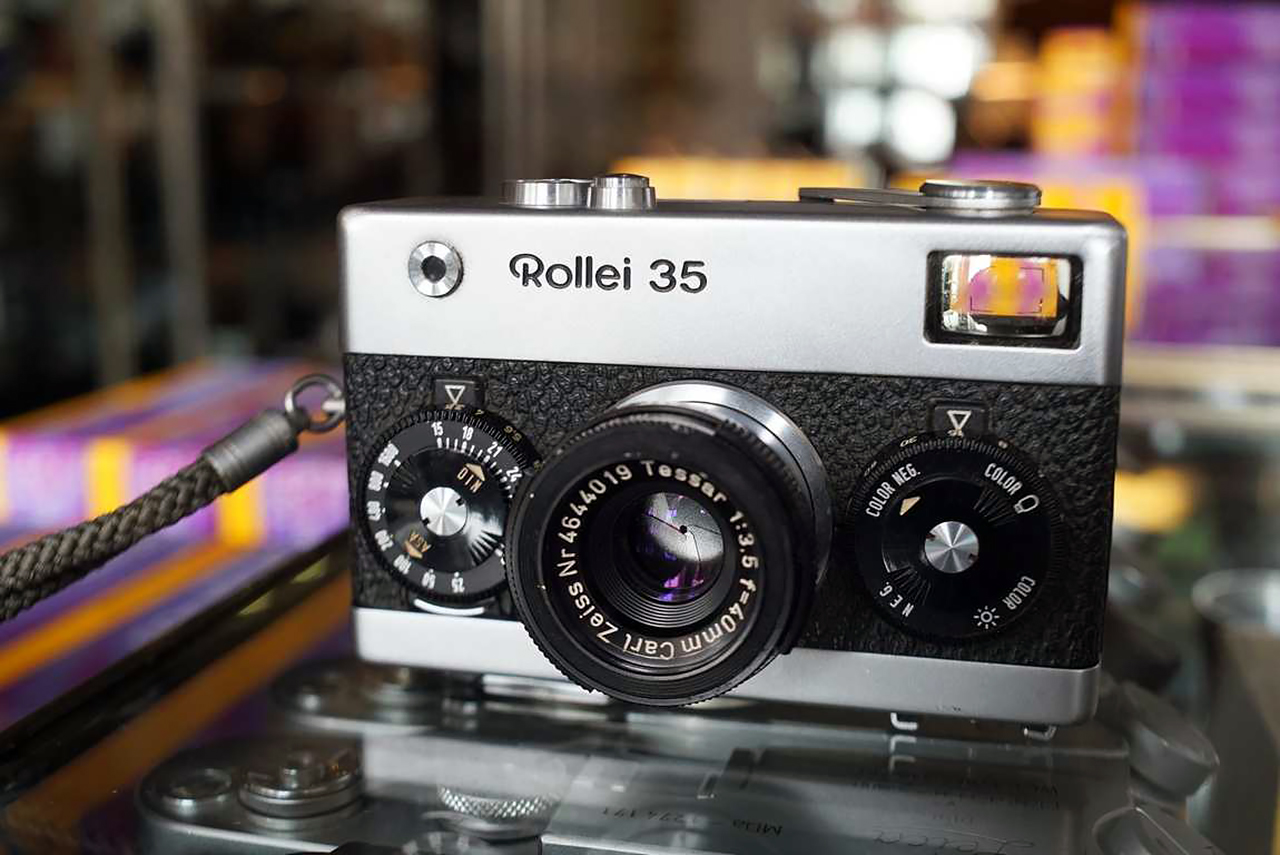
The Rollei 35 is a 35mm miniature viewfinder camera built by Rollei. The original Rollei 35, when introduced at the Photokina in 1966, was the smallest existing 135 film camera. In 30 years, about 2 million Rollei 35 series cameras were manufactured. The Rollei 35 was manufactured by DHW Fototechnik up to 2015. The last version is the Rollei 35 Classic, an updated Rollei 35 SE.
In 1952/53, Wirgin began in earnest to replace its pre-war camera models (including the Edinex) with all-new cameras with more up-to-date designs. In 1953 they released two new cameras: the rangefinder/viewfinder Edina line, and a 35mm reflex model named Komet. Both of these cameras represented significant design and technological advancements for Wirgin. The Edina camera was intended to replace the Edinex line (hence the very similar name), while the Komet represented a move into the advanced reflex market.
Unfortunately for Wirgin, the names of both the Edina and Komet cameras were challenged legally. The Edina camera name was challenged by Kodak, who claimed it was too close to the name of their Retina camera line, while the Komet name was challenged by several manufacturers who also had cameras with that same name.
Wirgin’s response was to rename the Edina to Edixa, and the Komet to Edixa Flex. Thus both camera lines were now joined by the name Edixa. To further confuse matters, through the 1950s Wirgin labelled their Edixa-Flex cameras with other names such as Edixa Reflex, Edixa-Mat Flex, and Edixa-Mat Reflex. Lastly, in the US (and possibly other markets) the camera maker’s brand name Wirgin was de-emphasized in favour of the overall brand name Edixa.
Many cameras unrelated to the original Edina and Komet cameras were henceforth issued under the Edixa brand name. A Japanese film camera was sold as Edixa 8mm. The Edixa 2 MTL SLR was developed and built by Cosina in Japan. The German lens manufacturers A. Schacht, Isco and Schneider-Kreuznach sold lenses with Edixa in their names. Many years later, simple 35 mm cameras and digital cameras from Asian production were also offered with the traditional brand.
comprehensive Camera list
35mm film Viewfinder/Rangefinder
- Edinex series (including Candid Midget, Midget Marvel, and Adox Adrette)
- several Edina and Edixa viewfinder/rangefinder models (not related to Edixa Reflex series below)
35mm film SLR M42
- Edixa Reflex series of cameras:
- Edixa Flex (including Komet)
- Edixa Reflex
- Edixa-Mat Reflex (with rapid mirror)
- Edixa-Mat Flex (name variant)
- Edixa Reflex, budget variants S, BV, SV, Kadett, Ba, Ca, Edixa 500
- Edixa Prismat (fixed prism camera series)
- Edixa Prismaflex (as above without slow speeds)
- Edixa 2MTL (rebadge of Cosina)
35mm film Bayonet
- Edixa Rex b, Edixa Rex d, Edixa Rex CdS
- Edixa Rex TTL (fixed prism)
35mm film bayonet and M42
- Edixa Prismat TTL, Edixa Prismat LTL (fixed prism)
35mm film Leaf shutter
- Edixa Electronica (fixed prism)
35mm film Prontor focal plane shutter
- Edixa Electronica TL (fixed prism)
35mm film Stereo
- Edixa Stereo
- 16mm film
16mm film subminiature cameras
- Edixa 16、
- Edixa 16M、
- Edixa 16MB、
- Edixa 16U
- Franka 16
- Alka 16
127 film
- Gewirette
- Reporter
- Klein-Edinex
120 film
- Edixa 6×6, two 6×6 TLR models manufactured by Montanus
- some sophisticated bellows cameras and several other folding cameras like the Rofika (=Rollfilmkamera)
- Wirgin Reflex (export version of the Reflecta)
- Wirgin Reflex (export version of the Altiflex)
- Wirgin Reflex (name variant of the Hollywood Reflex)
- the simpler camera line Presto, also made as the Adox Sport
- Wirgin Auta
- Electro-AUTA (rebranded Certo Certo-matic)
- Wirgin Junior
- Wirgin Deluxe (made by Vokar)
- Wirginex (Baky): Bakelite-bodied folder for 4.5x6cm
plates & sheet film
- Wirgin 6×9
a few examples of Wirgin cameras
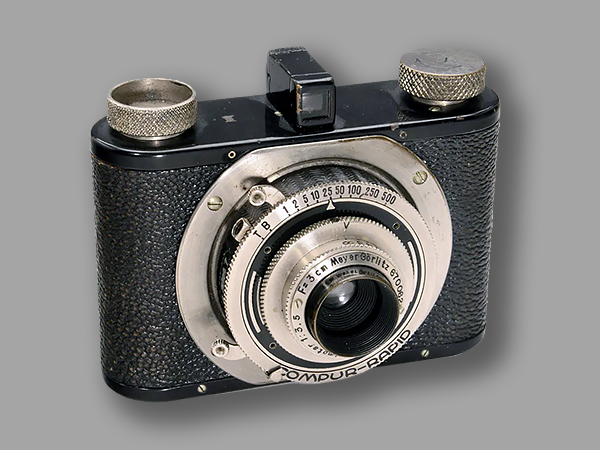
This is a Wirgin Gewirette, a compact camera produced in 1932. The Gewirette was one of the company’s earlier models and shot 3cm x 4cm images on 127 roll film. The Gewirette was a popular camera that was produced until about 1938. It was relaunched by a state run company called Adox as the Adoxette. Two versions of the Gewirette were created; one with a solid optical viewfinder and an accessory shoe, and the original with no shoe and a flip up viewfinder.
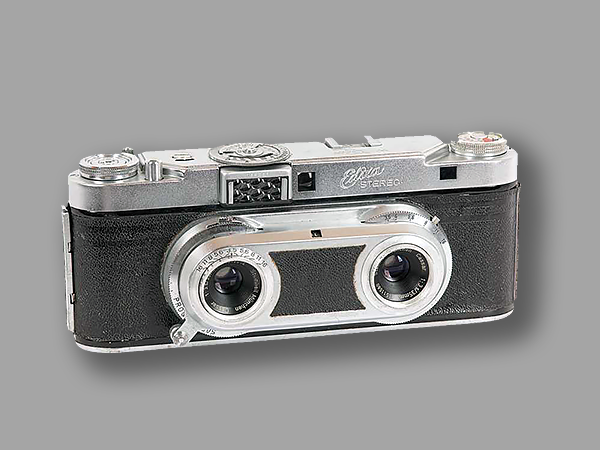
The Wirgin company joined the mid-1950s boom in stereo cameras with a series of three Edixa Stereo models for 35mm film. The Wirgin Stereo was modelled on the Edixa and looked fairly similar to the Iloca Stereo cameras. The viewfinder was conveniently placed at the top side of the camera and it had a standard wind lever that forwarded the film in several strokes. The camera used a 24x24mm frame size.
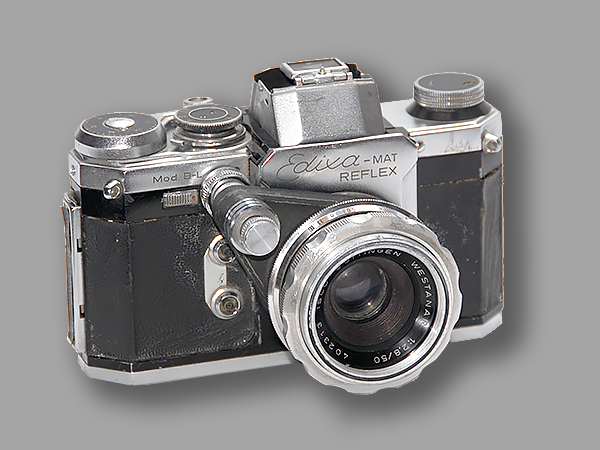
The original name of the first Edixa SLR was Komet. The Wirgin company had to change the name after complaints of two other companies with equally named products. Until 1959 four variants of the Edixa Reflex were introduced. In 1960 the four existing types were re-issued as “Edixa-Mat Reflex” series. A name variant was “Edixa-Mat Flex”. A special feature of the camera series was the exchangeable viewfinder unit. A simple top-view finder and a pentaprism finder were available.
FOUNDER: Woldemar Beier
COMPANY NAMES:
1923: Freitaler Kameraindustrie Beier & Co.; 1934: Kamerafabrik Woldemar Beier Freital II; 1958: Woldemar Beier KG; 1972: The end of Woldemar Beier KG and re-opened as VEB Kamerafabrik Freital; 1980: merged into Kombinat VEB Pentacon; 1985: merged into Kombinat VEB Carl Zeiss Jena; 1990: Kamerafabrik Freital GmbH; 1990: OFE GmbH Freital, Betrieb für Optik, Feinmechanik und Elektrotechnik; 1992: Closure of the company.
COMPANY ADDRESSES:
1926: Richard-Wagner-Straße in Freital; 1928: Obere Dresdner Straße 127, Freital; 1937: Krönertstraße 3, Freital.
Another one of the many companies that made German camera history in and around Dresden. After Woldemar Beier KG went under after the Second World War and continued as the VEB Kamerafabrik Freital, they became best known for the design and production of the compact 35mm viewfinder camera Beirette.
 Company founder Woldemar Beier was born on March 30, 1886 as the son of a steelworker and from 1900 completed an apprenticeship as a mechanic in Ferdinand Merkel’s camera factory. During his time in this company, he trained to become a master precision mechanic.
Company founder Woldemar Beier was born on March 30, 1886 as the son of a steelworker and from 1900 completed an apprenticeship as a mechanic in Ferdinand Merkel’s camera factory. During his time in this company, he trained to become a master precision mechanic.
In 1914 he co-founded the Thowe camera factory in Potschappel. Thowe had to be recapitalized as a direct consequence of 1923’s Great Inflation. Due to these financial problems, Woldemar Beier left the company and founded the camera factory Woldemar Beier at Freital – near Dresden on April 1, 1923.
Initially, plate cameras were produced with wooden bodies designed for glass plates, with lenses, shutters and leather bellows sourced from other companies. The first plate cameras of the newly founded company bore women’s names such as Edith, Erika or Lotte. In 1925 the company had already produced and sold 15,000 cameras.
In 1926 the company employed 50 people and moved to Richard Wagner Street at Freital. Two years later, in 1928, they moved again, this time to the upper part of the Dresden Street, actually to number 127. The company grew steadily and by then, 80 people worked for Beier.
Next year, 1929, cameras with light metal housings were presented for the first time, which was an absolute novelty at the time. During the spring of that year, Beier made their first appearance at Leipzig’s Photography Fair, where three plate cameras were unveiled, the Erika II, the Edith II and the Lotte II, with the new, innovative enclosure of aluminium. That same year the company began the production of their first rollfilm-folding camera, the Gloria. 1930 started with the introduction of Beier’s first two box cameras, models 0 and 1.
the trend became 35mm
Since the trend towards 35mm cameras was emerging at this time, camera factory Woldemar Beier also decided to produce a 35mm camera. In 1931 they presented their first miniature camera, the Beika at the Leipzig Spring Fair. It was rebranded in 1932 as Beira and continued in production for another two years. Also in 1931 the box camera family gets updated, with model 1A.
In 1932, Beier introduced its first 35mm camera for 24x36mm negatives: the Beier Beira, that received a Leitz Elmar 50/3.5 lens on a Compur Rapid shutter with speeds between 1 and 1/500.
However, from then on, it seems that Beier decided to focus on the production of cameras with features of lesser amount; Examples of that are Rifax, or the Voran from 1937, being probably the Beier-Flex – first shown at Leipzig’s Fair in 1938 – an exception.
At that time, Plickert developed a new type of range finder with a 6x magnifying telescope in cooperation with the company Ernst Krauss in Jena. New in 1934, were a box camera model 2 (with a diamond-shaped pattern in the front part) and in 1935 the Beier Okula. Finally, the Beira-Okula was also presented in 1935 at the Leipzig Fair.
By the end of that year, the company was renamed as Kamera Werke Woldemar Beier Freital II. In 1937 the company bought a building at Krönertstraße, 3 where they moved again production facilities. In 1938 the company introduced a 6×6 single-lens reflex camera as the Beier-Flex 6×6 in Leipzig. Just a year later, an improved version, the Beier-Flex II, was launched. Also, in 1939 the Beirette was introduced.
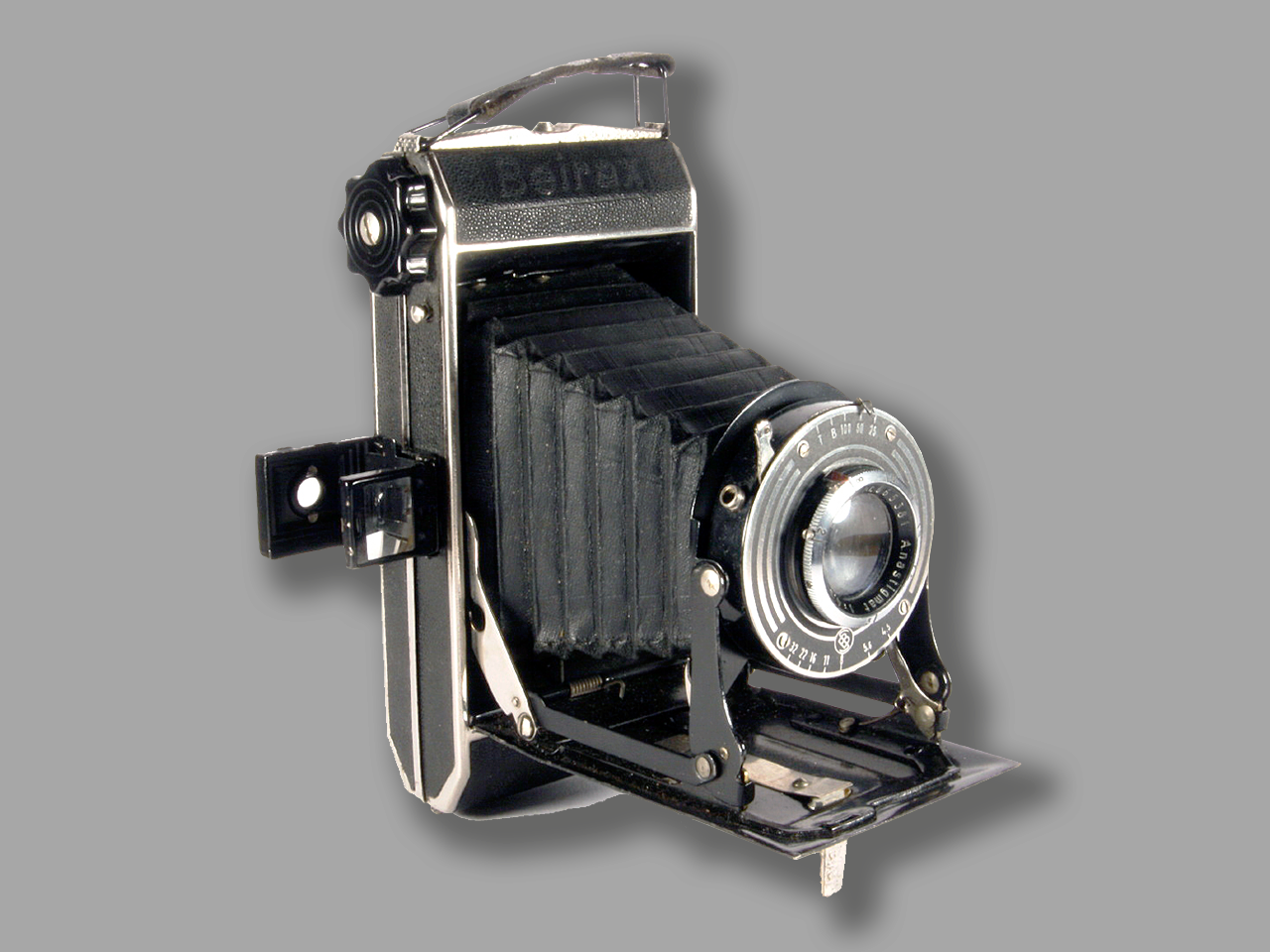
The Beirax I 6×9 rollfilm camera was introduced in 1938. After WWII production was continued from 1949 – 1955 by VEB Kamerafabrik in Freital, East Germany.
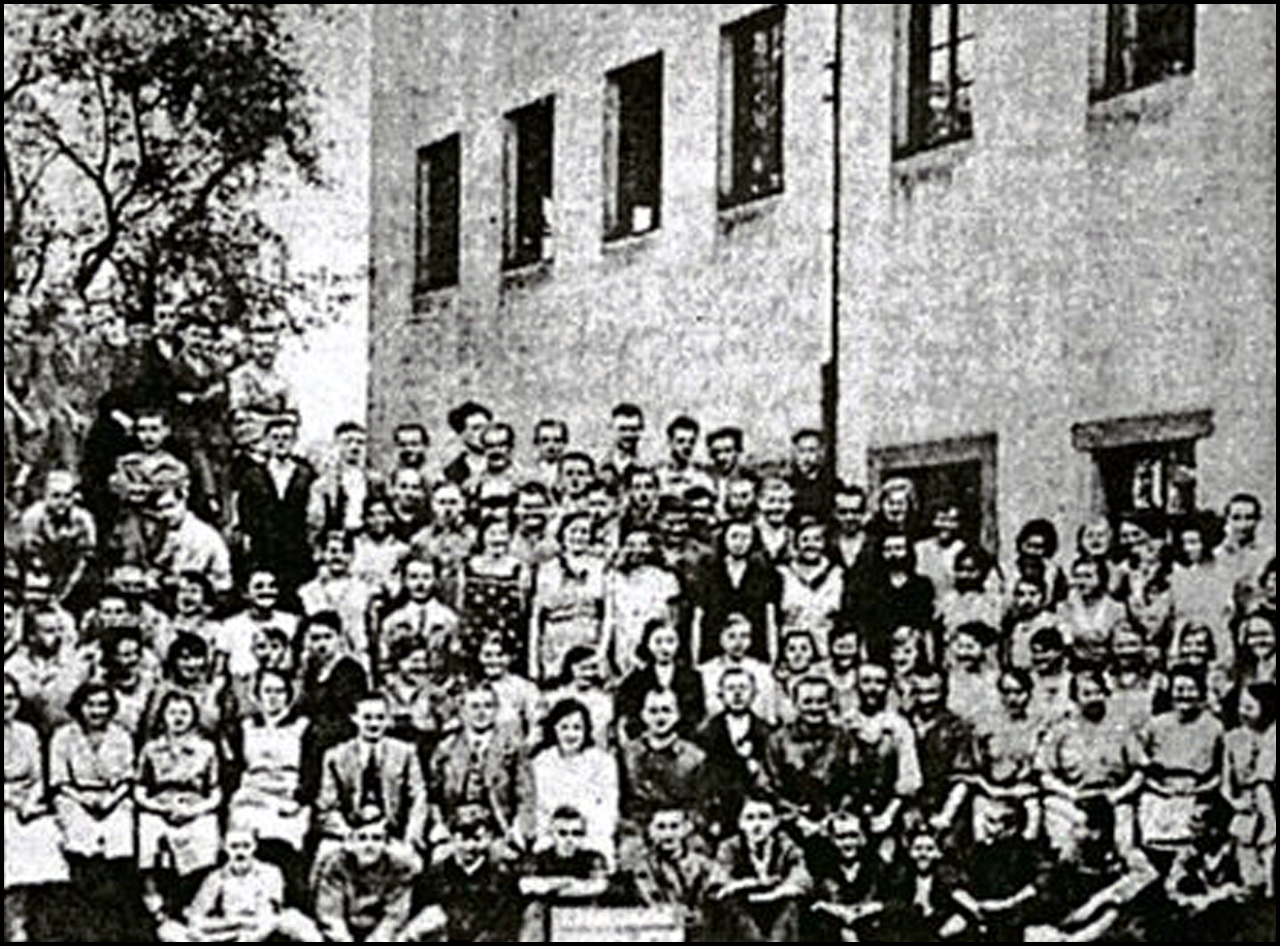
Woldemar Beier started in 1923 with just a few employees. Our picture from 1932: The Beier workforce then included more than 100 employees.
During and after WWII
Production of the Beier-Flex models lasted until 1941. After that, production had to be interrupted due to armament production. In 1941 all the facilities were adapted to suit the growing need for parts aimed at the war machine, and operating as a subcontractor Beier made parts for Askania Werke’s airplanes and U-Boote.
The company was spared the following bombing raids during the Second World War. However, after the end of the war in 1945, the Soviets fully dismantled the factory, packed everything in boxes and sent it by train to Ulyanovsk.
However, Beier managed to recover some parts and machines, and recovering whatever the Russians had left behind they resumed production. In 1945, at the age of 60, company founder Woldemar Beier began repairing cameras and other household appliances again in order to get money for cheap but scrap-prone machines and equipment.
Until the middle of 1946, production was limited to the manufacture of potato peelers, shoe horns, cigarette rolling machines, sieves and other items. Shortly thereafter, however, production of the Beirax camera resumed. During the next four years and with 25 employees, new tools and machines were made out of scraps. That way, in 1949 they resumed camera production manufacturing nearly 4,000 cameras from the 6×9 pre-war Beirax model. In 1950 5,680 Beirax were made, and started the production of the 6×6 Precisa.
Werner Beier takes over from Woldemar Beier
In 1953, due to some financial issues related with taxes from 1944, the company was put under fiduciary control and trustees investigated Beier, which in a few months was “plundered”.
After that, Woldemar Beier’s son Werner took over company’s control and one year after, in 1954, Beier was present, for the first time in its history, at world’s most important photo fair, Cologne’s Fotokina.
In 1955 the Beirax was upgraded with the addition of a new top cover that then housed a viewfinder and a flash shoe. New models of Beirax and Precisa, the Beirax II and Precisa II, were introduced at Leipzig’s Photo Fair that year.
In 1956 the Precisa was improved once more, this time by adding an uncoupled rangefinder: this new model was to be called the Precisa IIa.
Woldemar Beier died on February 18, 1957, having been one of the last independent camera makers in the GDR. From 1959 the state participated in the company. However, he was only a partner in what was actually a private company.
The company therefore received government instructions on some things. Gradually, the company continued to expand its trade at home and abroad.
In 1965, the Beirette K was the first SL camera to hit the market. Assembly line work is introduced for the Beirette. It is the first assembly line for cameras in the GDR.
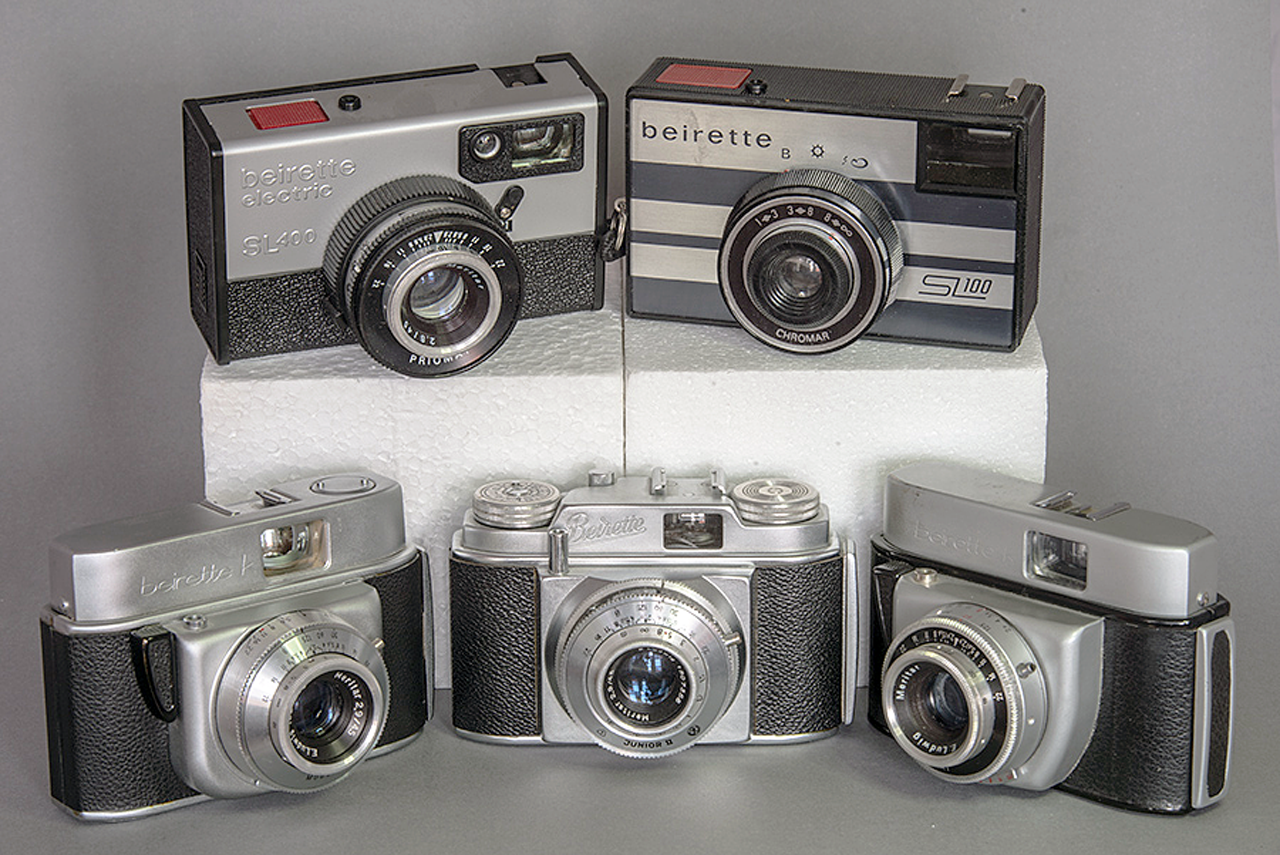
The photo shows: Top row from left: Beirette electric SL400, Beirette SL100 Bottom row from left: Beirette K, Beirette 1, Beirette 3
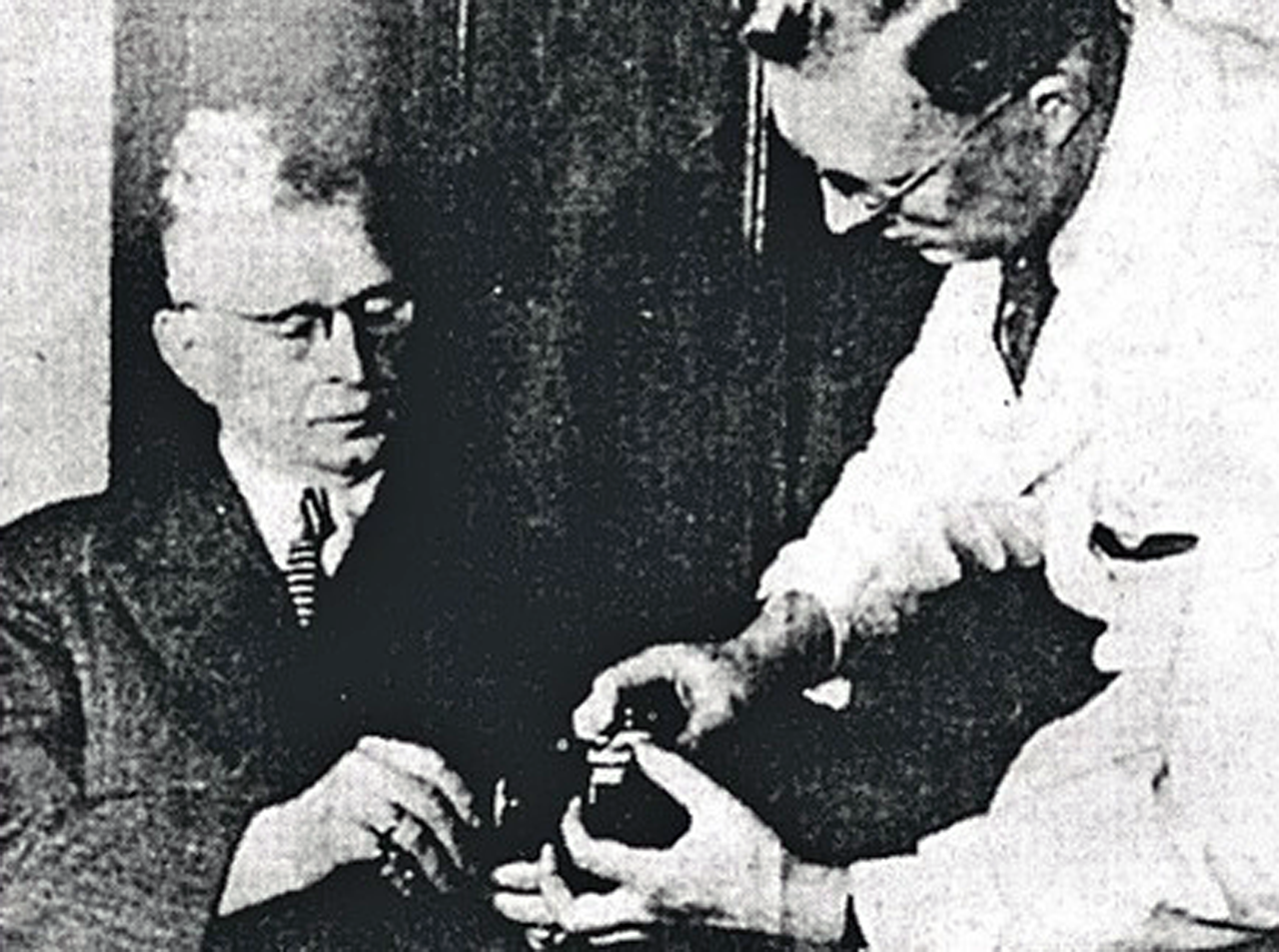
Woldemar Beier (left), founder of the Freitaler camera industry, in a technical discussion with his son and successor Werner.
Inevitably, Beier became a VEB too!
In 1972 the company was nationalized. As a result of the second wave of nationalization in the GDR, the former private company was renamed VEB Kamerafabrik Freital. But not without having produced 10,137 Beirax in 13 years, 43,082 Precisa in 11 years, 13,648 Precisa-II in 5 years and exported to more than 30 countries around the world.
Werner Beier was employed as technical director. Due to the nationalization came the demand for new types of cameras. In the period that followed, five companies, including the Karl Pouva works, were integrated into the VEB camera factory in Freital, with camera production now increasing sharply.
From January 1, 1980, the VEB camera factory Freital was subordinated to the combine VEB Pentacon, which resulted in a new company name. From 1981, the small-format camera Beirette-electronic was developed with automatic timer. In 1985, the company was subordinated to the Carl Zeiss Jena combine; with the affiliation to the VEB Pentacon Dresden combine dying out.
Final stage of this once famous company
The Beiretten were to be given the Praktica name in 1989 and there were two new models in development, the Praktica 35M and Praktica 35MF. The political turnaround dashed all the hopes of the camera builders; they were not competitive
As of July 1, 1990, part of the company was reprivatized. The rest became a GmbH called Kamerafabrik Freital GmbH. Gradually, camera production decreased and production was only made to order. From September 1, 1990, the company became OFE GmbH Freital, a company for optics, precision mechanics and electrical engineering, until it was finally dissolved on September 30, 1992.
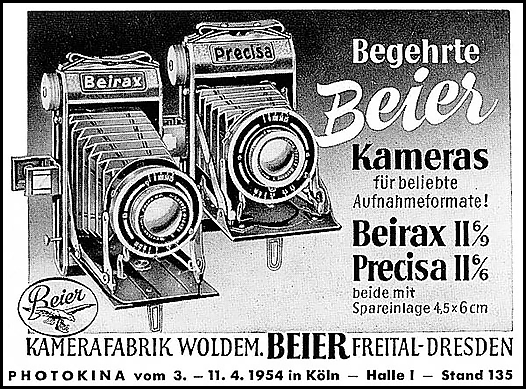
- 1923: Edith, Erika
- 1925: Lotte
- 1929: Gloria (Beier’s first roll film camera)
- 1930: Beier-Box, Box0, Box I
- 1931: Beika (later Beira)
- 1934: Beier-Box, Box2, Box2a
- 1935: Beira-Okula
- 1936: Beirax, Precisa, Rifax, Voran
- 1938: Beier-Flex
- 1939: Beier-Flex II, Beirette
- 1941: Beirette II
- 1951: Precisa 6×6
- 1955: Beirax II
- 1956: Precisa IIa
- 1958: Beirette
- 1961: Beier-Matic
- 1958-1990: several Beirette models
- 1970: Beirette SL 200 and SL 300
- 1973: Beirette SL 100
- 1974: Beirette vsn
- 1987: Beirette SL 100N
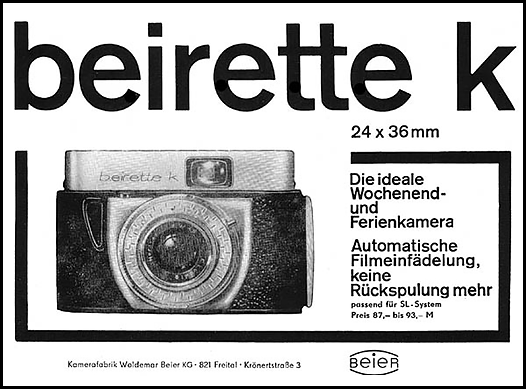
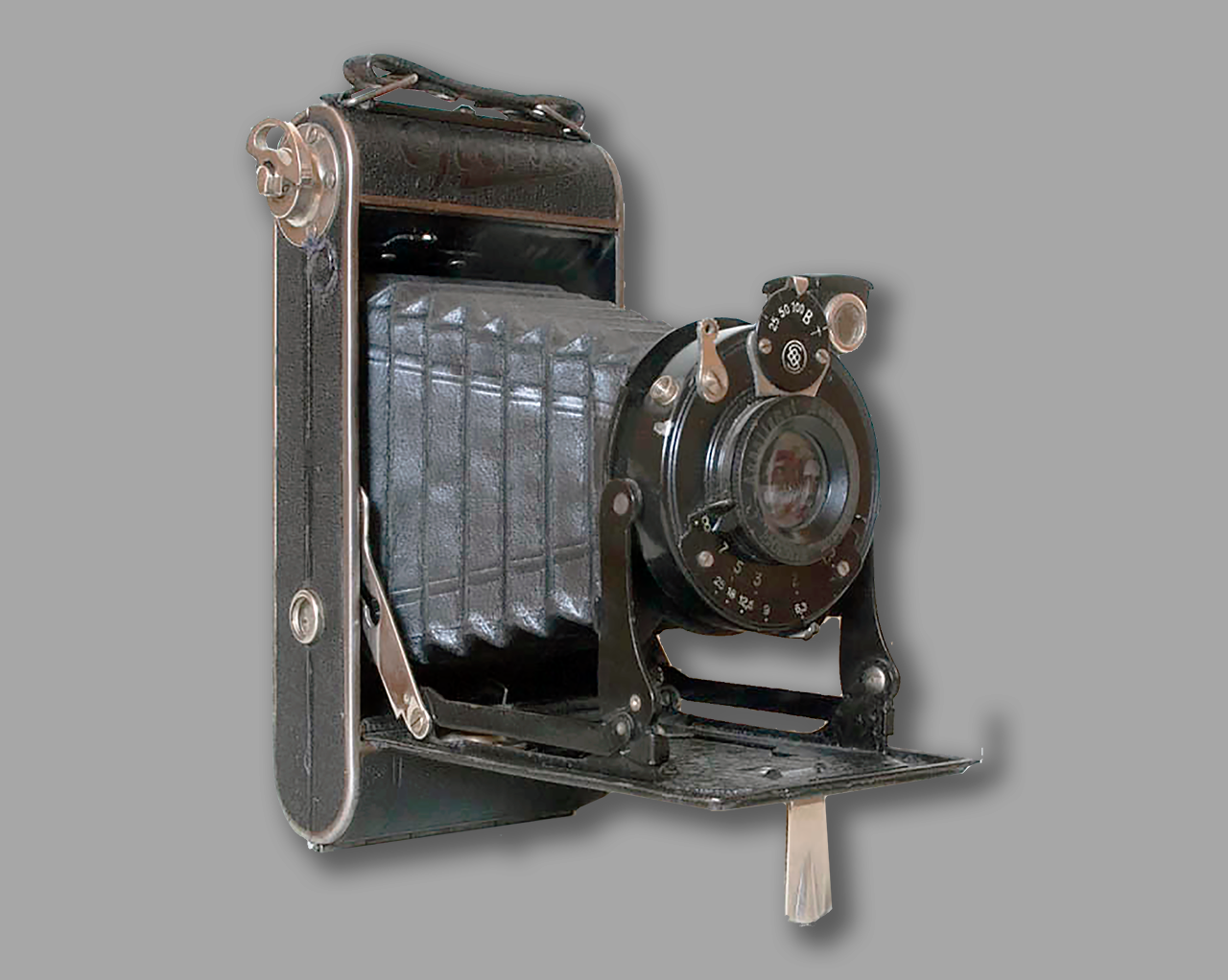
Gloria roll film camera, built from 1929. Folding camera for roll film 120 – negative format 6x9cm. Special feature: This model has the name “Gloria” embossed on the leather in front of the handle. A company logo of the Beier company cannot be found!
The lens construction is remarkably simple, the pointer attached to the lens indicates the set distance and at the same time has the stop for the infinity mark and the closest setting.
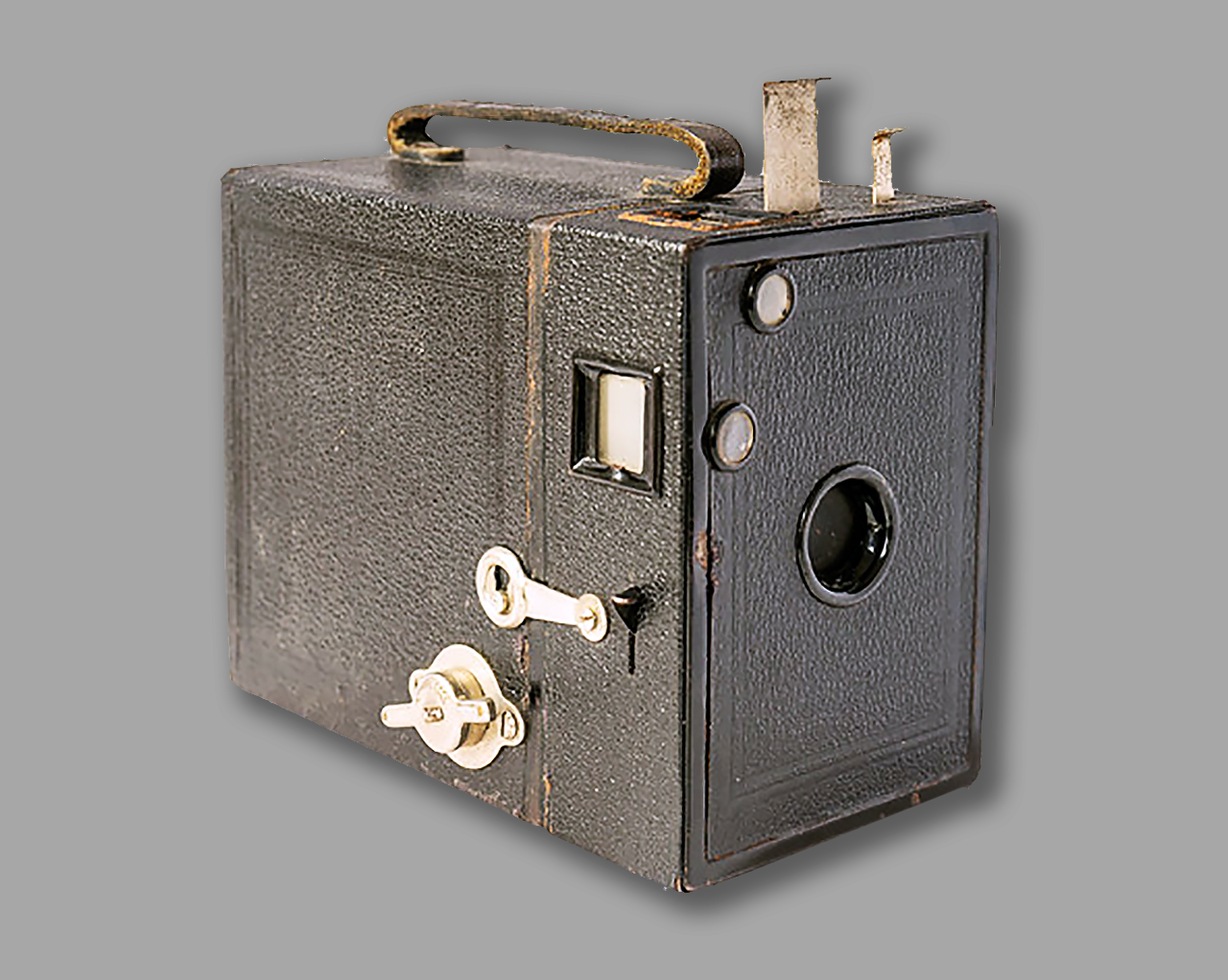
The Beier-Box 0 is a typical box camera similar to many other camera’s introduced in the late 1920’s and early 1930’s. Early examples of the EHO Box are almost identical and some of the parts were probably made in the same factory in Dresden. Four different models are distinguished known as: Beier-Box 0 (1929/30); Beier-Box 1 (1929/30); Beier-Box 2 (1934) and finally the Beier-Box 2a (1934). All four models were made of thin metal and designed to take 120 film and produce 8 pictures of 6×9 cm.
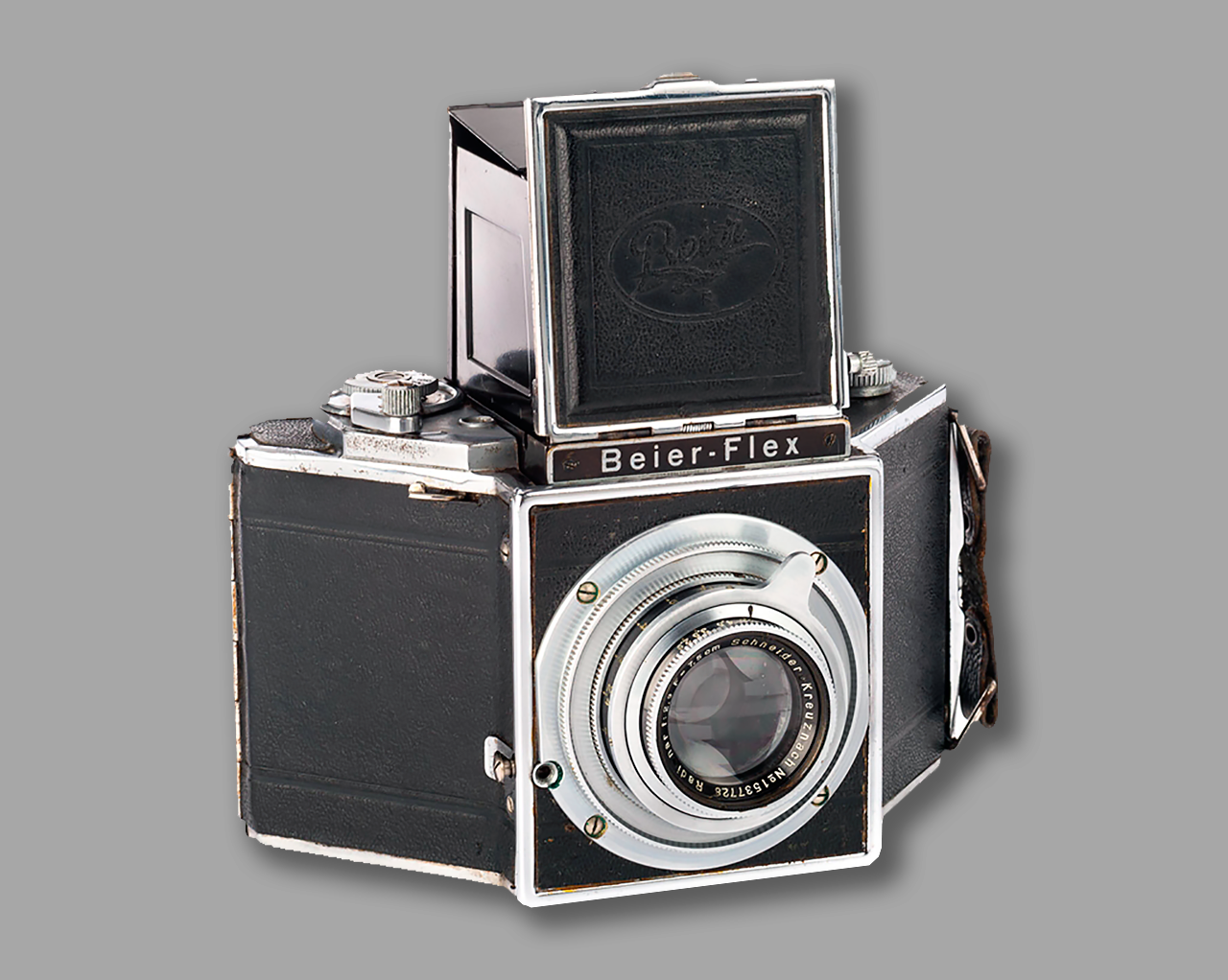
Launched in 1938, the Beier-Flex is a medium format single-lens reflex camera. It produces 6×6 negatives and uses 120 film. There are adapters for 6×4.5 plates as well as 6×6 sheet film. It was most often supplied with a Schneider-Kreuznach Xenar 3.5/7.5 cm but was also available with both Radionar and Victar lenses. There were interchangeable lenses up to 400mm. It has a focal plane shutter. There are two versions of this camera: Beier-Flex I, 1938-1941, with shutter speeds 1/500s – 1/25, and Beier-Flex II with shutter speeds 1/500s – 2s.
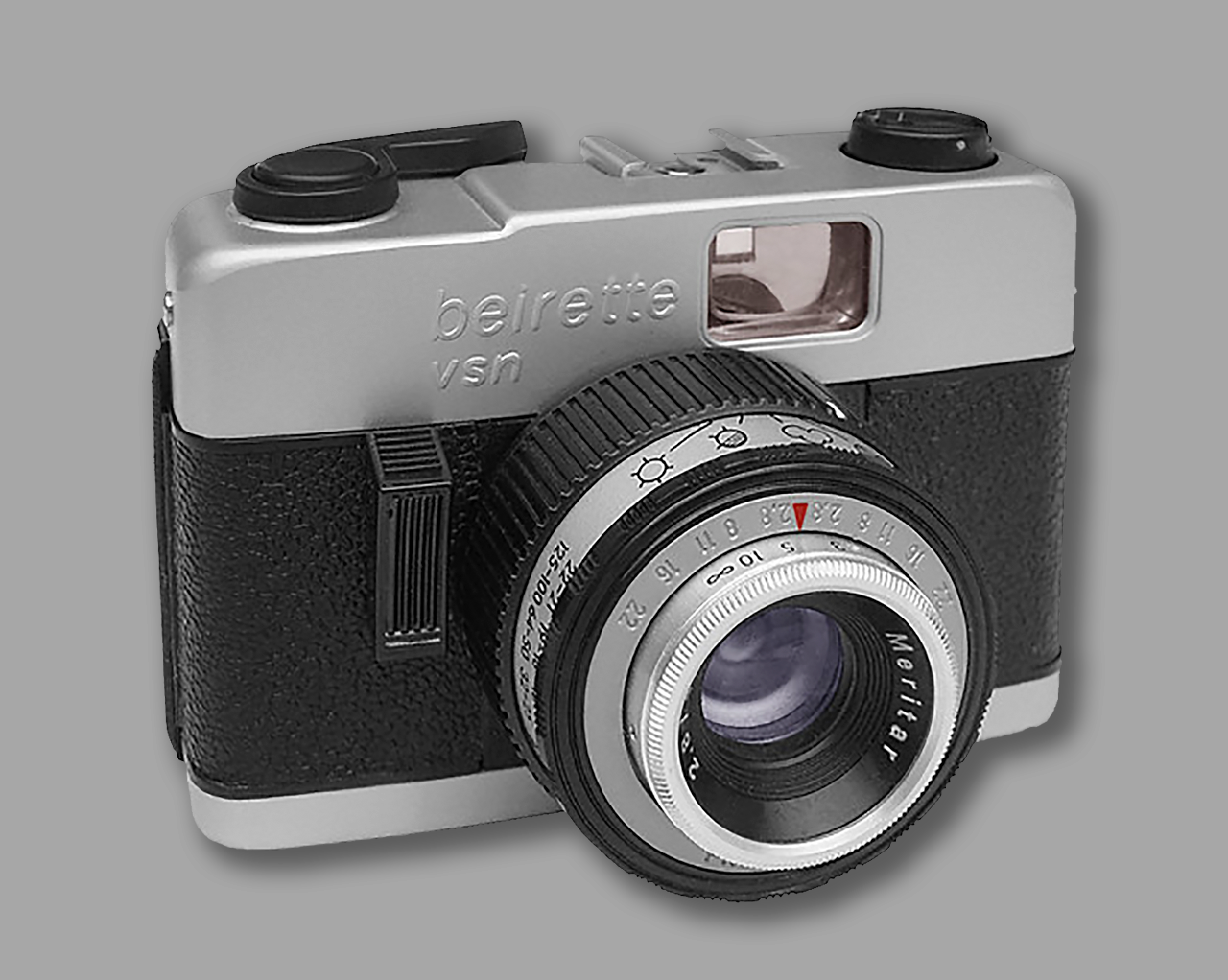
The Beirette VSN is a simple 35mm camera largely made of plastic with some aluminum. It was built in the mid-70s to late 80s and is part of the Beirette camera series. The Beirette VSN does not have a light meter. Only small weather icons are supposed to help with manual setting of the correct exposure. The Beirette VSN was also sold under other names. It was available in West Germany as Beroquick KB 135 and in England and Mexico as Beier Boots Beirette B.L. The latter was offered by British drugstore chain “Boots”.
FOUNDING DATE: 1946
FOUNDER: Hermann Wolf
COMPANY NAMES:
1946: Hermann Wolf GmbH; 1974: the company ceased.
COMPANY ADDRESS:
1946: Wuppertal-Elberfeld.
Hermann Wolf GmbH was a camera manufacturer located in Wuppertal, Germany. The company primarily served as a subcontractor in the 1950s to other better-known German firms, manufacturing lines of simple snapshot cameras that were rebranded by Adox, Braun, Gevaert, and others.
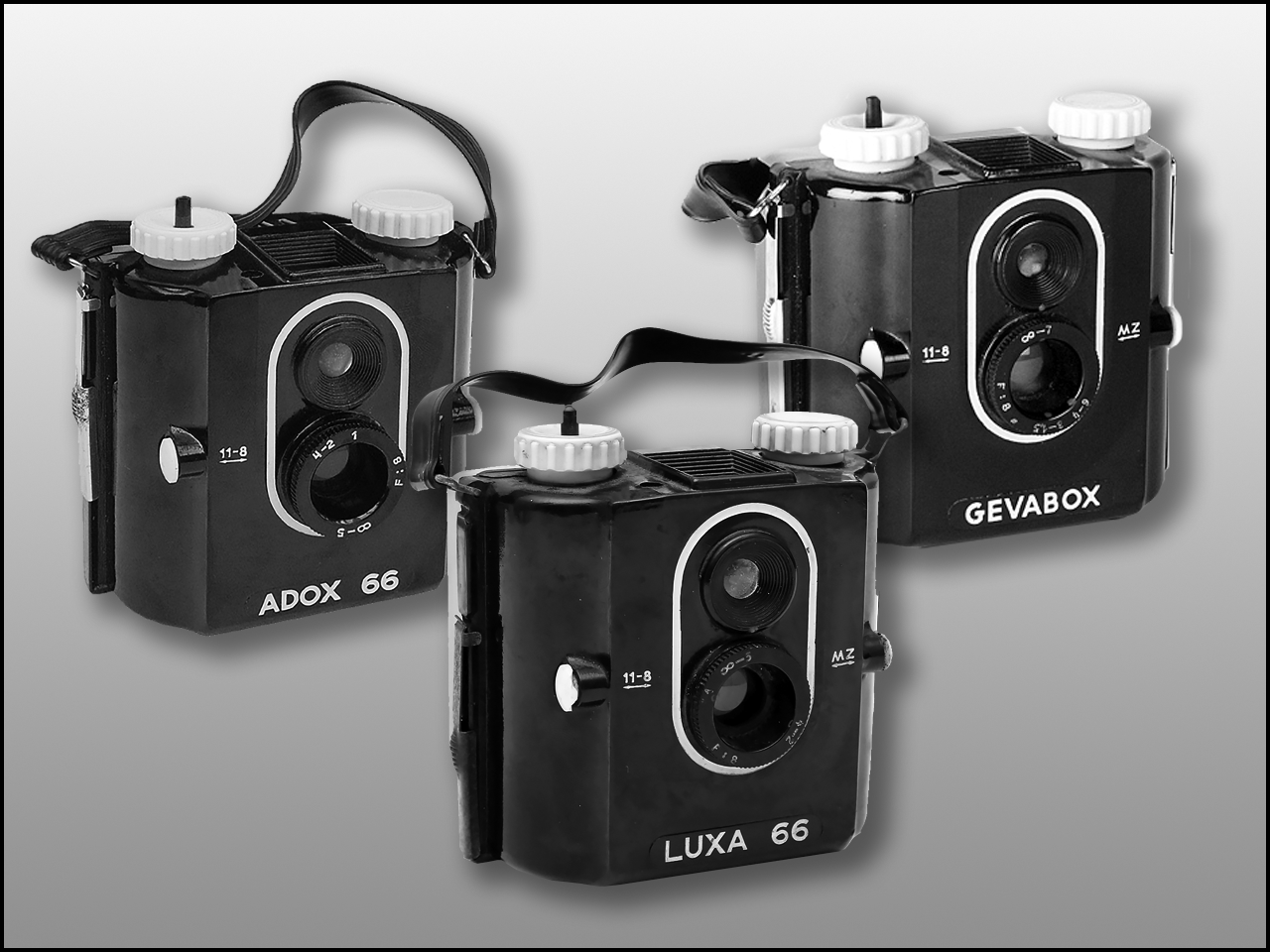
After an extensive search on the internet, I unfortunately have to conclude that I could not find much about the origins and experiences of the company Hermann Wolf from Wuppertal. This is most likely due to the fact that, due to the lack of a sales force, the company worked almost exclusively as a supplier to other German companies. The company was founded immediately after the Second World War (1946) and existed until 1973.
A few of their own camera models were:
- Luxa 66 (Wolf made it as the Adox 66 for the Adox company and as the Gevabox 66 for Gevaert in Belgium);
- Luxa Six, also sold as the Braun Imperial 6×6 and under the Reporter name used by the German “Kaufhof” department-store chain.
Camera descriptions
The Luxa 66 camera was manufactured around 1955 for square pictures on 120 film. Constructed of Bakelite with a large brilliant viewfinder located on the top to give it the appearance of a TLR. The camera was fitted with a fixed focus meniscus f8 lens and an instantaneous and time shutter. It featured a two-aperture settings f8 and f11, a tripod socket and a cable release socket.
The Wolf Luxa Six was a folding camera for 6×6 cm exposures on 120 film. It was also known as the Braun Imperial 6×6. In 1953 Wolf made the Luxa Six under their own name. Since it was produced only for one year, it is a very rare camera. It has five shutter speeds: 1/75, 1/25, 1/2, 1 and Bulb. Two apertures: f8 and f16. The right knob was used to focus the distance; respectively 1-2 meters, 3-5 meters and 7-infinity.
The interesting thing about this camera is that it has an “optical” exposure meter. Two small finders on the right and left of the viewfinder. The finder on the right is used for f16 exposures and the one on the left for f8 exposures. When holding the camera 30 cm before you, the number you still can read in the viewfinder is the (not really exact) exposure time. A later model has a slightly different front plate with two marked apertures: 11 and 22. It has a Luxar f/7.7 75mm lens in a Gauthier shutter.
FOUNDING DATE: 1896
FOUNDER: Emil Wünsche
COMPANY NAMES:
1898: Emil Wünsche Aktiengesellschaft für photographische Industrie Reick (Emil Wünsche AG); 1902: Emil Wünsche AG; 1909: merged to become part of ICA.
COMPANY ADDRESS:
1896: Reick just outside Dresden.
Emil Wünsche established a camera shop in Dresden, selling re-badged and locally manufactured cameras; in addition to cameras the company produced a wide range of photographic goods and equipment; merged in 1909 to become part of ICA.
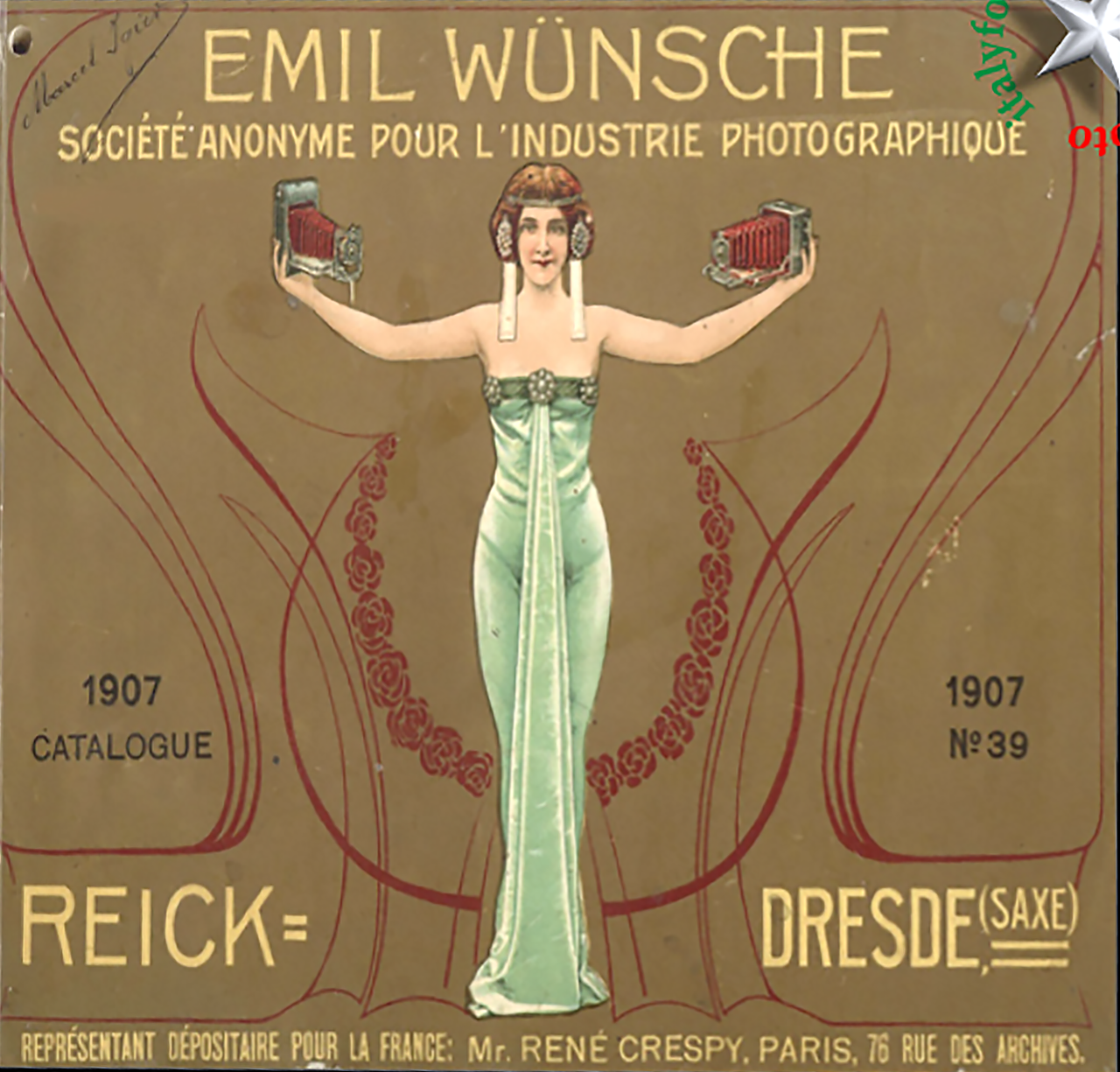
Emil Wünsche, the founder of this internationally famous German photographic shop, was born in a tiny village near Dresden in 1864. A merchant by trade, Wünsche eagerly observed the growing photographic industry, and as a natural businessman, understood the market potential of selling photographic plates and equipment.
In 1884 Emil Wünsche began business relationship and eventually acquired three small business operations on his journey to having his own business, they included Louis Lang for cameras and other assets for photography, Dienwiebel & Co., for packing and miscellaneous material and Paul Forster for the manufacturing of cameras.
Emil Wünsche opened his own shop in Dresden in 1887, listed as a manufacturer of photographic equipment and supplies, and soon became the leading area photographic equipment supplier. Soon, he added Richard Hüttig & Sohn cameras to his growing inventory, labelling them with his own name.
Top-of-the-bill machinery
Emil Wünsche’s success allowed him to grow rapidly enough to compete with other Dresden camera suppliers like Hüttig and Heinrich Ernemann, and so he decided to open a camera factory in Reick, a small village near Dresden, in 1896. He moved his shop to this location shortly thereafter. The factory was considered a technological marvel for its time, with its machines powered by a 120-horsepower steam engine. In addition, the factory site included a small medical unit, canteen, and fire brigade.
By 1898, the Wünsche Company had 206 employees, and provided communal housing for 27 employee families. Sadly, however, a fire that same year caused severe structural damage. Undeterred, Wünsche rebuilt his factory, and his business was larger and seemingly more successful than ever.
The Wünsche Company grew to employ 350 workers, and although it did not make its own lenses, the lenses were purchased from the finest suppliers of the day – Voigtlander, Zeiss, and Steinheil, among others. The Wünsche factory manufactured a vast selection of cameras, including Ada and Bosco mirror cameras, Afpi and Reicka folding cameras, and Mars Detective and 99 cameras.
Wünsche commits suicide
In 1902, the Wünsche Company (also known as Emil Wünsche AG) was flourishing as Dresden’s second largest manufacturer of cameras. But shockingly, Emil Wünsche took his own life that year at his home in Reick. Rumours swirled that Mr Wünsche committed suicide over personal problems and there was speculation that his business had grown too quickly and he overextended himself financially. Happily, however, for the photography medium, the Wünsche Company continued under the watchful eye of Wünsche’s partner Louis Lang.
Under Louis Lang’s leadership, the production diversified to include plate cameras, darkroom equipment, magnifiers, viewfinders, flash units, and roll film for moving pictures. However, local competition remained fierce, and strikes by Dresden camera employee threatened corporate profitability. Therefore, Mr Lang wisely agreed to a merger, and in 1909, the Wünsche Company became part of Dresden’s International Camera Aktiengesellschaft (ICA). In 1926, ICA became part of the Zeiss Ikon conglomerate, which prior to the Second World War, was the leading manufacturer of 8 mm movie cameras. Zeiss Ikon ceased its operations in 1972.
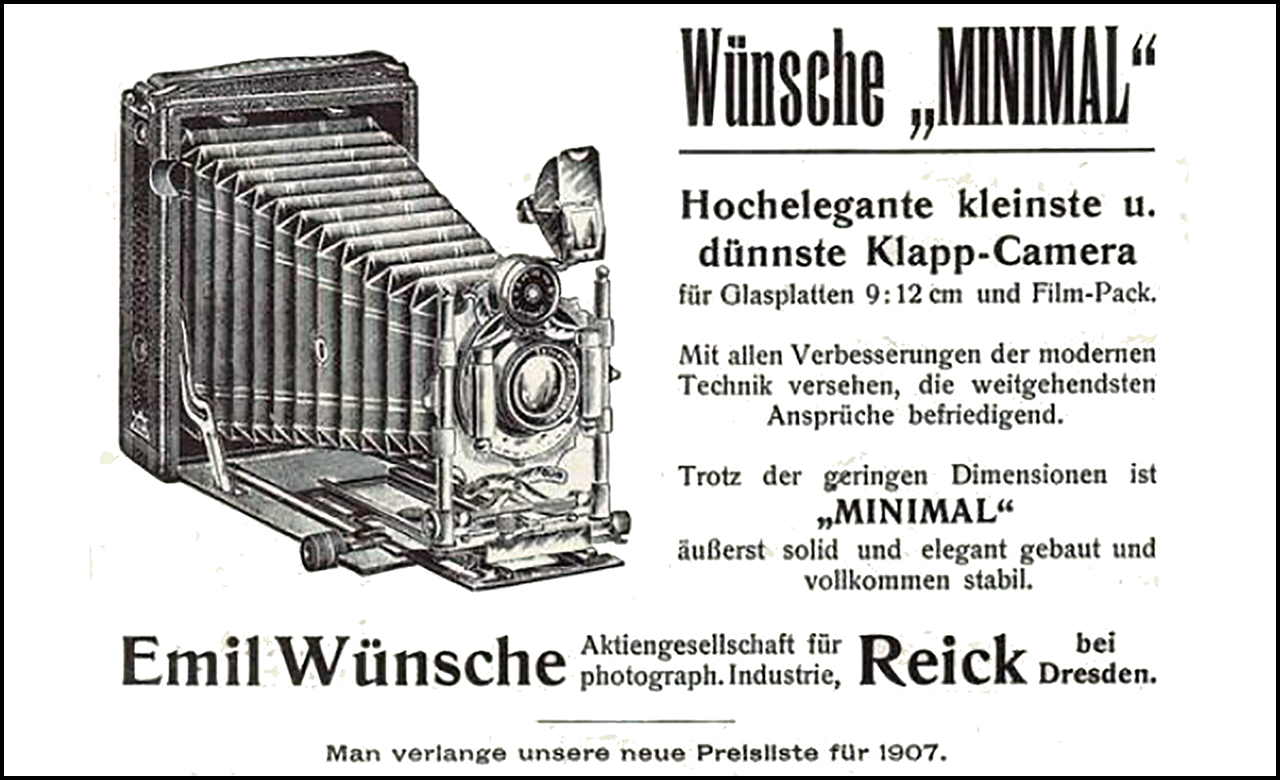
Emil Wünsche advertisement from 1907
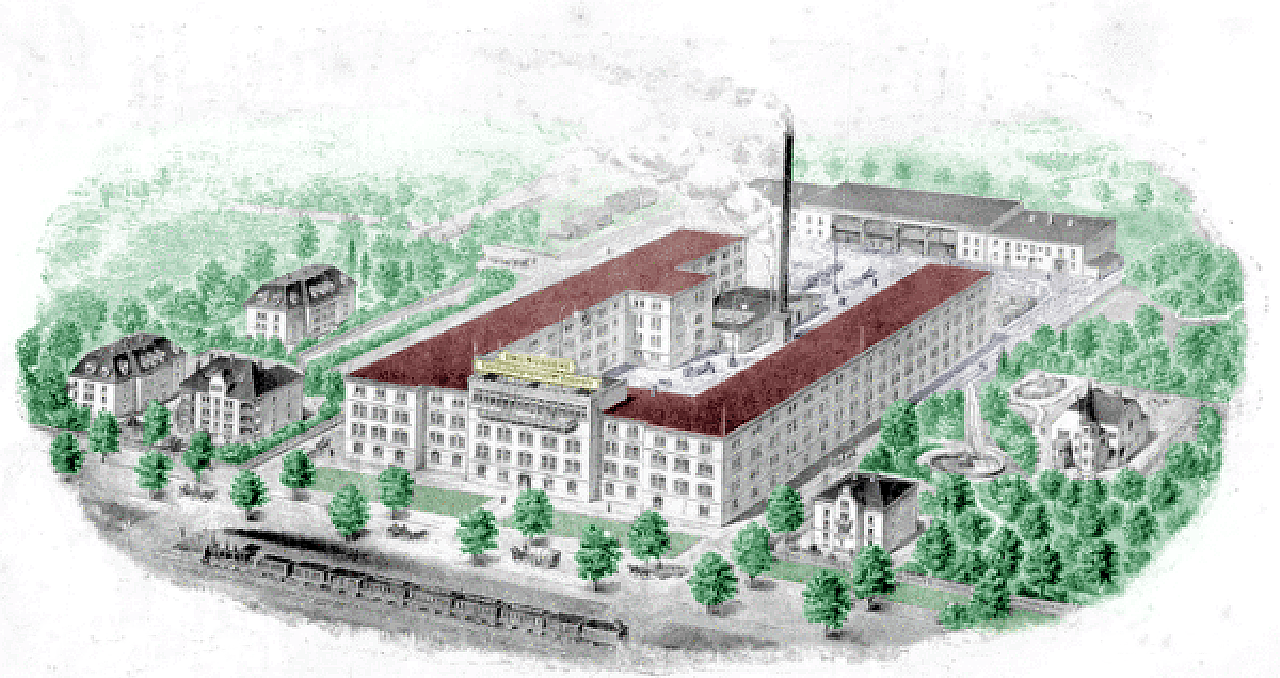
Emil Wünsche Factory 1898
Wünsche cameras (alphabetic)
A – B
- Afpi
- Bosco 98 & 99
- Bosco Klapp
- Bosco Model III
- Bosco Model IV
- Bosco Model V
- Bosco Reflex
- Bosco Stereo
- Briefmarken
D – J
- Diamond
- Elite
- Excelsior
- Favorite
- Furor
- Gnom
- Juwel Model I
- Juwel Model III
- Juwel-Klapp
K – M
- Knox
- Kosmos
- Legion
- Lilli
- Lola
- Lux
- Mars 99
- Mars Detective
- Meteor
M – S
- Minimal
- Nero
- Nixe
- Nixe-Minimal
- Nymphe
- Photo Jumelle
- Reicka-Automat
- Schuler Apparat
- Sport & Sport II
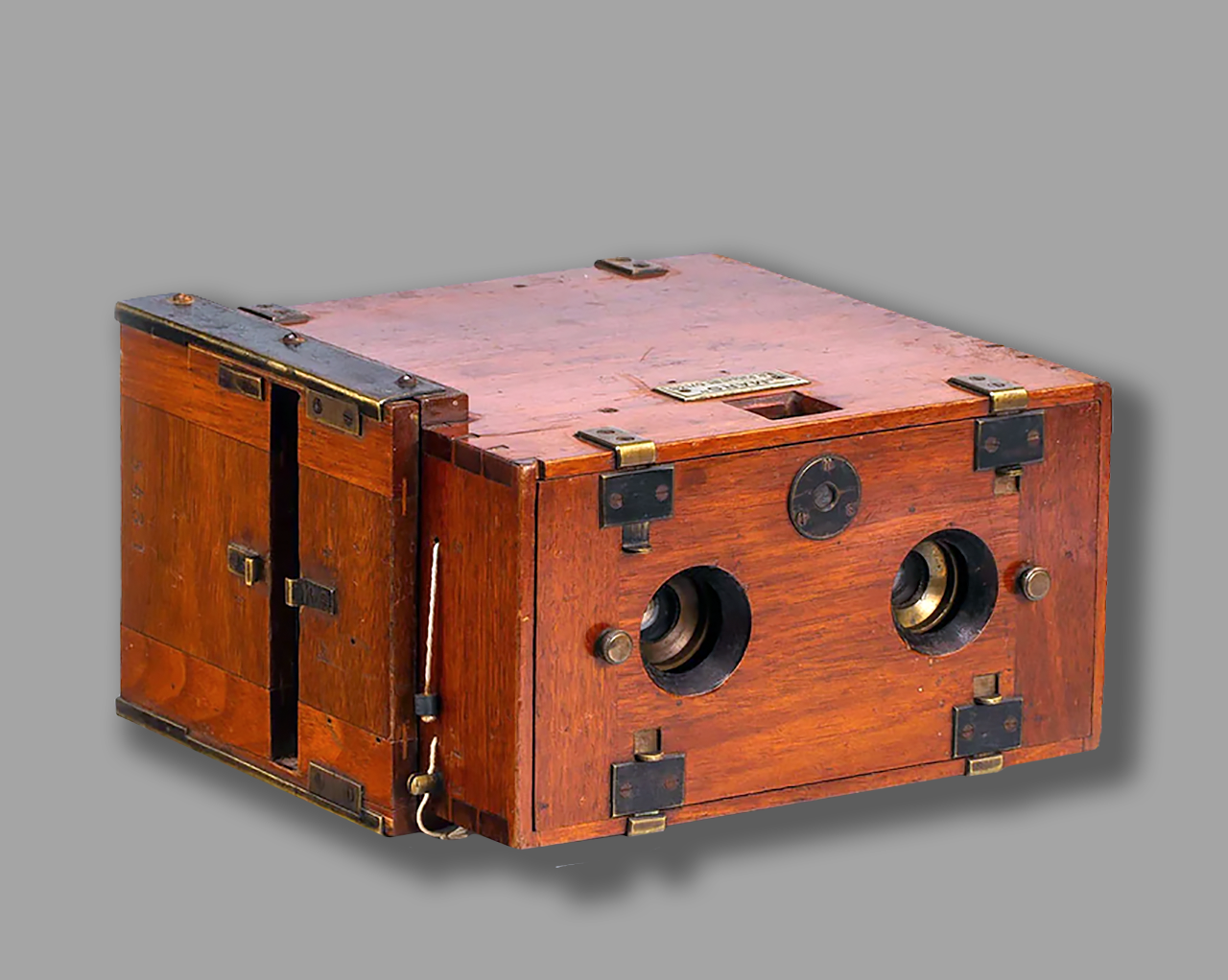
The Mars camera is a detective camera made in mahogany from about 1890 to 1896. It was made for twelve 6x9cm or 9x12cm plates, or ten 12×16.5cm plates. The Mars is a magazine camera: the plates, in metal holders, are stored in the back part of the camera body, under spring pressure. After each exposure, the camera can be turned upside-down, and the holder with the exposed plate falls into the wooden changer.
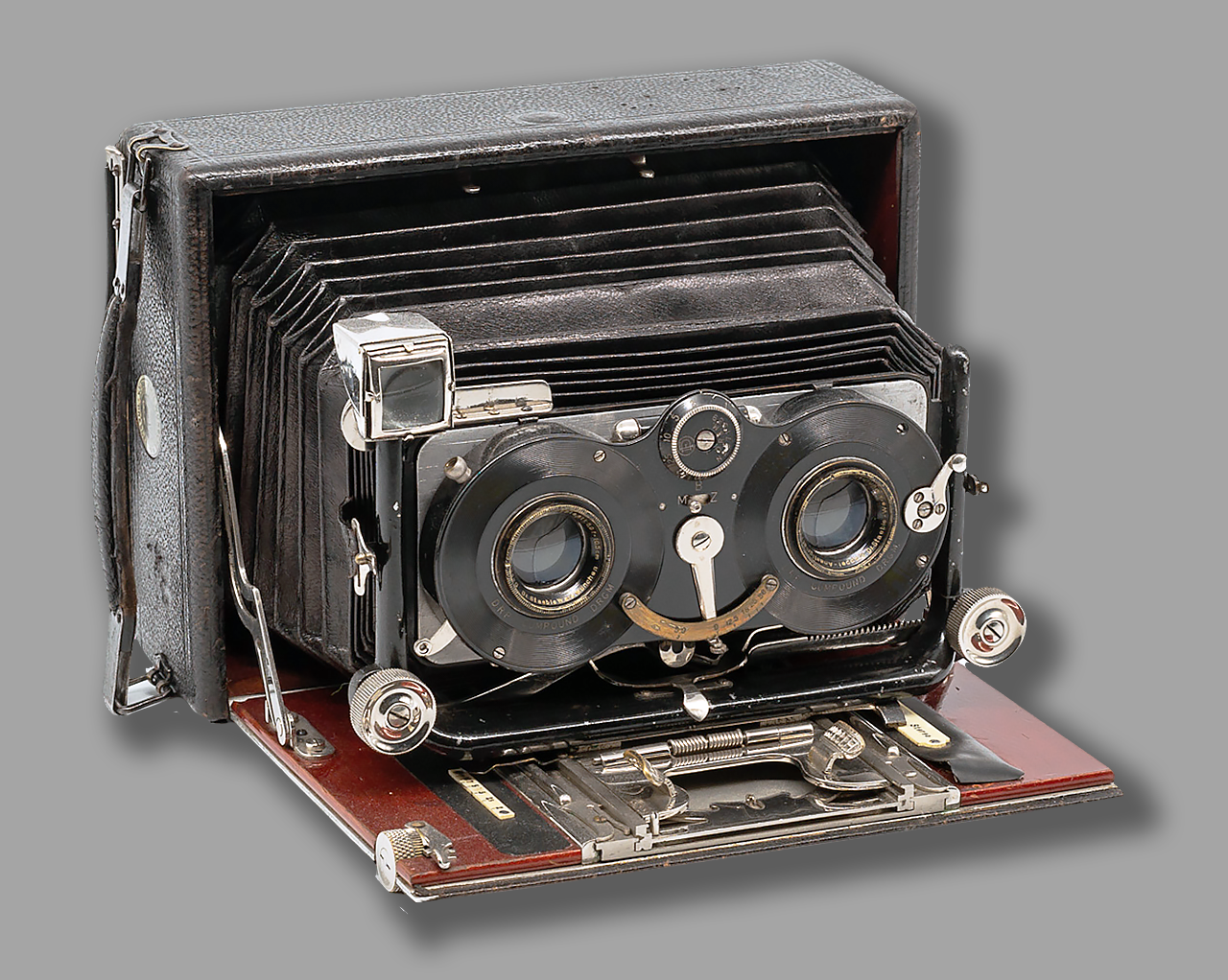
The Reicka is a folding plate stereo camera. The camera is named after the Reick district where Emil Wünsche’s factory was located. The camera supports 10x15cm glass plate negatives and filmpacks. Emil Wünsche’s stereo cameras are quite rare these days. The camera dates from c1907 – 1908. The camera was continued after Wünsche AG merged into ICA and was labeled ICA Stereo Reicka.
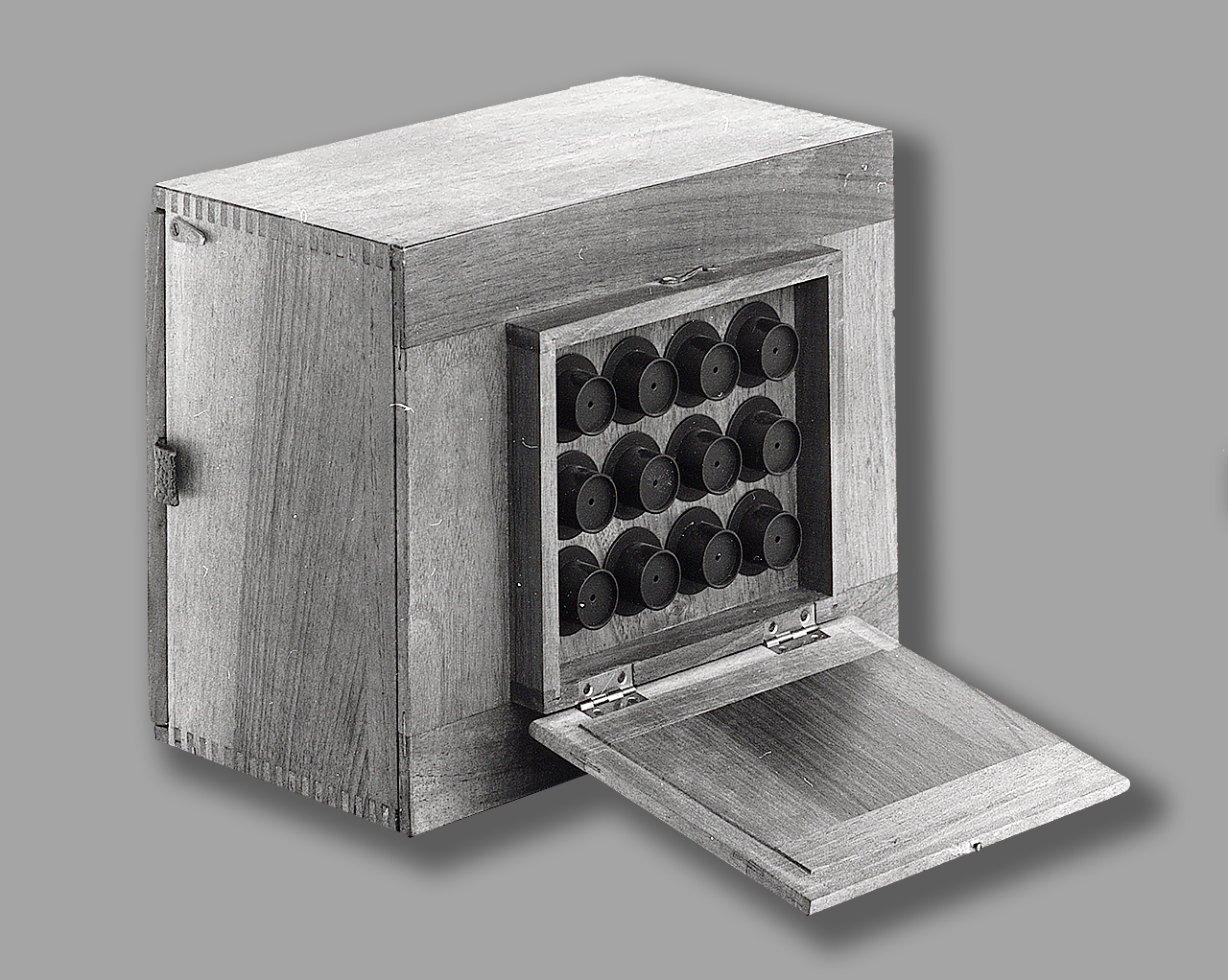
The Briefmarken Camera (Stamp camera) for the quickest and most consistent production of stamp portraits was manufactured by Emil Wunsche, of Dresden Germany in circa 1895. It was designed with 12 lenses to capture 12 stamp size portraits 28 x 32 mm simultaneously on 12x16cm size plates.
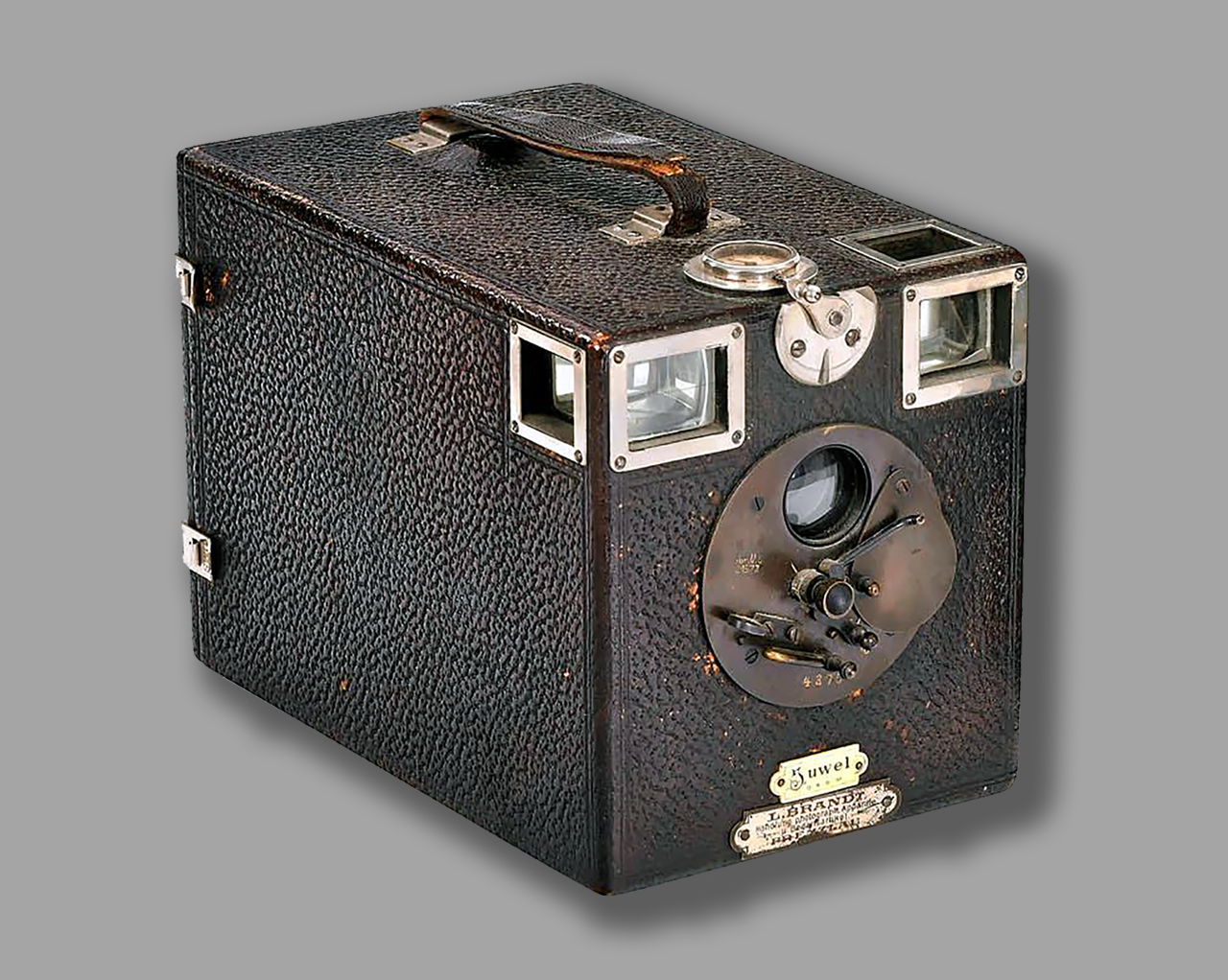
The Juwel-Klapp-Camera is an example for Emil Wünsches standard amateur folding cameras. It was a folding bed camera for 9x12cm film plates. It has a Newton type viewfinder and a kind of pneumatically triggerable moment shutter. It was offered with lenses from renowned makers: Voigtländer’s Collinear, Steinheil’s Orthostigmat or Goerz’s double anastigmat.
FOUNDER: Yoshimasa Ushiyama (???)
COMPANY NAMES:
1949: Yashima Seiki Company; 1953: Yashima Optical Industry Company, Ltd.; 1957: Yashica, Inc., New York; 1958: Yashica Company, Ltd.; 1983: Yashica Company Ltd. was acquired by ceramics giant Kyocera; 2005: Kyocera halted production on all Contax, Yashica, and other Kyocera-branded film and digital cameras; 2008: Kyocera sold the trademark rights of Yashica to Hong Kong-based MF Jebsen Group under its subsidiary JNC Datum Tech International, Limited; 2015: 100 Enterprises International Group Co. Ltd. has been appointed as Yashica Global Sole Agent.
COMPANY ADDRESS:
1949: Nagano, Japan.
Yashica was a Japanese manufacturer of cameras, originally active from 1949 until 2005 when its then-owner, Kyocera, ceased production. In 2008, the Yashica name re-appeared on cameras produced by the Hong Kong-based MF Jebsen Group. In 2015, trademark rights were transferred to Yashica International Company Limited and appointed 100 Enterprises International Group Co. Limited as Yashica Global Sole Agent.
The company began in December 1949 in Nagano, Japan, when the Yashima Seiki Company was founded with an initial investment of $ 566.-.  Its eight employees originally manufactured components for electric clocks. Later, they began making camera components, and by June 1953 they had introduced their first complete camera, the Yashimaflex, a twin-lens reflex (TLR) medium-format camera designed for 6×6 cm medium format film.
Its eight employees originally manufactured components for electric clocks. Later, they began making camera components, and by June 1953 they had introduced their first complete camera, the Yashimaflex, a twin-lens reflex (TLR) medium-format camera designed for 6×6 cm medium format film.
While the first Yashimaflex used lenses labelled Tri-Lausar, successive models used Yashikor and Yashinon lenses. The Tomioka Optical Works, beginning a relationship that would last for many years, manufactured all of these lenses for Yashica. Late in 1953, Yashima Seiki Company became Yashima Optical Industry Company, Ltd.
In 1957, Yashima founded Yashica, Inc., a subsidiary arm in New York City to manage marketing efforts in the United States. 1957 also marked the introduction of a popular new TLR camera series, the Yashica Mat line, as well as an 8 mm cine movie camera.
During the next year and a half, Yashima continued to grow, with 1,982 employees by 1958. Later in 1958, Yashima changed its name to Yashica Company, Ltd, when it acquired the Nicca Camera Company, Ltd. The Nicca acquisition was fortuitous, as the designs acquired assisted Yashica in expanding its product line into advanced 35mm rangefinder cameras.
Zunow became part of Yashica
The Yashica Pentamatic, an advanced, modern 35mm Single Lens Reflex (SLR) camera with a proprietary bayonet-mount, automatic diaphragm (offered only with the Auto Yashinon 50mm/1.8 lens), and interchangeable lenses, was introduced in 1959. As before, Yashica continued to source its lenses from the Tomioka Optical factory.
Around 1959 – 1960, Yashica acquired the assets of the bankrupt Zunow Optical Industry Co. Ltd. Though a small company, Zunow had become known for limited production of a very advanced 35mm SLR camera, along with several high-quality, fast 35mm camera and 8 mm cine (movie) lens designs and a proprietary bayonet-mount lens system similar to that of Yashica Pentamatic. With the assistance of Tomioka Optical Works, Yashica adapted Zunow lens designs into its own 8 mm turret cine (movie) cameras.
Like Zunow, Yashica found it difficult to gain market acceptance with its proprietary SLR lens mount, and redesigned its SLR camera line in 1962 to accept the Contax/Praktica M42 lens mount. The new SLR camera was introduced as the Penta J.
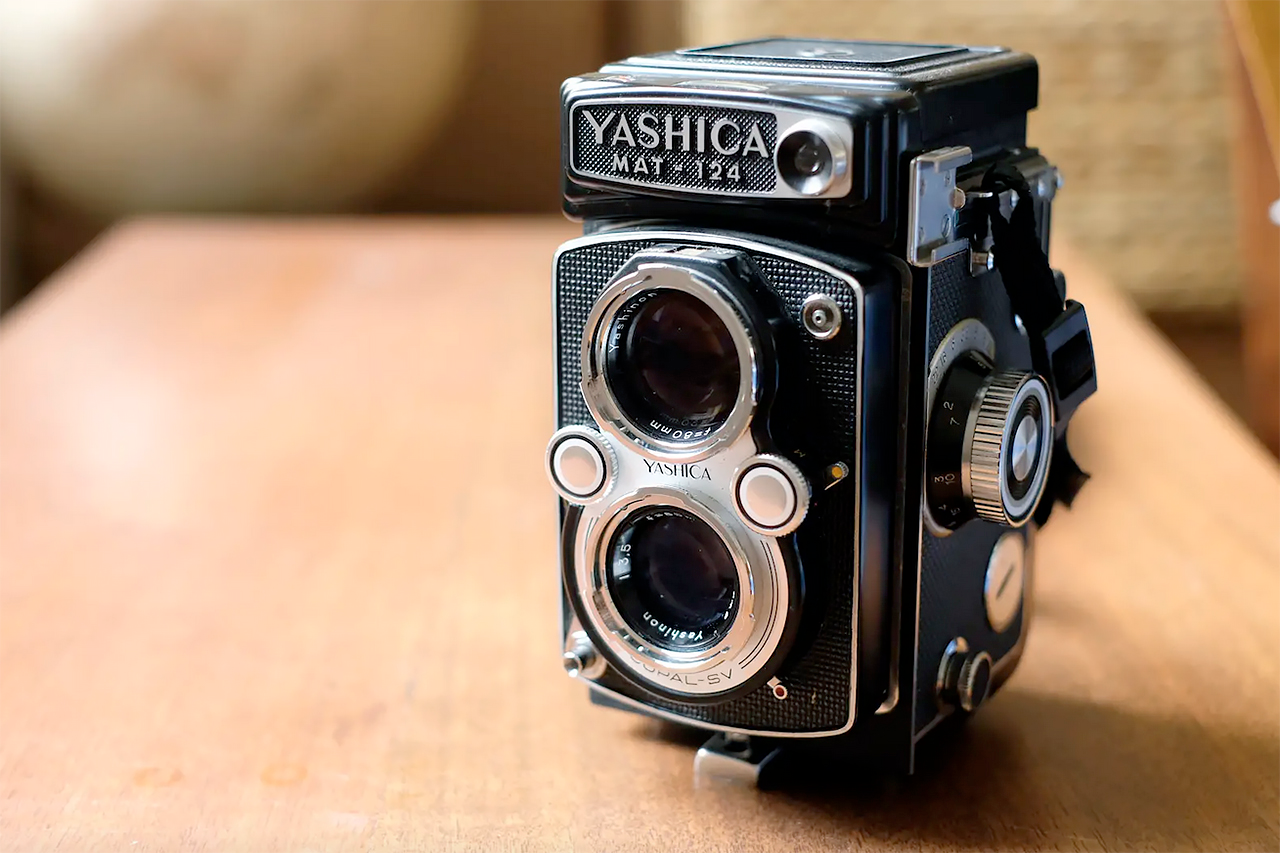
The first Yashica TLR with crank advance was the Yashica-Mat, released in 1957. The Yashica Mat-124 was made up until 1970. It is based on the similar Yashica-24 and Yashica-12. The replacement Yashica Mat-124 G was made from 1970 till 1986 and was the last TLR produced by Yashica. Even if this type of camera seemed to be obsolete at the time of its appearance, the 124 G was a success.
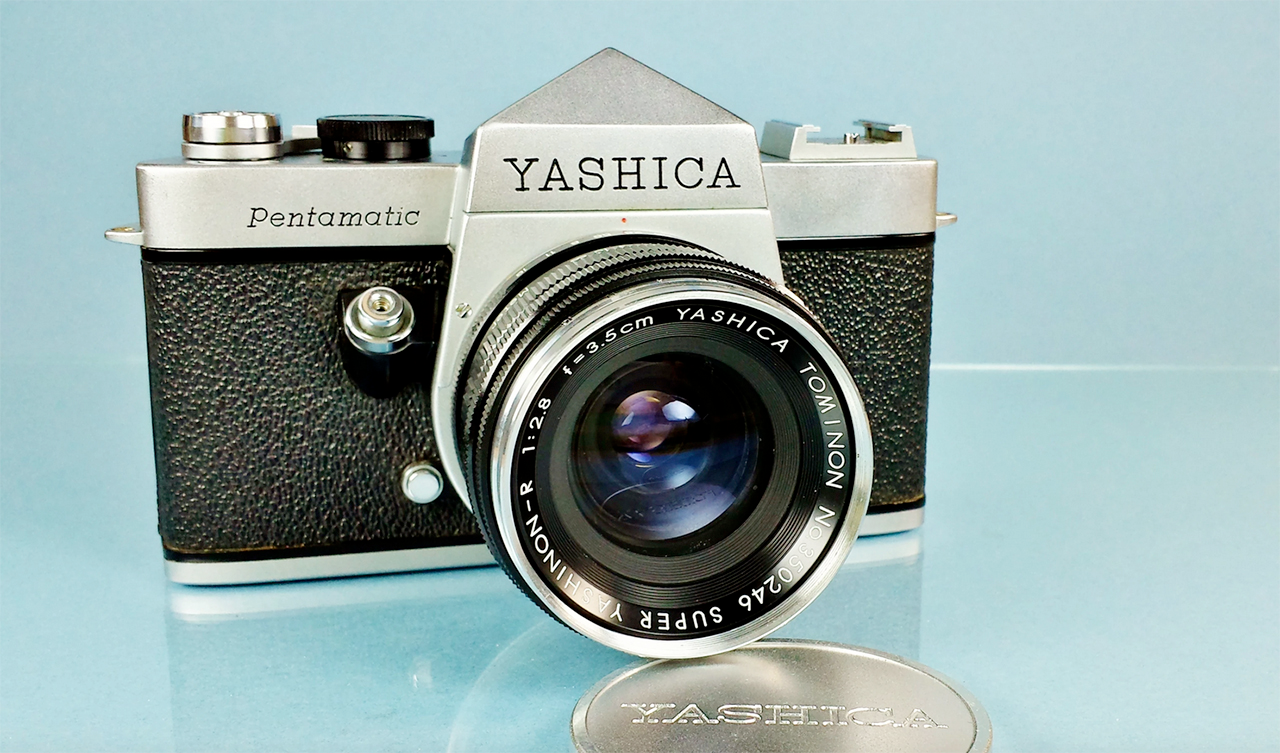
The Yashica Pentamatic, designed in 1959 and released during the Spring of 1960, was Yashicas first 35mm single lens reflex (SLR) camera. It is a mechanically-operated camera, equipped with a focal plane shutter with speeds of B to 1/1000th of a second. No built-in self timer and no TTL exposure metering. There were three camera variants: The Pentamatic, the Pentamatic II and the Pentamatic S. The Pentamatic II came out in August 1960 and the S came out by January 1961.
In December 1965, Yashica introduced the world’s first commercially successful electronically controlled 35mm camera, the Electro 35, a popular rangefinder model that in various model sub variants eventually sold 8 million units.
The company continued to expand its international markets, and in August 1968, Yashica finally acquired its lens manufacturer, the Tomioka Optical and Machine Manufacturing Co., Ltd. (later renamed the Tomioka Optical Co. Ltd.). By this time, Tomioka was one of the largest and most reputable lens manufacturers in Japan. Sales of 35mm SLRs continued to grow steadily, and Yashica was quickly acquiring a reputation for both electronic camera expertise and high-quality optics.
1968 also marked the year of Yashica’s last major TLR camera design, the Yashica Mat-124, a popular model, which combined some of the best features of Yashica’s earlier TLR cameras.
In 1968, Yashica introduced the TL Electro-X 35mm single lens reflex (SLR) camera and produced it until 1974. It had a screw thread M42 lens mount, for its interchangeable lenses. It also had an all-electronic through-the-lens exposure meter in the viewfinder using lighted arrows (not true LEDs, which were first introduced with the Fujica ST801). The Copal Square SE shutter, a vertically travelling metal blade focal plane shutter made by Copal Corporation, used in the camera, was electronically controlled.
Yashica in the seventies
In 1972, Yashica introduced the TL Electro 35mm SLR camera, which was similar to the Pentax Spotmatic camera made by the Asahi Optical Company (Pentax). The TL Electro also used a lighted exposure meter display similar to that in the TL Electro-X, as well as the M42 screw threaded lens mount for its interchangeable lenses.
In 1973, Yashica began collaboration with Carl Zeiss; the company called it Top Secret Project 130 to produce a new, professional 35 mm SLR with an electronically controlled shutter bearing the Contax brand, and called the RTS (for “Real Time System”).
A new prestige line of Yashica/Contax lenses designed by Carl Zeiss were introduced for the camera, with a common C/Y bayonet mount allowing lens interchange between all 35 mm Contax and Yashica SLR camera models. The F. Alexander Porsche Group was hired to complete an ergonomic and styling study of the new camera. The new Contax RTS appeared at the Photokina in 1974, and became a commercial success.
Yashica soon introduced several new 35mm SLR cameras beginning with the FX-1 (1975) and FX-2 (1976).
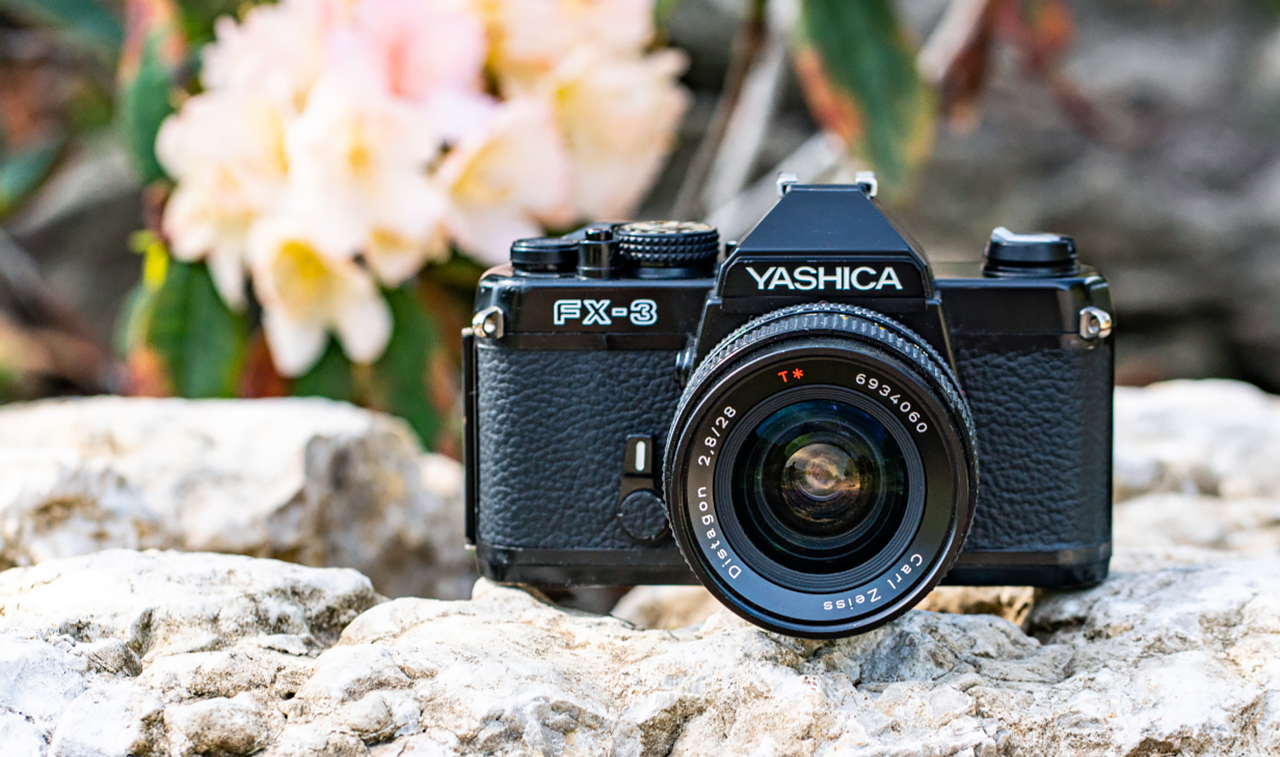
The FX-3 was a very popular, manually-operated, 35mm single lens reflex camera, released in 1979. The camera is very compact and lightweight for an SLR design, and weighs about 450 grams. One of the camera’s greatest attributes is that it will accept all manual-focus Yashica / Contax lenses, including the superb Carl Zeiss T* lenses intended for the Contax line. The FX-3 was available only in black, although there was also an otherwise identical FX-7 model that came in a chrome finish.
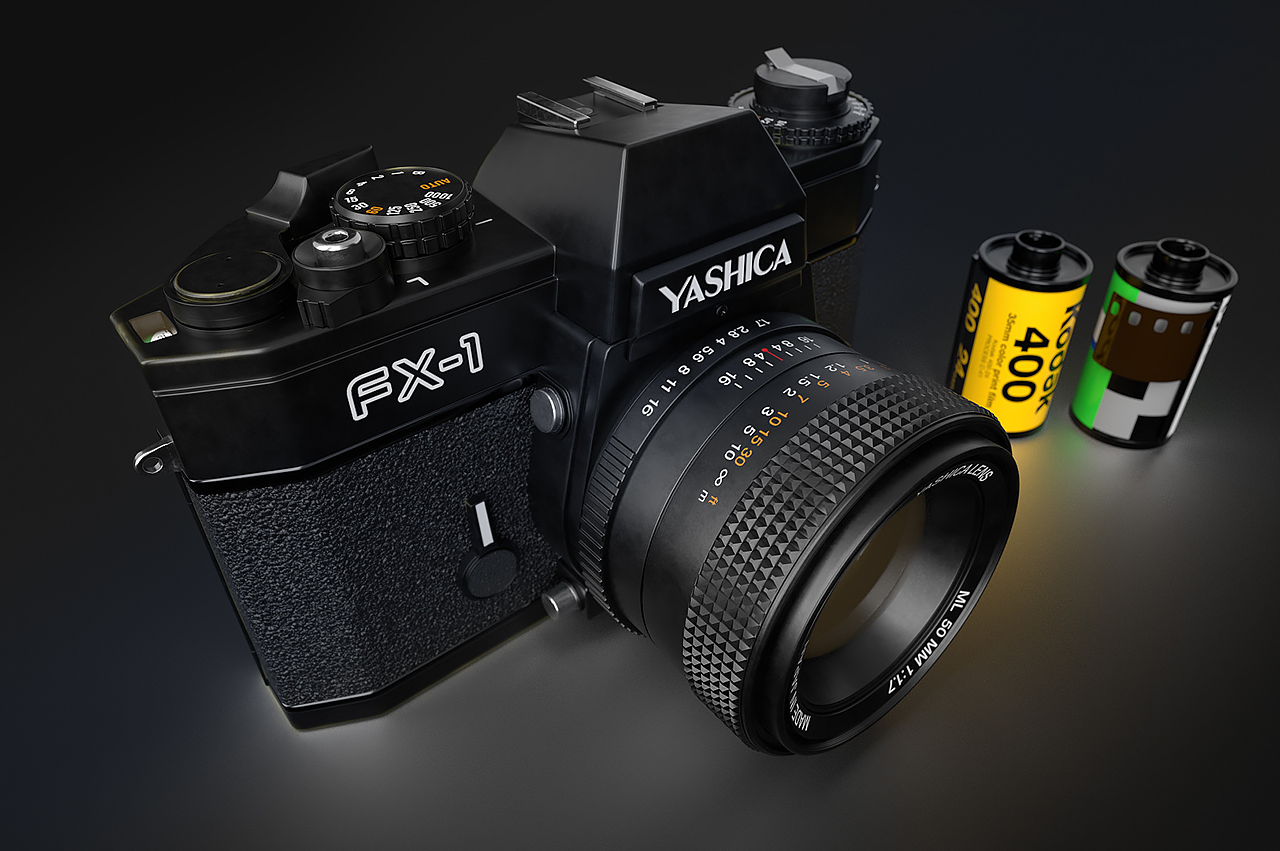
The Yashica FX-1 was a 35mm film, mechanically operated, single lens reflex camera. Introduced in 1975, it was the first Yashica SLR to be marketed with the Contax/Yashica common bayonet mount, allowing use of both Yashica and Contax/Carl Zeiss T* lenses. The aperture display is on top with the selected setting in green. The film advance lever can accommodate multiple smaller strokes.
More about the FR and its successors
Also in 1976, in response to the success of the Contax RTS, Yashica developed the upscale Yashica FR using some of the features of the RTS, including its electromagnetic shutter release. The FR was capable of using the entire range of Carl Zeiss T* lenses.
In contemporaneous tests, the FR was described as being tougher in some ways than the more expensive Contax RTS, including better sealing against dust and contaminants. This practice of “pairing” similar Contax models with more affordable, less full-featured, but still high-quality Yashica models would continue for the next ten years.
The FR was quickly followed in April 1977 by the FR-I and FR-II. The FR-I was a 35 mm SLR offering even more features of the RTS, including an electronic shutter with both manual and aperture priority modes, and marked the high point for the Yashica brand in competing with Nikon, Canon, and Minolta for the semi-professional SLR camera market.
In 1979, Yashica introduced a new inexpensive 35 mm consumer SLR, the FX-3, intended for entry-level buyers. Like all Yashica manual-focus bodies, the affordable FX-3 featured a C/Y lens mount that would also accept Carl Zeiss T* lenses. This simple, lightweight manual-exposure SLR camera sold well, and with minor revisions, stayed in production until 2002.
Loosing its independence and camera production
 In October 1983, Yashica Company Ltd. was acquired by ceramics giant Kyocera. Initially, the merger resulted in few outward changes. The manual-focus (MF) FX-103 Program, introduced in 1985, continued the “pairing” tradition of high-end Yashica SLR models with Contax (Contax 159 mm), and was the first Yashica SLR with TTL flash and full programmed exposure capabilities.
In October 1983, Yashica Company Ltd. was acquired by ceramics giant Kyocera. Initially, the merger resulted in few outward changes. The manual-focus (MF) FX-103 Program, introduced in 1985, continued the “pairing” tradition of high-end Yashica SLR models with Contax (Contax 159 mm), and was the first Yashica SLR with TTL flash and full programmed exposure capabilities.
After 1983, all Yashica brand cameras were marketed by Kyocera (Kyoto Ceramics), which also made newer Contax cameras. By 1985, the company was facing intense market competition from other manufacturers, especially Minolta, which had introduced a competitively priced and advanced autofocus 35 mm SLR camera.
Yashica eventually introduced its own autofocus 35 mm SLR camera line that was overpriced and poorly marketed in comparison to its competition. In response, Kyocera gradually repositioned the brand as a budget-priced point-and-shoot camera line, moving production from Japan to Hong Kong, and discontinued high-end SLR camera production.
In 2005, Kyocera halted production on all Contax, Yashica, and other Kyocera-branded film and digital cameras. In 2008, Kyocera sold the trademark rights of Yashica to Hong Kong-based MF Jebsen Group, and is under its subsidiary JNC Datum Tech International, Limited.
Yashica’s products from JNC Datum Tech International including digital cameras, digital camcoders, digital photo frames, portable DVD players, digital audio players, digital voice recorders, binoculars, mobile phones and SD cards. In March 2015, 100 Enterprises International Group Co. Ltd. has been appointed as Yashica Global Sole Agent.
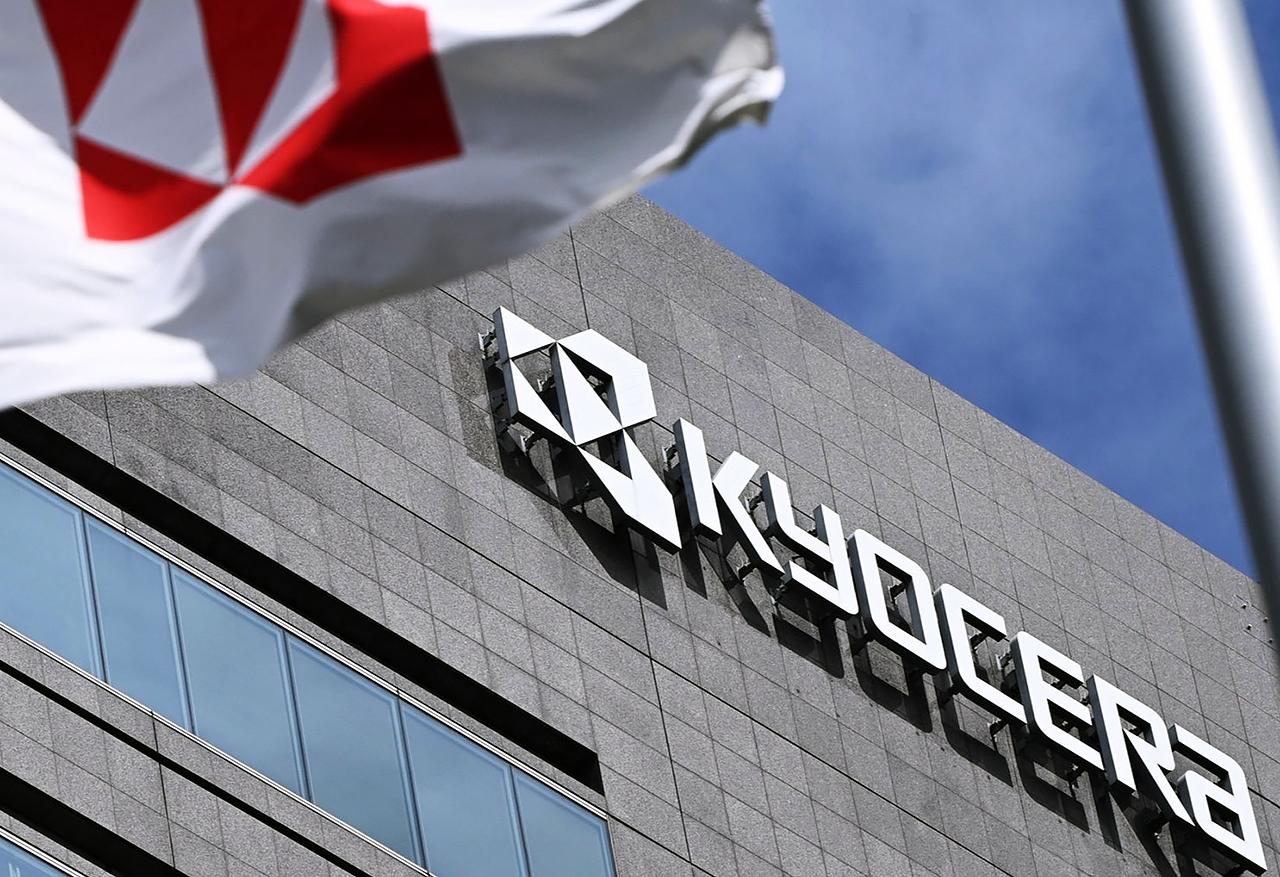
Kyocera Corporation is a Japanese multinational ceramics and electronics manufacturer headquartered in Kyoto, Japan. It was founded as Kyoto Ceramic Company, Limited in 1959 and renamed in 1982. It manufactures industrial ceramics, solar power generating systems, telecommunications equipment, office document imaging equipment, electronic components, semiconductor packages, cutting tools, and components for medical and dental implant systems.
comprehensive Camera list
120/220 film TLR
- Pigeonflex (1953)
- Yashimaflex (1953)
- YashicaFlex (1953)
- MolfoReflex (1953)
- Yashicaflex A, AS I & II (1954)
- Yashica C (1955)
- Yashicaflex Rookie (1956)
- Yashica B (1957)
- Yashica LM (1957)
- Yashica-Mat (1957)
- Yashica A (1958), D (1958)
- Yashica 44 (1958)
- Yashica-D (1958)
- Yashica 635 (1958)
- Yashica Auto (1959)
- Yashica Mat LM (1959)
- Yashica 44LM (1959)
- Yashica 44A (1960)
- Yashica Mat EM (1964)
- Yashica E (1964)
- Yashica 24 (1965)
- Yashica 12 (1967)
- Yashica-Mat 124 (1968)
- Yashica-Mat 124 G (1970)
- Yashica-Mat 124 B (1975) Brazil*
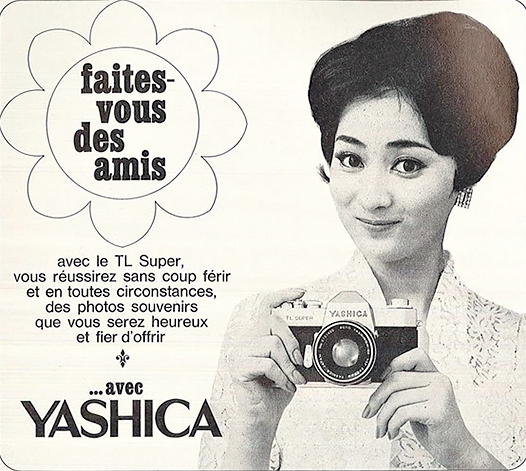
35mm rangefinder
- Electro 35
- Electro 35 CC
- Electro 35 MC
- Electro 35 CCN
- Electro 35 GL
- Electro 35 GS
- Electro 35 GSN
- Electro 35 GT
- Electro 35 GTN
- Electro 35 GX
- Yashica 35
- Yashica 35-f
- Yashica minister iii
- Yashica 35J
- Yashica EE
- Yashica Lynx
- Yashica MG-1
- Yashica Minimatic C
- Yashica Minimatic S
- Yashica Minimatic EL
- Yashica Minister 700
- Yashica Minister D
- Yashica Campus
35mm SLR dental cameras
- Dental Eye I
- Dental Eye II
- Dental Eye III/Medical Eye (Only Japan)
Super 8mm movie cameras
- Yashica Super YXL-1,1
- Yashica Super YXL-100
- Yashica Super-40k
- Yashica Super-50
- Yashica U-Matic Super 8
- Yashica Nicca Super 30 Electronic
- Yashica Super 8 10
35mm SLR cameras
- Electro-AX
- Electro-X
- FFT
- FR
- FR-I
- FR-II
- FX-1
- FX-2
- FX-3
- FX-3 Super
- FX-3 Super 2000
- FX-7
- FX-7 Super
- FX-8 (Only China)
- FX-70
- FX-80 (Only China)
- FX-103
- FX-800 Super (Only China)
- FX-A (less than 1400 pcs; US & Europe)
- FX-D
- FX-D SE
- Penta J (and successors J-3, J-5, J-7 & J-P)
- Pentamatic
- Pentamatic II
- TL-E
- TL Electro
- TL-Electro-X
- TL Super
- 107MP/TR-7000/Revue AC-7/Daewoo 107MP
- 108MP/Revue AC-8/Yodobashi Camera (Japan Only)
- 109MP
- 200AF
- 210AF (Kyocera Brand Only)
- 230AF
- 270AF/230 Super
- 300AF
35mm Compact cameras
- Yashica AF-J
- Yashica AF-J 2
- Yashica auto focus
- Yashica auto focus motor
- Yashica auto focus motor D
- Yashica Auto Focus Motor II
- Yashica LAF
- Yashica Lynx
- Yashica MF-2
- Yashica MF-2 super
- Yashica MF-3
- Yashica MF-3 super
- Yashica 35-ME
- Yashica Motor J
- Yashica Partner
- Yashica Partner AF
- Yashica T
- Yashica T-Zoom / T4 Zoom / Kyocera T-Zoom
- Yashica T2 / Kyocera T
- Yashica T3 / Kyocera T Scope
- Yashica T3 Super / Kyocera T Scope2
- Yashica T4 / T4 (Safari Edition)
- Yashica T4D / Kyocera Slim T / Slim T (Safari Edition)
- Yashica T4 Super / T5
- Yashica T4 Super D / T5D / Kyocera T Proof
35mm Compact digital cameras
- Yashica Y35 digiFilm
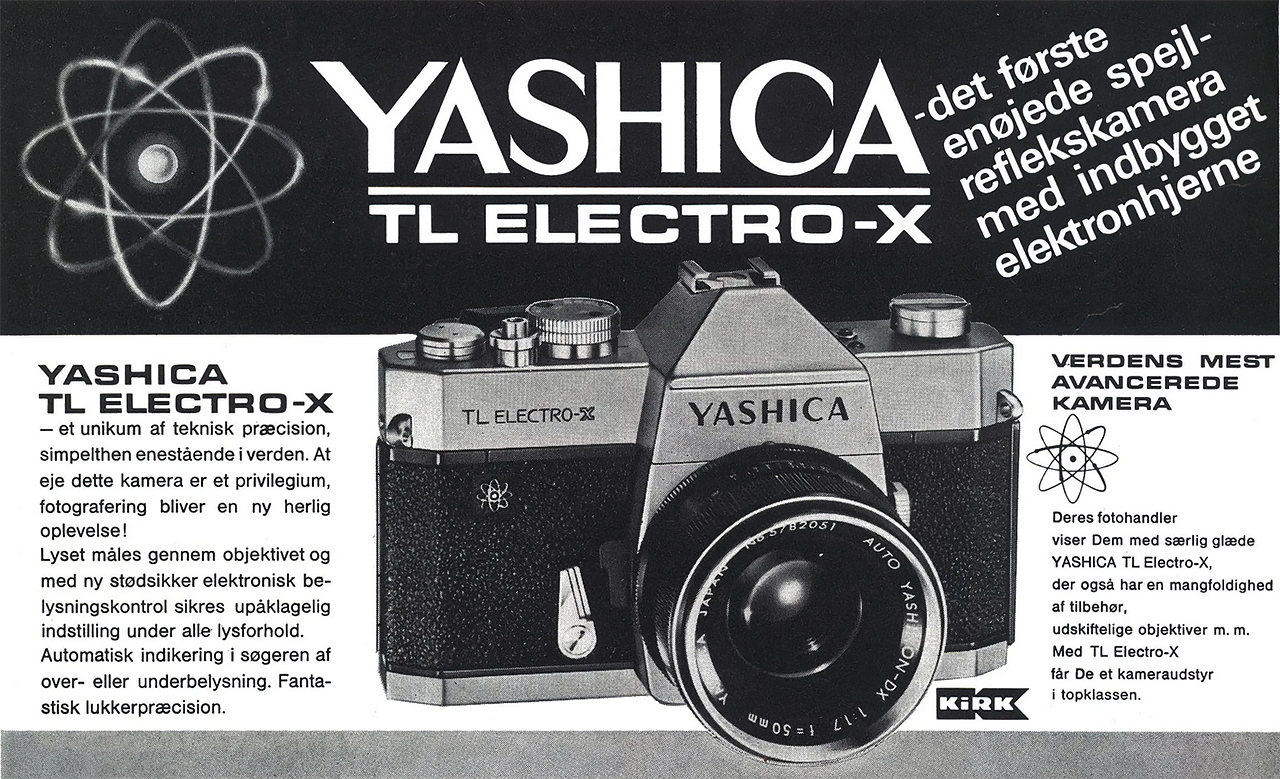
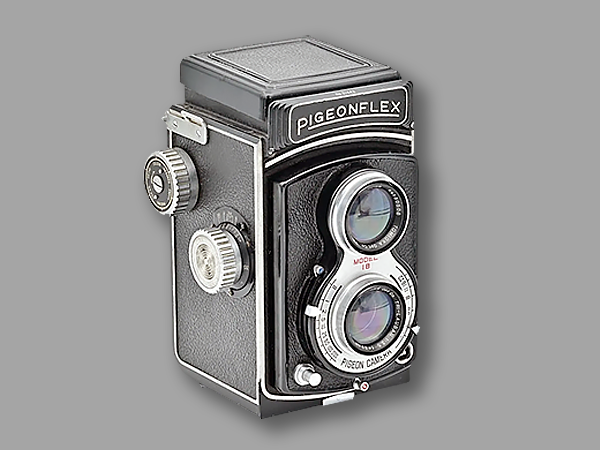
The Pigeonflex is a TLR for 6×6 exposures on 120 film. The first model was manufactured by Yashima Kōgaku Seiki (later Yashica). Later models were manufactured by Shinano Kōki. All were marketed by Endō Shashin Yōhin. All models of the Pigeonflex have f/3.5 taking lenses, focused by movement of the entire lensboard. The original Pigeonflex was the first camera to be manufactured by Yashima Kōgaku Seiki, slightly predating the Yashimaflex (both 1953).
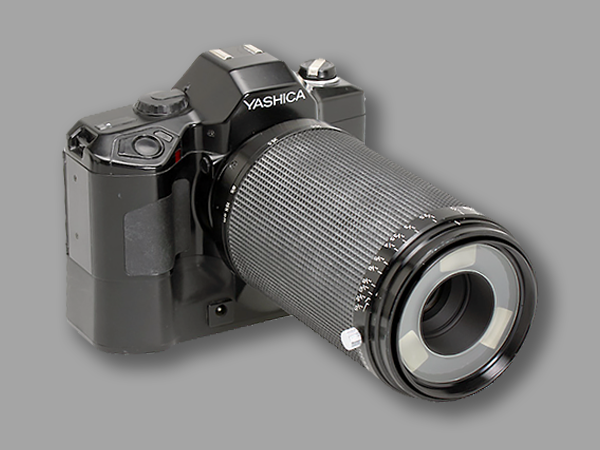
The Dental Eye cameras were a series of specialized SLRs for 35mm film from Yashica, later Kyocera. These designs replaced the Oral-Eye series of cameras that were adapted from the Electro 35 and distributed by dental equipment company Tokyo Shizaisha. The design was optimized for medical and scientific applications, adapting a Yashica SLR body but with a fixed macro lens. The lens barrel included a ring-light flash, around the lens’s front element.
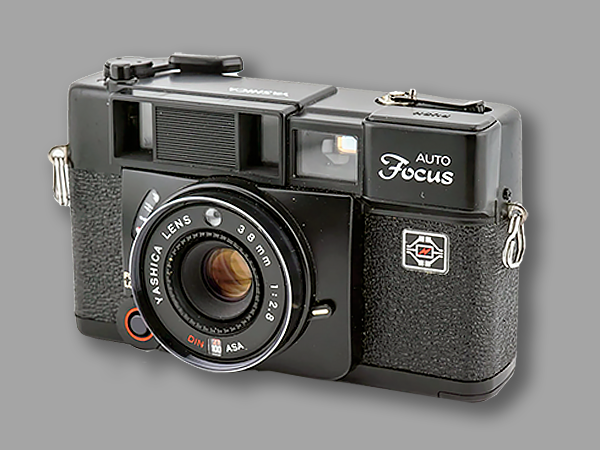
The Yashica Auto Focus cameras were produced by Yashica in the era preceding the take-over by Kyocera. There were several models in the Yashica Auto Focus series, though the lens (a 38mm, f/2.8) evidently remained the same. There was: the Yashica Auto Focus (manual wind); the Yashica Auto Focus S (manual wind); the Yashica Auto Focus Motor (power-wind) and the Yashica Auto Focus Motor-D (power-wind and date imprinting).
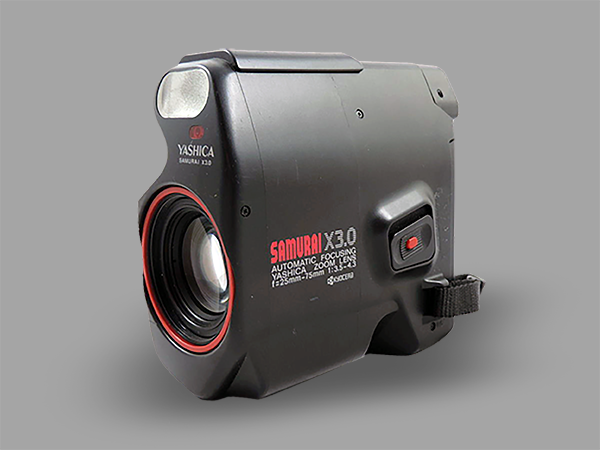
The unusual Samurai series was begun in 1987 with the X3.0. The Samurai completely discarded prior ideas about still-camera design, and instead creating a body more resembling the compact video cameras. The Samurai is a true SLR, exposing half-fame (17×24 mm) images—a format which had always been more accepted within the Japanese market. The Samurai X3.0 can be found with both Yashica and Kyocera branding, and with accents in either red or teal blue colors.
FOUNDER: Carl Zeiss
COMPANY NAMES:
1846: Carl Zeiss Jena; 1888: Carl-Zeiss-Stiftung; 1926: Zeiss Ikon AG; 1946: Split into Zeiss Ikon AG Stuttgart and Zeiss Ikon Dresden; 1960: Zeiss Ikon AG Stuttgart merged with Voigtländer; 1972: Zeiss Ikon AG Stuttgart ceased the production of cameras; 1989: Zeiss Ikon AG was bought by Abloy OY (Finland) and became Ikon AG;
1948: Zeiss Ikon Dresden became state owned and became VEB Zeiss Ikon; 1958: Zeiss Ikon Dresden became VEB Kinowerke Dresden; 1959: several Dresden camera manufacturers, among them VEB Kinowerke Dresden, Kamera Werke Niedersedlitz, Belca, Altissa, Welta, and cine film specialist Aspecta, were joined to create Volkseigener Betrieb Kamera- und Kinowerke Dresden, which was renamed in 1964 to VEB Pentacon Dresden; 1968: VEB Pentacon Dresden became Kombinat VEB Pentacon Dresden; 1985: the Kombinat VEB Pentacon was incorporated into the Kombinat VEB Carl Zeiss Jena; 1990: after German reunification the Kombinat VEB Carl Zeiss Jena was selected for closure instead of sale.
COMPANY ADDRESSES:
1846: Neugasse 7, Jena; 1926: Dresden;
Zeiss-Ikon became one of the big companies in the photo technology capital Dresden, with plants in Stuttgart and Berlin. Zeiss-Ikon was the world’s market leading maker of 8mm movie cameras until WWII. In addition to cameras and lenses, Zeiss Ikon also produced some optics for medical applications.
 Although most known for their quality line of lenses, the brand Zeiss has been associated with a great deal of other products too. From cameras to turn signals, if it involved glass, there’s a good chance at some point in the 20th century, Zeiss likely had a hand in it.
Although most known for their quality line of lenses, the brand Zeiss has been associated with a great deal of other products too. From cameras to turn signals, if it involved glass, there’s a good chance at some point in the 20th century, Zeiss likely had a hand in it.
Originally founded in 1846 by physicist and mathematician Carl Zeiss as Carl Zeiss Jena, its first products were microscopes and other scientific instruments. The name “Jena” refers to the town the company was founded in, Jena, Germany.
Upon Carl Zeiss’ death in 1888, the company would change its name to Carl-Zeiss-Stiftung (Carl Zeiss Foundation in English) and the company would continue on as a leader in the photographic lens industry.
Developing in the 20th century;
it started with ICA
 The early 20th century was a period of huge growth for the entire German camera industry with companies popping up all over the country. Many of these companies formed in or around the eastern city of Dresden due to its excellent transportation system. Dresden became the unofficial centre of the photographic industry with over a dozen companies all-competing in the camera and optics industries.
The early 20th century was a period of huge growth for the entire German camera industry with companies popping up all over the country. Many of these companies formed in or around the eastern city of Dresden due to its excellent transportation system. Dresden became the unofficial centre of the photographic industry with over a dozen companies all-competing in the camera and optics industries.
The founding of Zeiss Ikon AG represented one of the largest industrial mergers during the Weimar Republic. The driving force behind the merger and the majority shareholder of Zeiss Ikon AG was the company Carl Zeiss in Jena.The merger took place in several stages and began in 1909 with the founding of Internationale Camera Aktiengesellschaft in Dresden, initiated by Carl Zeiss, when four camera makers merged.
It was R. Hüttig & Sohn AG in Dresden, Dr. Krügener in Frankfurt am Main, Emil Wunsch AG in Reick near Dresden and the Palmos camera manufacturing department of Carl Zeiss AG. The intention to include the Dresden Ernemann works also in the merger failed. So Ernemann remained the new company’s largest competitor and was also superior to the ICA until 1926 in terms of the technical quality of the products.

Zeiss Ikon plant, built 1936 at Glashütter Straße in Dresden by Emil Högg, who was also architect of the Ernemann Tower.
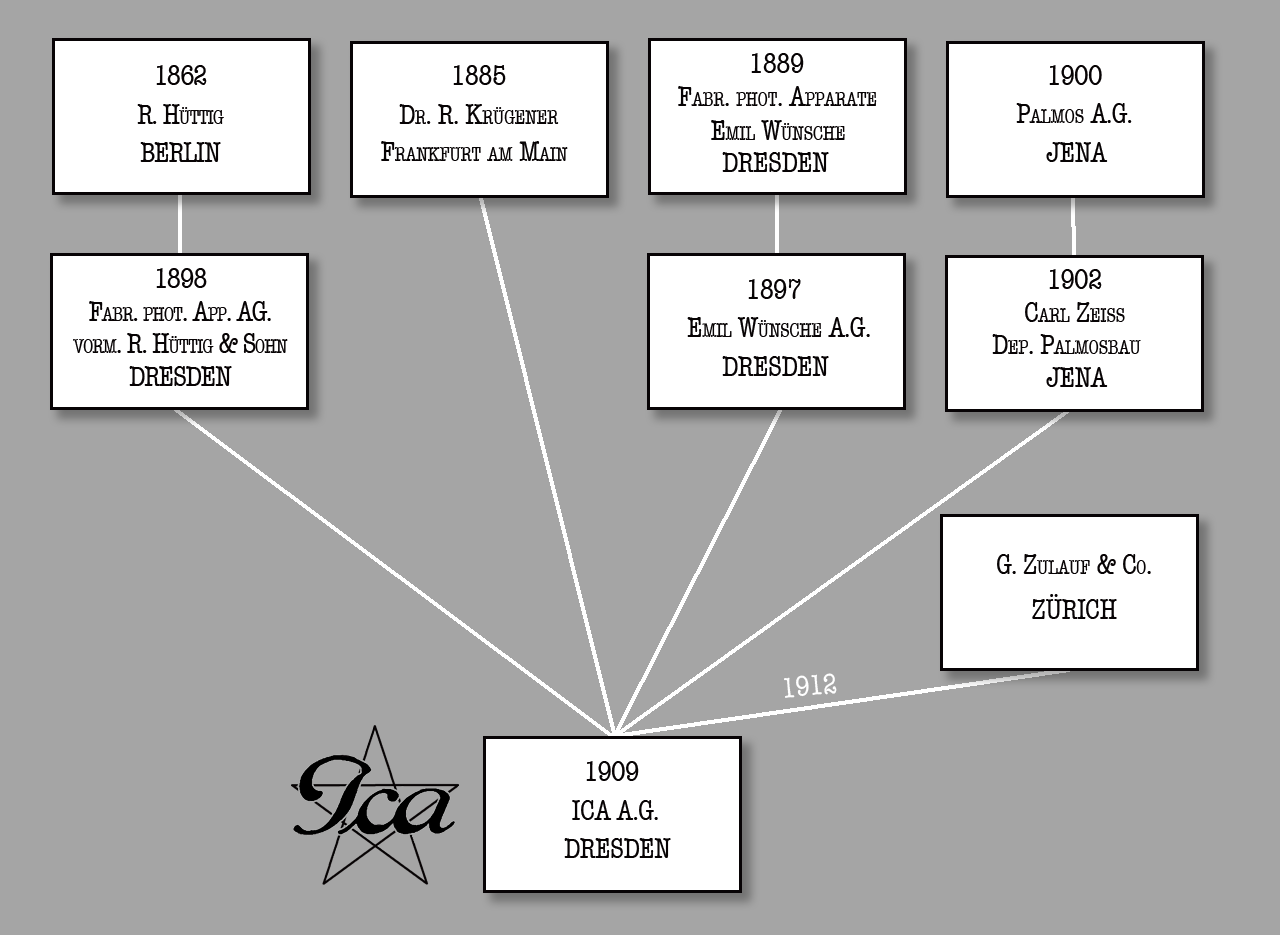
Organigram of the ICA Group
The founding of Zeiss Ikon
After the First World War, the German economy was in shambles and many of the medium-to-smaller companies found it difficult to stay in business. In 1926, by order of the German government, four different Dresden based camera makers would all merge together with an infusion of capital from the Carl Zeiss Foundation to form an all-new company, known as Zeiss-Ikon. As a unified company, Zeiss-Ikon would survive the poor Germany economy and would become a worldwide leader in the camera industry.
On September 14 and 15, 1926, the General Meetings of:
- Camera Corporation (ICA), Dresden,
- Optical Institute C. P. Goerz AG, Berlin,
- Contessa-Nettel AG, Stuttgart, and
- Ernemann-Werke AG, Dresden,
the previously concluded merger agreements.These had a validity backdated to October 1, 1925, so that 1925/26 was the first business year.It was founded by transferring assets to Goerz AG, which changed its name to “Zeiss Ikon AG” and moved its headquarters to Dresden.
To emphasize the focus on photography, the Greek word εἰκών (eikón or German “ikon” = image) became part of the company’s brand and trademark. The suffix “Zeiss” documented the affiliation and leadership claim of the parent company in Jena.
Further developments of the twenties
The first general catalog appeared in 1927 and still contained numerous products from the previous companies. The merger came to an end at the end of 1928 when the former Goerz subsidiaries joined:
- Stock corporation Hahn for optics and mechanics, Ihringshausen/Kassel (1927), and
- Goerz Photochemical Works AG, Berlin (1928).
Although the merger took place with significant capital write-downs and very cautious valuation of the assets, Zeiss Ikon AG was already worth 50 million Reichsmarks in 1929, more than the main shareholder Carl Zeiss (21.3 million). Due to the product portfolio of the founding companies, Zeiss Ikon was broadly diversified right from the start. In 1930, production took place in six large plants in Dresden, Berlin and Stuttgart.
In addition to the six main plants, Zeiss Ikon had numerous smaller locations and unused capacities. In the early years, the focus of company policy was on streamlining the range of cameras: in 1927, 100 basic models were still being manufactured in over 1,000 variants; In 1929 there were 47, in 1938 there were 14 basic camera models. The main person responsible for the consolidation of production was Heinz Küppenbender (1901-1989), who had a doctorate in mechanical engineering and had previously worked for Carl Zeiss in Jena.
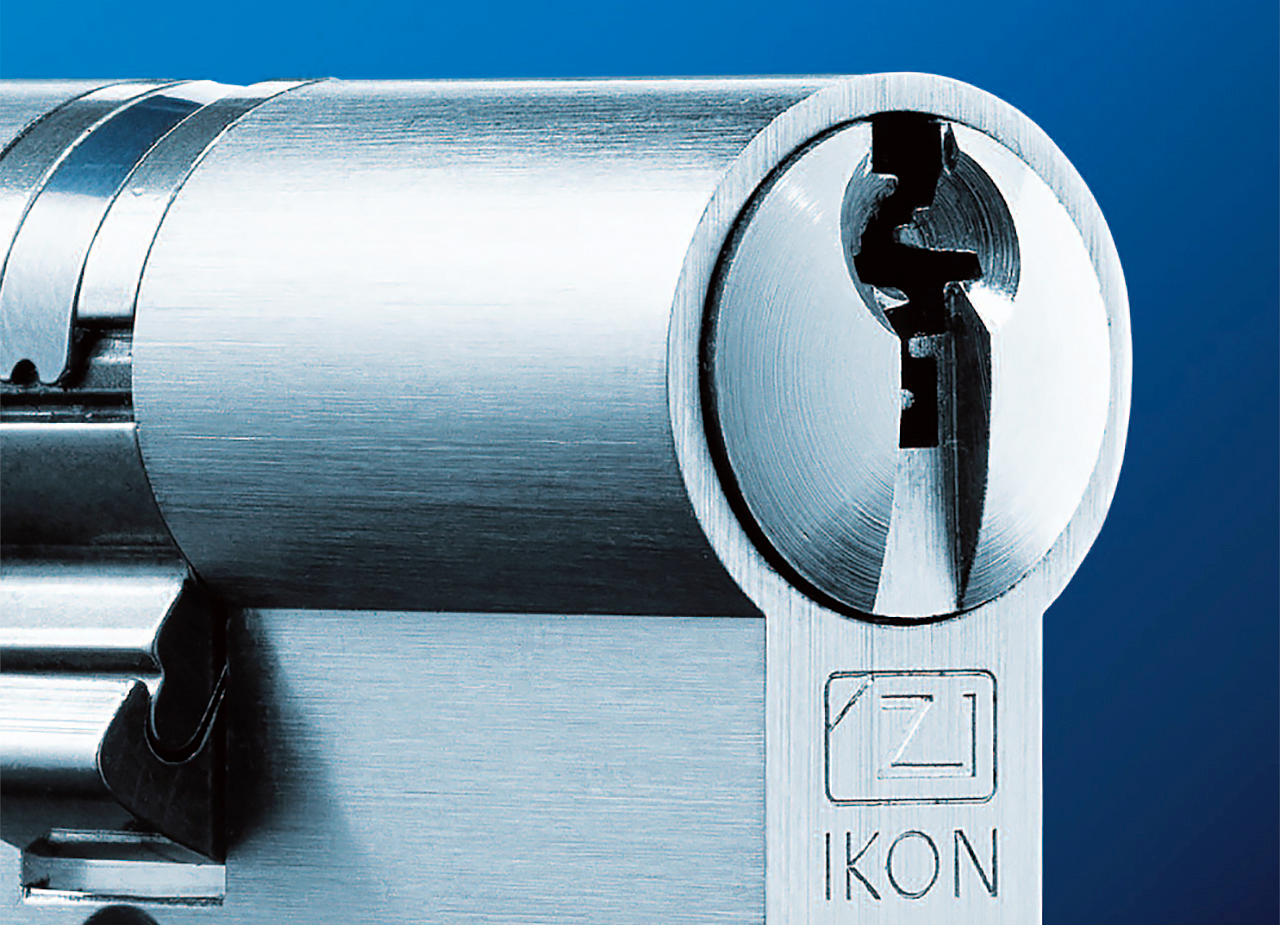
A close-up of the cock-profile lock cylinder developed by Hahn, which has since become the international standard.
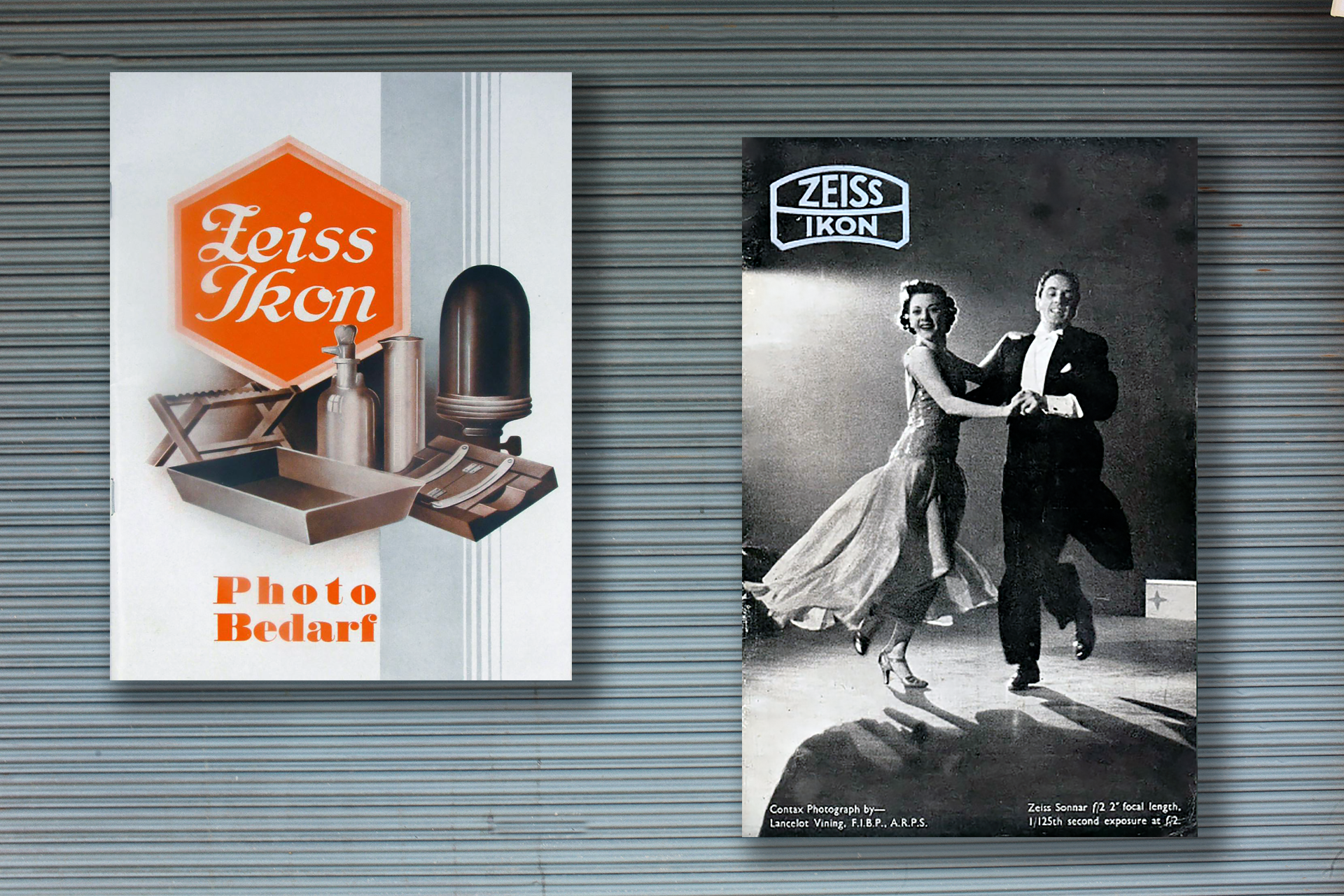
Two catalogues from the years before the Second World War; a German-language catalogue for photography accessories and an English full photography catalog from 1939.
Zeiss Ikon in the thirties
 Quite a bit of history is wrapped up into the Zeiss-Ikon Company. One disgruntled employee, Dr. August Nagel, left in 1928 to form his own company, the Nagel Camera Works. It was later purchased by Eastman Kodak, and became Kodak A.G., the source of all of the Retinas, and many other high quality Kodak cameras.
Quite a bit of history is wrapped up into the Zeiss-Ikon Company. One disgruntled employee, Dr. August Nagel, left in 1928 to form his own company, the Nagel Camera Works. It was later purchased by Eastman Kodak, and became Kodak A.G., the source of all of the Retinas, and many other high quality Kodak cameras.
One of the most important products from Zeiss Ikon was the Contax system camera, launched on the market in 1932, which created competition for the famous Leica from Ernst Leitz GmbH.In 1936, the world’s first rangefinder camera, the Contax II, followed.
At the beginning of the 1920s, engineers at the Hahn Corporation in Ihringshausen near Kassel developed the profile cylinder, which was patented in 1924.In 1928 Zeiss Ikon was granted patent no. 469 260 for the “cock profile” lock cylinder.The profile cylinder type Zeiss Ikon is now standardized in DIN 18252 and has become the standard in Europe and almost worldwide.
In terms of quantity, the most important cameras made by Zeiss Ikon in the period from 1930 to 1939 were the Ikonta type folding cameras, which were offered in various negative formats, configurations and configurations. The series has been supplemented downwards by the slightly slimmed down cameras of the Nettar and Bob series. Simple box cameras, such as the Box Tengor made in Berlin, were also widespread.
Nazi influences
As early as 1933, the company geared up for the new rulers and brought out the Baldur, a box camera named after the Nazi Reich youth leader Baldur von Schirach, in versions for the 4.5 cm × 6 cm and 6 cm × 9 cm recording formats.In 1934, the Super Nettel was followed by a 135 mm folding camera with a focal plane shutter “ideal for military technology and sports”.
In 1936 the Contaflex appeared, a twin-lens reflex camera for 35mm film and the first camera with a built-in photoelectric exposure meter. In 1938, Zeiss Ikon introduced the Tengor II, a revised Goerz Box Tengor for the 6 cm × 9 cm recording format. In 1937 the Tenax came onto the market, a quick-release camera for the format 24 mm × 24 mm on 135 film. It was followed shortly before the outbreak of war by the simpler, pocket-sized Tenax I.
Second Worldwar
From 1940 the entire German industry was converted to a war economy. Zeiss Ikon was only able to deliver special series of the so-called wartime Tengor 54/2 and the Tengoflex up to 1944. During the Second World War, the Zeiss Ikon factory in Dresden was the city’s largest armaments factory with around 6,000 employees.
At Zeiss Ikon there was a 400-strong Jewish department. In mid-January 1942, plant management and the Wehrmacht successfully resisted the intended deportation of employees’ Jews to the Auschwitz-Birkenau concentration camp, threatening to close the plant if this were to happen.
The Goerz works in Berlin were severely damaged during the war. The Contessa-Nettel factory in Stuttgart remained completely undamaged. The Dresden works Ernemann and Ica suffered only minor bomb damage. After the end of the war, all works were largely dismantled.
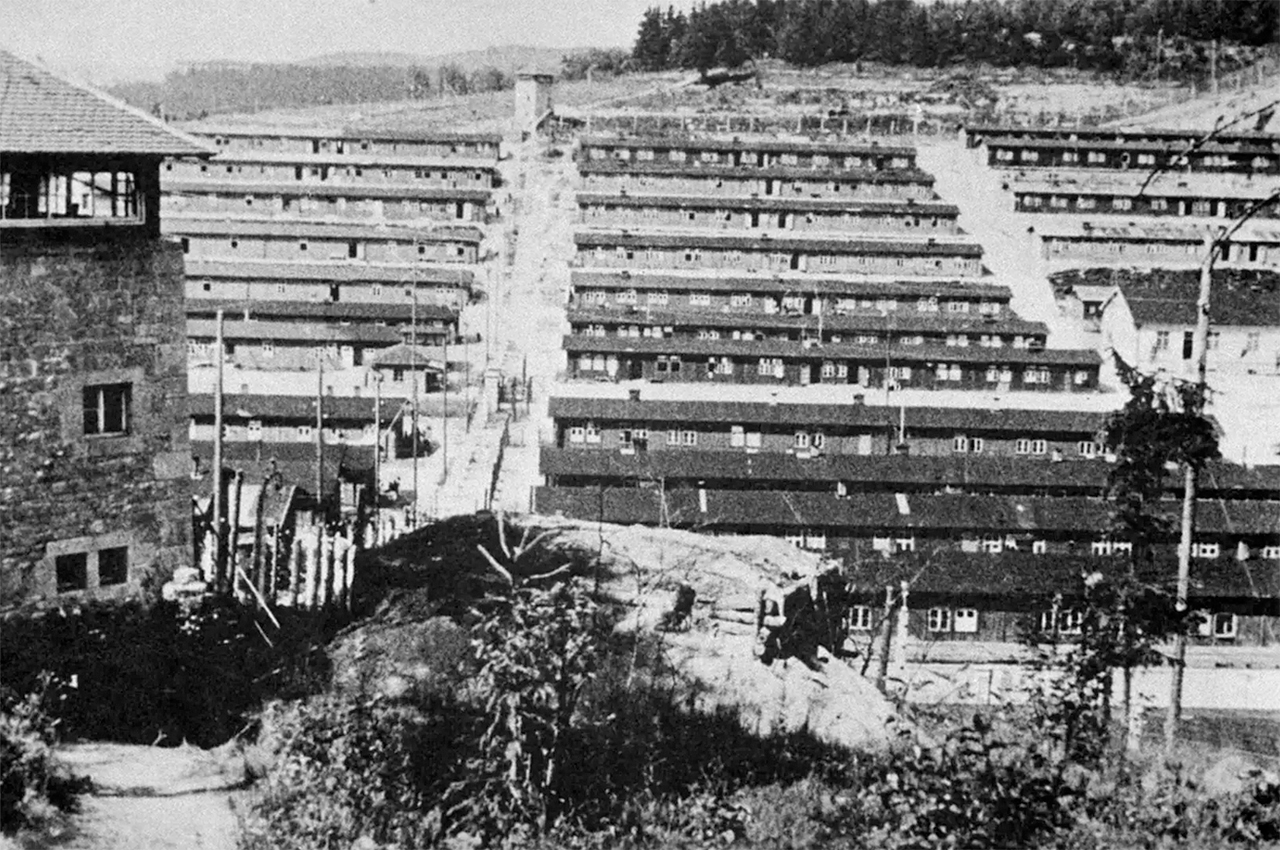
The Flossenburg concentration camp- April 1945
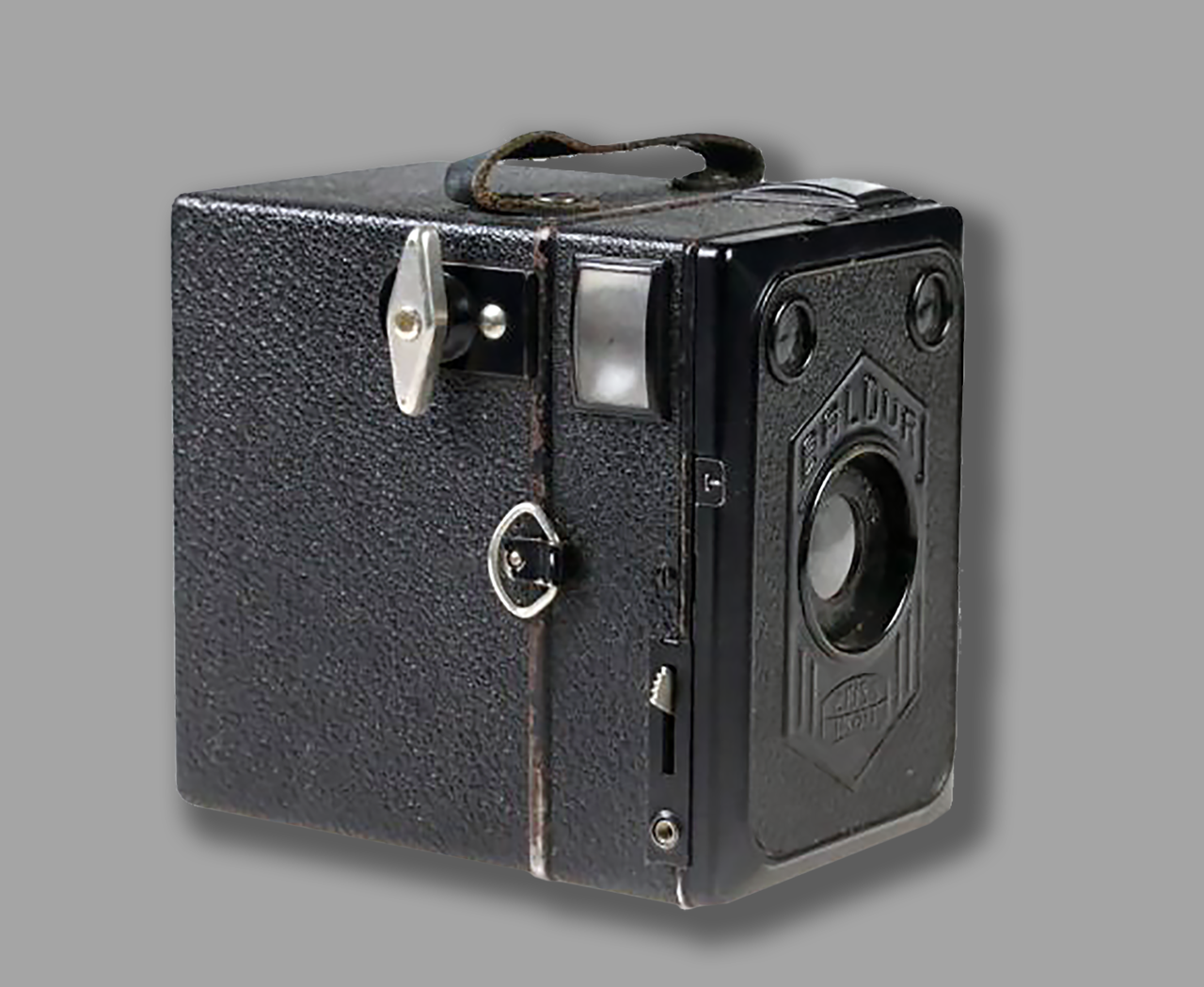
The Baldur (854/16) is a 6×9 Box camera for 120 /127 / 620 Rollfilm made by Zeiss Ikon from 1933-1936. From ca 1937 the Baldur was replaced by this Erabox (model 52/2) which is essentially the same camera.
The Goehle-Factory
The Goehle factory, named after the Rear Admiral of the German Navy Herbert Goehle (1878-1947), was built in 1940/41 as an ammunition manufacturing plant. Time fuses, incendiary shrapnel for anti-aircraft missiles and bomb fuses were manufactured. In addition to the prisoners from the concentration camps Flossenbürg and Ravensbrück, mainly unskilled forced laborers worked in the Goehle factory, most of whom came from Poland and the Soviet Union. i.a. the Jewess Henny Brenner was forced to work there.
Witnesses testified that the living conditions of the workers were extremely adverse: their food was completely inadequate and their state of health consequently poor. The overseer “die Hüber” was described as harsh and cruel. Numerous escape attempts speak of the great suffering of the women.
During the air raids on Dresden on February 14, the women were locked up in the Goehle factory. Some escaped successfully in the ensuing turmoil. The satellite camp was “evacuated” on foot along the Elbe and by train to Leitmeritz (today Litoměřice) in mid-April and was liberated in the meantime. Many were able to escape before then.
In the “Goehlewerk Trial” in 1949, ten people were accused – e.g. the deputy manager, several foremen and SS guards – and sentenced to between one and eight years in prison. Inmate killings could not be proven.
West Germany: Zeiss Ikon AG Stuttgart
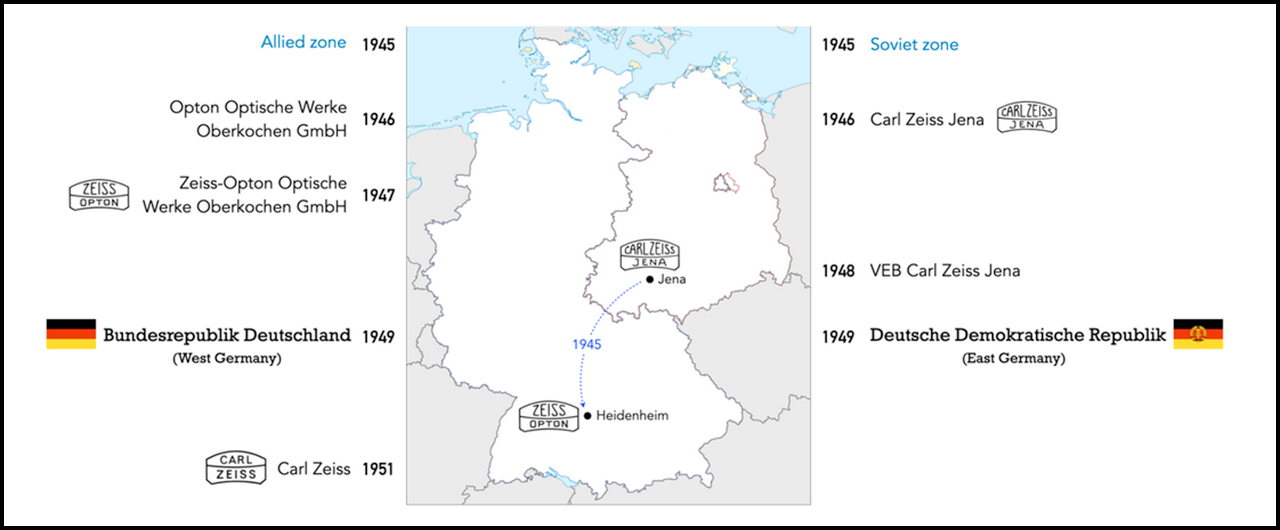
After World War II Zeiss Ikon was split into a West German and an East German part. It was reformed in West Germany, and trademark disputes followed with the part that was left in East Germany. Stuttgart became the company’s domicile. Zeiss Ikon merged in the mid 1960s with Voigtländer, another important German manufacturer, and one that had been controlled by the Zeiss Foundation since 1956.
The product lines of Zeiss Ikon Stuttgart were different from the East German company’s products. E.G., the Ikophot light meters were made in Stuttgart.
Zeiss Ikon ceased the production of cameras in 1972. This was a great shock for the entire German camera industry. Parts of the Zeiss Ikon product line then went to Rollei, and part of the know-how was used to revive the Contax name in collaboration with the Japanese maker Yashica.
Before reunification the whole Zeiss Ikon keys, latches & locking cylinder business was separated into a separate company.
After German reunification
Today Carl Zeiss is reviving the Zeiss Ikon name. The new Zeiss Ikon camera, introduced at the 2004 Photokina show, is a rangefinder camera with Leica M-mount, developed in Germany and built by Cosina in Japan. Like the Contax G1 and G2), it has lenses made in both Japan (by Cosina) and Germany.
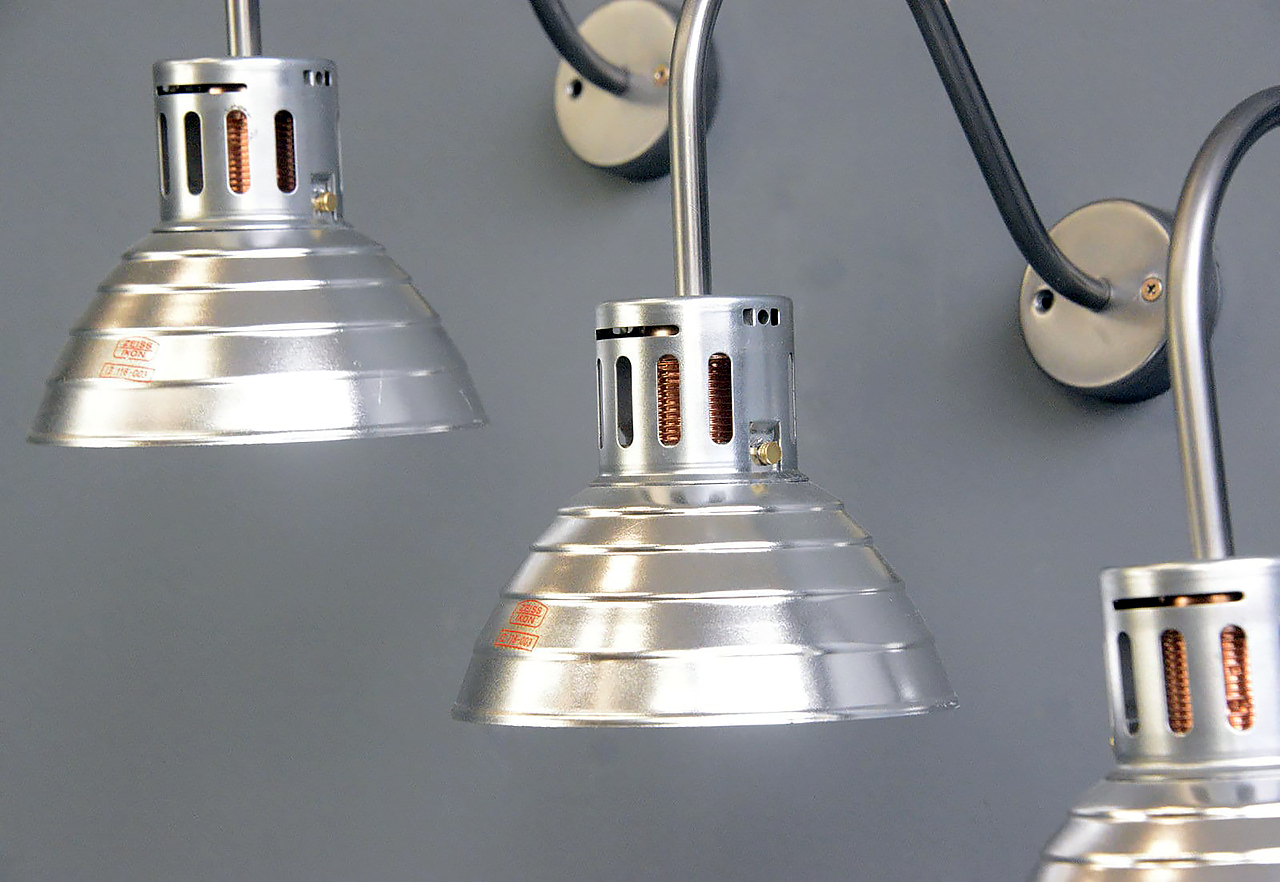
Wall Lights By Zeiss Ikon Circa 1960s
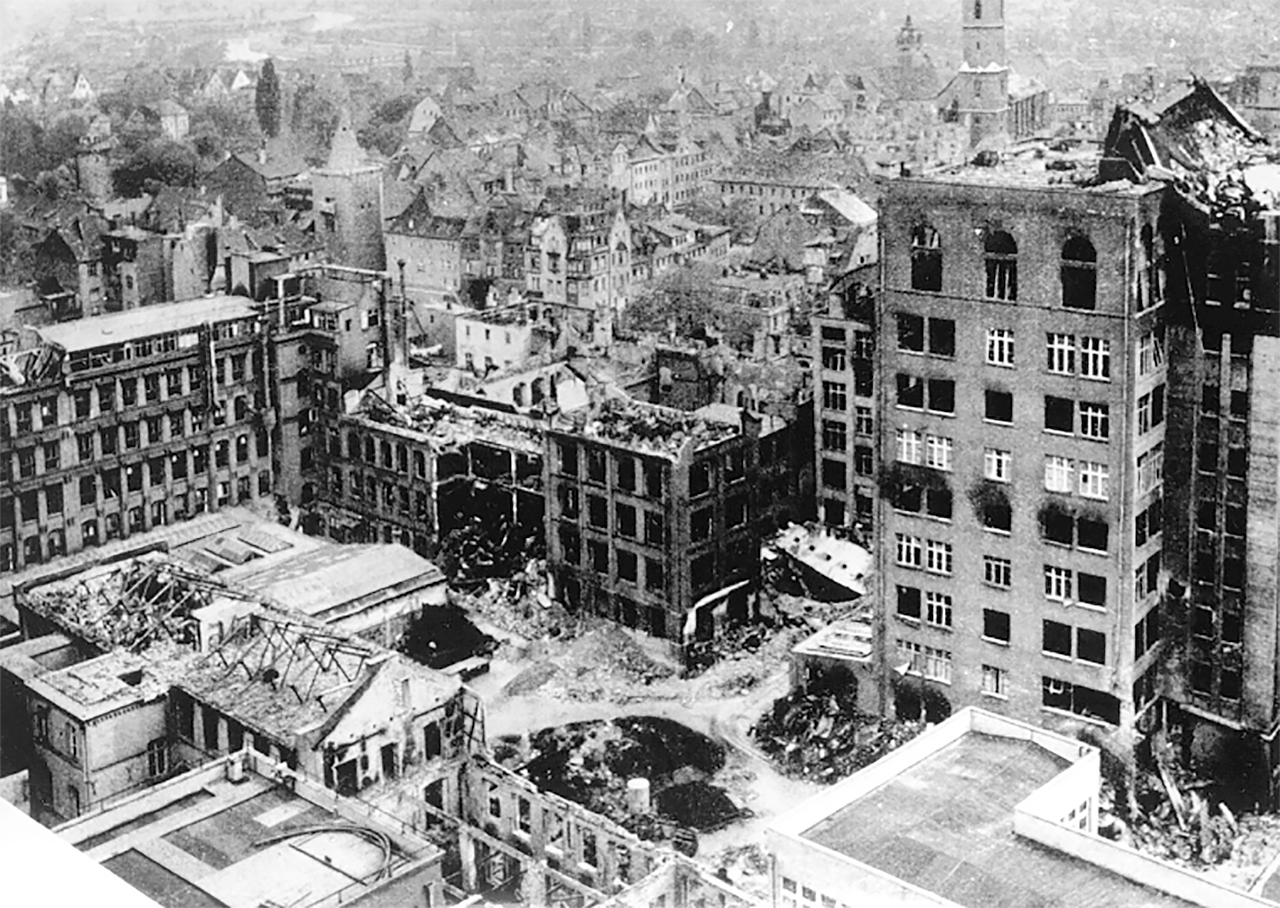
The bombing damage to the Zeiss Jena plant
East Germany: VEB Zeiss Ikon Dresden
Post-war production, begun early in May 1945, was soon interrupted as several factories were closed for dismantling their production machines. The machines were given as reparation to Soviet camera makers that had suffered demolition during the war. The production of the sophisticated Contax rangefinder cameras was prepared in Dresden and re-launched with new machines in Jena before all the machines were transferred to the Soviet camera maker Kiev.
In 1948 the East German part of Zeiss Ikon became state owned. Production and development of Ernemann projectors and movie cameras were continued from 1949. Camera production was continued in 1947 with the Tenax and the Ikonta models. Soon the company’s stock of leaf shutters was running out. In 1950 it could produce its own shutters since it took over the shutter production of Balda and the shutter factory of Mimosa. In 1952 the Tempor was Zeiss Ikon’s first own leaf shutter development, followed in 1954 by the Prestor, the fastest leaf shutter at this time.
In 1948 the company could introduce its advanced SLR model, the Contax S. Since there were suits about trade mark names with the West German Zeiss Ikon AG, VEB Zeiss Ikon was renamed VEB Kinowerke Dresden in 1958. Later it became the main part of the East German combine Pentacon.
In 1956 Zeiss Ikon was combined with Voigtländer in the Carl Zeiss Foundation, another plant was founded in Schelklingen and the Zett equipment plant in Braunschweig was taken over. After that, a whole range of incompatible camera systems were offered under the umbrella of a single group. These were essentially Contax II/IIIa, Bessamatic, Ultramatic, Contaflex, Contarex, Icarex 35 and the SL 706.
Lens production was relocated to Braunschweig in 1970, while camera production remained in Stuttgart.In 1972 the former Contessa-Nettel plant in Stuttgart was closed and the production of photographic equipment was completely discontinued.
Since around 1920, lights (including spotlights for illuminating shops and shop windows) have also been manufactured in the Zeiss Ikon Goerz factory in Berlin. Some of these models were designed by Adolf Meyer. A special feature of the Zeiss Ikon lights were the mirrored glass reflectors. The lighting division was spun off in 1988 as Z-I-Lichtsysteme.
In 1989 Zeiss Ikon AG was taken over by the Finnish company Abloy OY and the company changed to Ikon AG. Today the company belongs to the Finnish-Swedish Assa Abloy group. In January 2003, Ikon AG (“Goerzwerk”) was converted into a GmbH. On April 1, 2005, Ikon GmbH Berlin merged with Effeff in Albstadt to form Assa Abloy Sicherheitstechnik GmbH, based in Albstadt. It deals exclusively with the manufacture and sale of mechanical and electromechanical locking systems (door openers) and security fittings.
PRE-WAR AND POST-WAR CAMERAS OF ZEISS IKON AND VEB ZEISS IKON

Zeiss Ikon cameras were technological leaders in many areas. Below is a list of known cameras from the pre-war and post-war era. Apart of the mentioned types, other well-known series are the Ikoflex, a TLR and the Contarex, which was built by Zeiss Ikon AG (West) from 1959.
Zeiss Ikon built the first rangefinder camera, the Contax, and the first camera with a built-in selenium exposure meter, the Contaflex TLR, in 1935. The VEB Mechanik Zeiss Ikon in Dresden introduced the Contax S (Spiegelcontax) in 1949, the world’s first single-lens reflex camera with a roof prism.
Pre-War known models
- Bebe
- Bobette
- Cocarette
- Contaflex (TLR)
- Contax
- Deckrullo
- Ergo
- Ermanox
- Favorit
- Halloh
- Icarette
- Ideal
- Ikoflex
- Ikonta
Pre-War known models
- Kolibri
- Liliput
- Maximar
- Movikon
- Nettar
- Nettel
- Nixe
- Piccolette
- Polyskop
- Simplex
- Sirene
- Taxo
- Tenax
- Trona
- Volta
POST-War known models
VEB Zeiss Ikon (DDR)
- Contax/ Pentacon
- Ercona/ Exona
- Taxona
Zeiss Ikon AG (BRD)
- Box Tengor
- Colora
- Contaflex
- Contarex
- Contax
- Contessa
- Contina
- Hologon Ultrawide
POST-War known models
Zeiss Ikon AG (BRD) CONTINUED
- Icarex 35
- Ikoflex
- Ikomatic
- Ikonette
- Ikonta
- Movikon
- Nettar
- Nettax
- S 310/ S 312
- Symbolica
- Tenax automatic
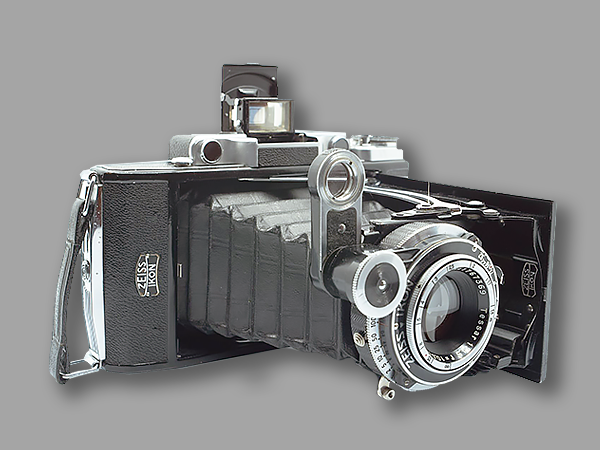
Zeiss-Ikon’s top product line of folding medium-format cameras were badged Ikonta and were generally of superior quality compared with corresponding folding camera models of Zeiss-Ikon’s Nettar product line. Launched in 1929, Ikontas were offered in four models: A, B, C, & D. The A, B, & C sizes took 120 film and produced negatives in 6×4.5 format, 6×6 format, and 6×9 format, respectively. The Ikonta D produced larger negatives on either 116 or 616 film. There was also a Baby Ikonta, which used 127 film. The first series of Ikonta were also labeled the 520 series. In the United States early Ikontas were sold under the name Ikomat.
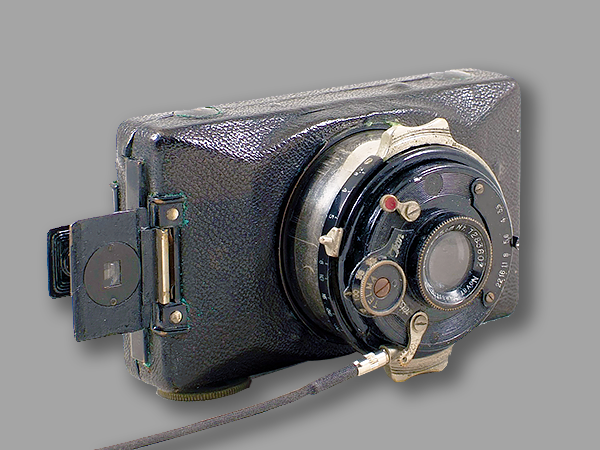
The Zeiss Ikon Kolibri 523/18 camera was made between 1930 and 1935. It took sixteen 3x4cm exposures on 127 film. The camera featured a collapsible lens tube and was arranged in a vertical format, with a flip-up viewfinder on the top. On the right-hand side was the winding knob and a tripod bush. The lens had small “feet” on either side, so the camera would stand horizontally, and a strut could be fixed below the lens to balance the camera vertically. There were two red windows on the back, for the small image format. A supplementary close-up lens was available, called Proxar, which allowed focusing down to 30 cm.
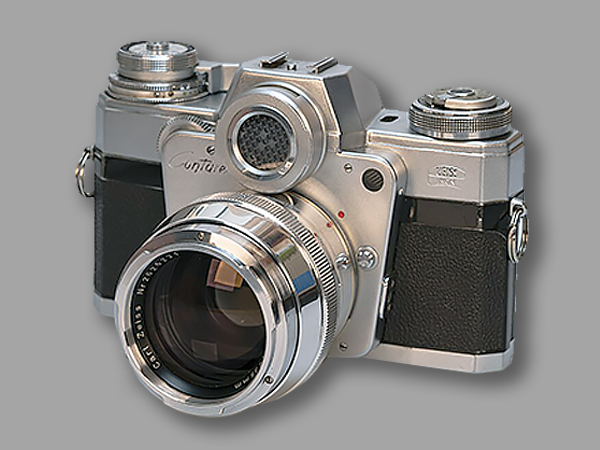
Contarex is a line of 35mm single lens reflex cameras (SLRs) first presented at Photokina in 1958 and initially scheduled for delivery in the spring of 1959, but it was not made generally available in the United States until March 1960. The first model is popularly known as the Contarex I, the Bullseye, or the Cyclops, after the prominent light meter window above the lens, in front of the pentaprism. The camera was aimed at the high-end and professional markets; in 1961, the retail price was $499. A custom modified Contarex Special was used by astronaut Ed White during the first NASA extra vehicular activity (EVA) on June 3, 1965.
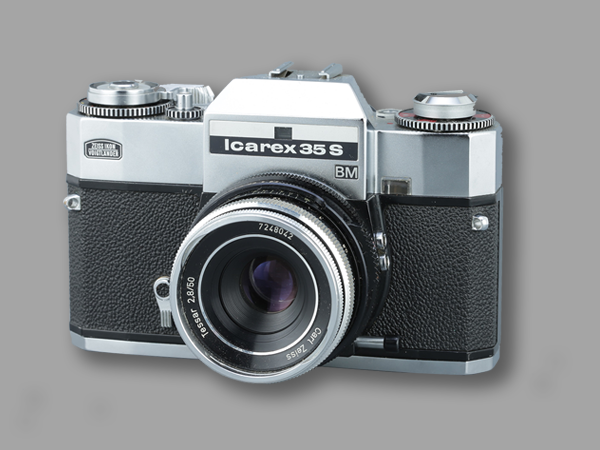
Icarex is a line of 35mm single lens reflex cameras (SLRs), derived from an earlier Bessaflex project developed by Voigtländer. The Icarex line, which included the Icarex 35, Icarex 35CS, Icarex 35S, and SL 706, was aimed at a mid-range market above the Contaflex SLR, which was intended for advanced amateurs, but below the Contarex line for professionals. Icarex SLRs were manufactured from 1966 until Zeiss Ikon ceased camera production in 1972; the Voigtländer marque and associated designs were sold to Rollei, who would later in 1976 rebrand the last of the Icarex line, and fit it with their QBM lens mount as the Rolleiflex SL35 M.
FOUNDER: Joseph Zion
COMPANY NAMES:
1890: J. Zion et Cie; 1909: Declared bankrupt but was granted a seven-year arrangement to clear his debts; 1928: Ed. Zion & Cie; 1932: Declared bankrupt; 1935: Optical Store at 90, avenue de Neuilly, in Neuilly sur Seine; 1945: Maxime Zion and his wife took over the business.
COMPANY ADDRESSES:
1890: 7 rue de Jouy, Paris; 1898: 14, rue Pelleport, Paris; 1900: 140, boulevard Richard Lenoir, Paris; 1913: 30bis, rue Bergère, Paris; 1918: 8, rue Haxo, Paris; 1928: 140, boulevard Richard Lenoir, Paris.
Zion (early products are marked Ed. Zion or J. Zion Opticien Fabricant) was a camera-maker in Paris, from 1890 until at least 1930.
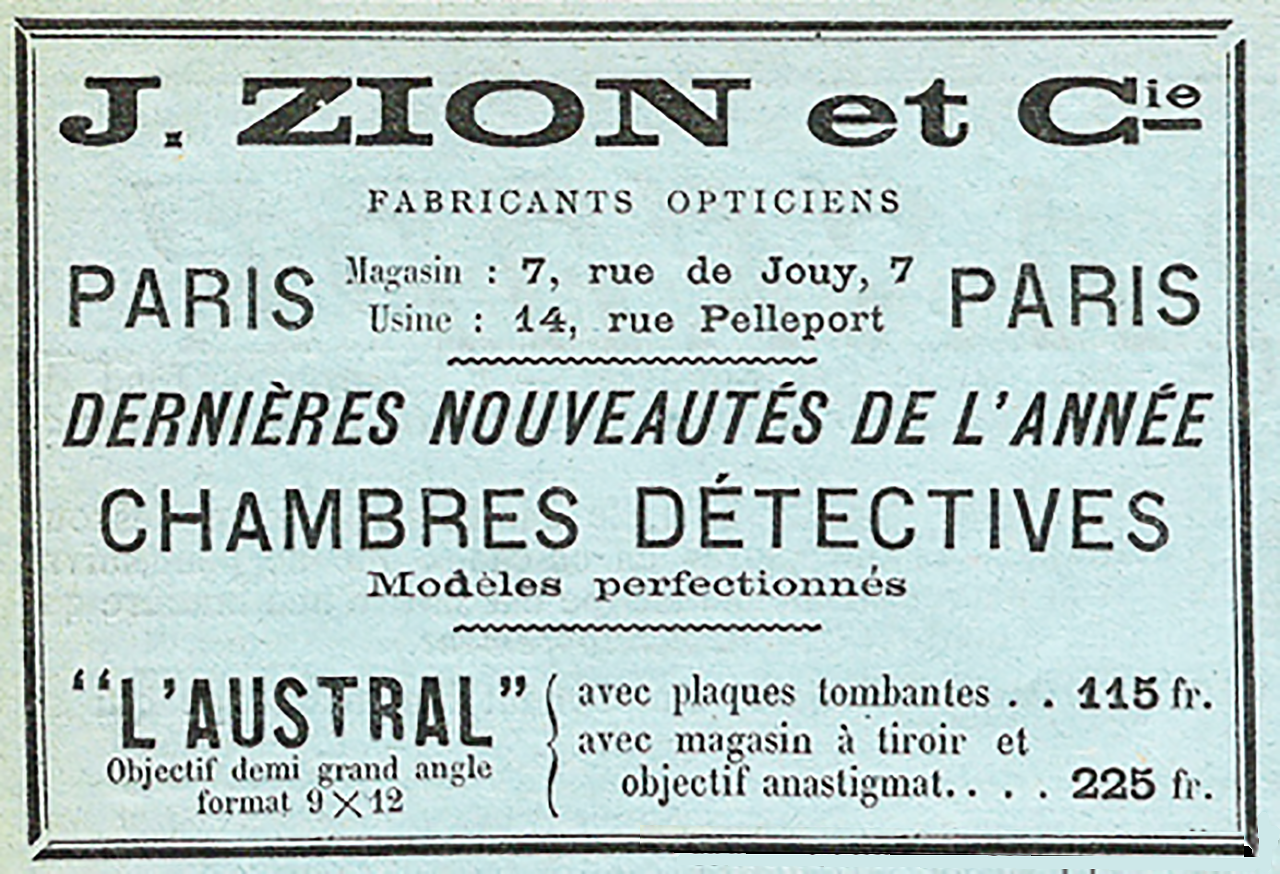
Joseph Zion was native of Russia, he settled as a mechanic at 3, Rue de quatre fils in Paris. He married Jeannette there on September 20, 1879 and had six children. He filed the patent for a shutter in 1885, which he manufactured in his workshop at 7 rue de Jouy. He was a member of the SFP (Société Française de Photographie) from 1888 to 1900.
On July 20, 1890, he joined forces with J. Munch in the company J. Zion et Cie operating the Le Factotum brand. Development of a first “Le Cosmos” stereoscopic shutter, and of an anastigmat lens “Anastigmatique” in 1892.
In 1893, patent for the Simili-Jumelle (France and Switzerland) in 6.5 x 9 cm format with presentation to the Photo-Club of Paris (March 7, 1894) and to the Société Française de Photographie (April 6, 1894). The couple Joseph – Jeannette obtained French nationality in December 1894. In 1896, he filed a patent for a cinema device, the Mouvementoscope, and, with Eugène Gauthier, the patent for the Mouvementograph, a device for processing and projecting animated scenes.
In 1898, he produced a line of detective cameras, partnering with Louis Lazies and Georges Victor to establish an industrial site at 14, rue Pelleport. The association broke up on August 23, 1900 and Joseph Zion moved to 140, boulevard Richard Lenoir. (Bronze medal at the Universal Exhibition of Paris 1900). He marketed the Stéréo-Bijou, then in 1904, the Zionscopes in a folding version.
Declared bankrupt in October 9, 1909, he was granted a seven-year arrangement on July 29, 1910 to clear his debts. In 1911, the Zionscopes series became rigid (6.5 x 9 cm format) and the 4.5 x 6 cm model was of the klapp-type. He also produced the Star-Stereo that can be used as a viewer.
Edmond Zion is in charge
End of 1912 – beginning of 1913, he leaves the sale to his eldest son Edmond who settles 30bis, rue Bergère. The latter filed in 1914 a patent for a plate magazine, while his brother Maxime started an apprenticeship in the construction of cameras.
It was in 1913 that the Zionscope 45 x 107mm type H was released, copying the design of the Vérascope, and the Zionscope type V in 6 x 13cm format, as well as a 6.5 x 9cm format model. In 1914, it was the 6 x 13 cm stereo-panoramic Zionscope which was proposed, equipped with the new patented magazine.
During the war, Zion supplied binoculars to the army, and got closer to Photo-Plait which distributed, from 1917 to 1921, the Zionscope 6.5 x 9 cm and the Platoscope 45 x 107mm.
At the end of the war, Edmond moved to 8, rue Haxo, while Joseph released the Pocket (1923) and Pocket Z (1927) in mono 6.5 x 9 cm and stereo 6 x 13 cm. These cameras were equipped with trade lenses.
In 1928, Joseph handed over to his son Edmond, the company becoming: Ed. Zion & Cie, all activities being grouped together at 140, boulevard Richard Lenoir. Edmond works with his brothers Maxime and Lucien, producing the Pocket Z in mono or stereo klapp-type and some stereoscopic Jumelles. The company will be declared bankrupt in December 1932.
In 1935, Edmond and Maxime opened an optical store at 90, avenue de Neuilly, in Neuilly s / Seine. Edmond and his wife were deported to Auschwitz on June 30, 1944 and died there on July 5.
After the war, Maxime and his wife took over the business at 90 Avenue de Neuilly and died there in February 1972. Lucien died in 1991 at the age of ninety-eight in Le Raincy, in Seine Saint-Denis.
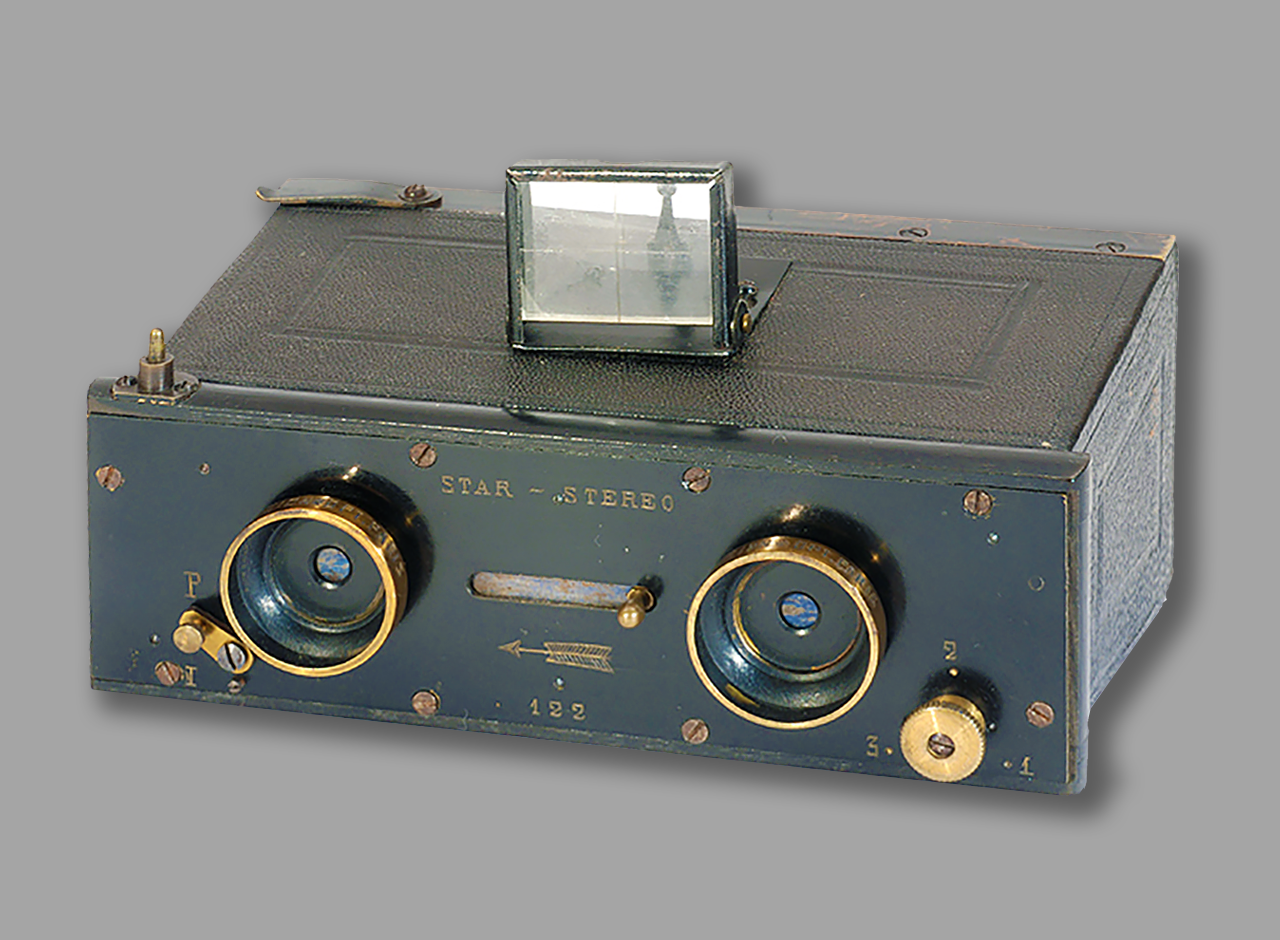
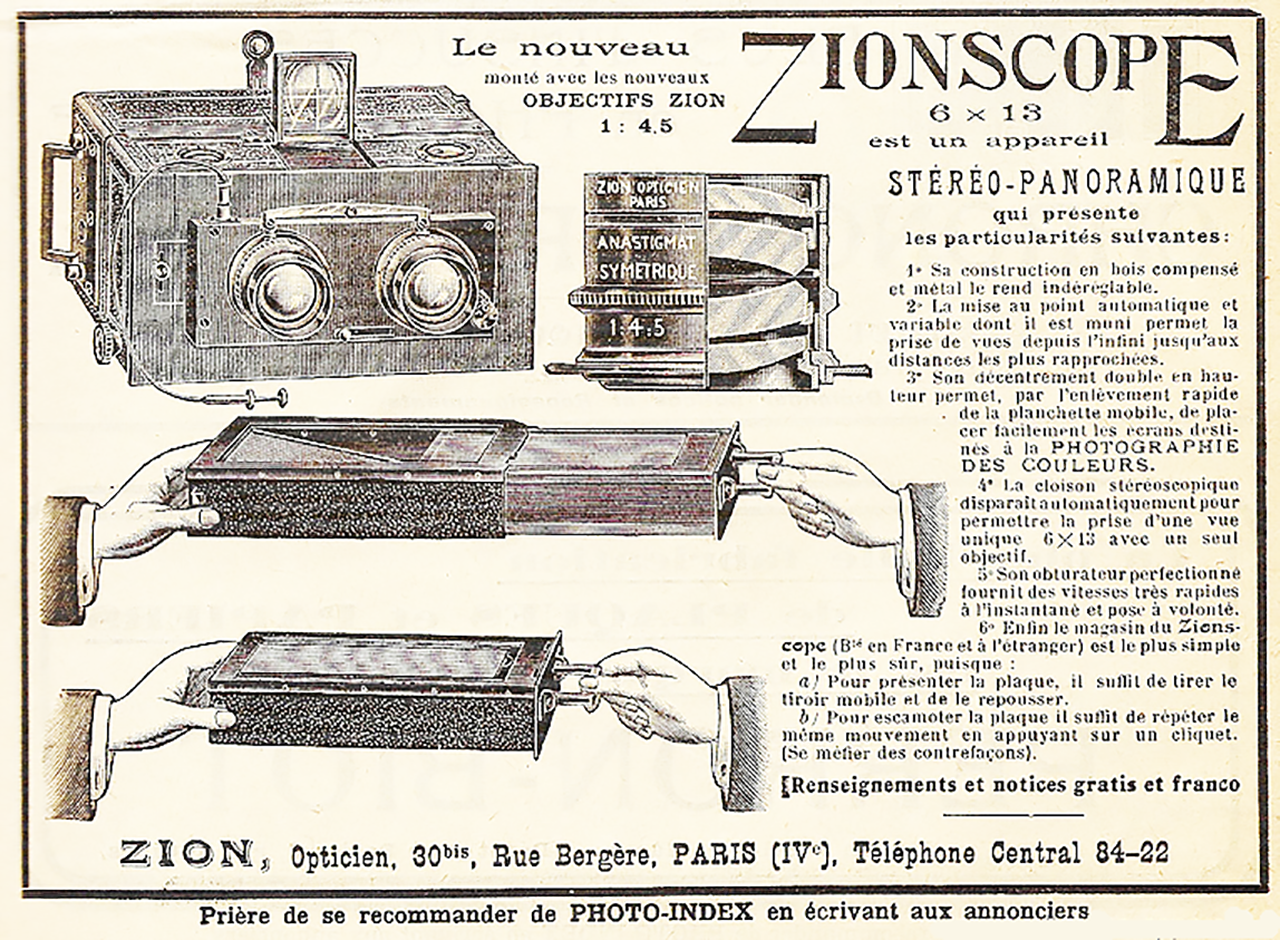
The advertisement above offers a very nice illustrated description of the Zionscope. It is constructed of wood and metal. It can be transformed into a panoramic camera, by removing the board separating the two dark rooms, and by shifting the board supporting the lenses. It then gives a single view of 6 x 13 cm format. Its magazine can load several plates, but the number is not specified.
cameras
- Strut-folding rollfilm camera for 8.5×10 cm exposures: a simple shallow wooden body with leather covering, with the lens and a simple rotary shutter, mounted on the front of an unpleated leather cone, held straight by four plain rod struts. The camera has a Newton finder on top, with the targeting pointer at the front. Simili-Jumelle both mono and stereo Jumelle cameras
- La Liput; a version of the Simili-Jumelle with a Newton finder instead of the Galilean one, for 6.5×9 cm, 9×12 cm and 83×108 mm plates.
- Austral 9×12 cm detective camera offered as falling-plate and drawer-magazine models.
- Star Stereo stereo Jumelle camera attributed to Zion by Collection Appareils (the lenses are certainly by Zion). The camera is convertable to a stereo viewer by detaching the shutter assembly.
- Zionscope stereo/panoramic magazine camera for 4.5×10.7 cm or 6×13 cm plates.
- Pocket metal-bodied strut-folding cameras for 6.5×9 cm plates and film-packs, with focusing by variable strut-extension, like the Nettel and Deckrullo-Nettel. The cameras no longer have Zion’s own lenses (at least in examples seen).
- Stéréo-Pocket metal-bodied strut-folding stereo camera for 6×13 plates and film-packs, with Berthiot lenses and Gitzo, Ibso or Compur stereo shutter.
cine cameras
- Mouvementoscope cine camera which can be used to copy and project films.
FOUNDING DATE: 1936 (1917)
FOUNDER: Suzuki Sakuta
COMPANY NAMES:
1930: Teikoku Kōgaku Kenkyūjo; 1954: Teikoku Kōgaku Kōgyō K.K.; 1956: Zunow Kōgaku Kōgyō K.K. meaning Zunow Optical Industry Co., Ltd.; 1961: the company closed its doors on January 1st.
COMPANY ADDRESS:
1930: ???.
Teikoku Kōgaku, later Zunow Kōgaku, was a Japanese optical company from 1930 to 1960.
Zunow is a legendary lens maker from Japan, Most famous for it’s fast lenses for Leica and other rangefinder lenses. It was the first to make an f/1:1.1 / 50mm lens for rangefinde. The company started working on fast lens around 1948, with the first prototypes completed in 1950, and the 50mm f/1.1 Zunow released in 1953.
 Zunow was founded by Suzuki Sakuta as Teikoku Kōgaku Kenkyūjo. Most sources say that the company was founded in 1930, but at least one says 1940. It began as a lens grinding facility, working as a subcontractor for other companies, and also made military material before and during WWII. This included wide-aperture lenses designed by Hamano Michisaburō, a former lens designer of Nippon Kōgaku who entered the company in 1941.
Zunow was founded by Suzuki Sakuta as Teikoku Kōgaku Kenkyūjo. Most sources say that the company was founded in 1930, but at least one says 1940. It began as a lens grinding facility, working as a subcontractor for other companies, and also made military material before and during WWII. This included wide-aperture lenses designed by Hamano Michisaburō, a former lens designer of Nippon Kōgaku who entered the company in 1941.
An f/1.2 lens was experimented in 1945 for X-ray photography, and another wide-aperture lens was perhaps made for infrared photography. The factory was completely destroyed in the final months of the war, and no example of these lenses survived. The company revived under the same name in 1948, to make wide aperture camera lenses. The first prototypes were completed in 1950, and the company released the 50mm f/1.1 Zunow in 1953. This was probably the fastest lens commercially available at the time. The brand Zunow possibly refers to the Japanese word zunō, meaning, “brain”.
In 1951, during the development of the 50mm f/1.1, the company made one or several prototypes of its first camera, called Teica. This was a Leica copy equipped with a Zunow 50/1.2, certainly an early version of the f/1.1 lens. In 1954 the company was incorporated as Teikoku Kōgaku Kōgyō K.K.. In December 1956, it became Zunow Kōgaku Kōgyō K.K., meaning Zunow Optical Industry Co., Ltd., unifying the name of the company with the name of the lenses. It released other fast lenses for still and cine cameras, and also provided less expensive lenses for the fixed-lens cameras of other Japanese manufacturers (such as Neoca).
In 1958, Zunow also introduced a very ambitiously designed 35mm SLR, simply marked “Zunow”, whose development had started in 1956. It was the first 35mm SLR camera with auto diaphragm, instant-return mirror, and bayonet mount interchangeable lenses. Production and capital problems resulted in low production.
In the meantime, the production of cine lenses had become the company’s main source of income, making it increasingly dependent on the cine camera makers, which were its main clients. The bankruptcy of Neoca in January 1960 and that of Arco at the end of the year precipitated the collapse of the company, which closed its doors on January 1st, 1961.
survey of Zunow cameras and lenses

Cameras
made by Zunow
- Teica (prototype Leica copy)
- Zunow (35mm SLR)
- Zunow Z16 (16mm)
Cameras
with fixed lenses
made by Zunow
This section is incomplete.
Zunow 6cm f/2.8
- Halma 44 and its Prinz 44 and Tower 44B name variants
- Walz Automat 44 and M44
Cameras
with fixed lenses
made by Zunow
This section is incomplete.
Zuminor 7.5cm f/3.5
This lens was labelled Zunow but designed and maybe also made by Ōfuna.
- Mine Six IIIS, IIISB
Zunow 4.5cm f/1.8
- Neoca SV Deluxe
- Auto Terra Super and Optika Auto 35 name variant
- Auto Terra Super L
Zunow 4.5cm f/2.8
- Neoca SV Super
Interchangeable lenses
for rangefinder cameras
made by Zunow
- Leica screw mount
- Contax mount
- Nikon mount
Interchangeable lenses
for the Zunow 35mm SLR
made by Zunow
- Zunow 5cm f/1.9 for the Miranda T and TII
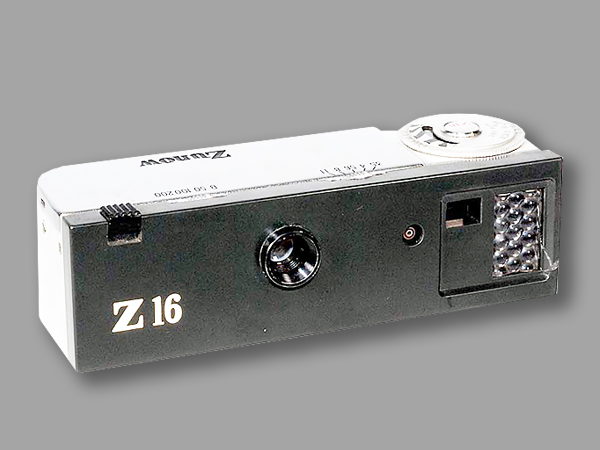
The Zunow Z16 was a subminiature camera for 10 x 14mm images on 16mm film in Minolta cassettes. The lens is a fixed focus 23/3.5 Zunow, with a diaphragm that runs to f/11. The shutter has speeds of 200, 100, 50 and bulb. The camera is equipped with a selenium exposure meter. In 1959 some a limited number of cameras were produced and do exist.
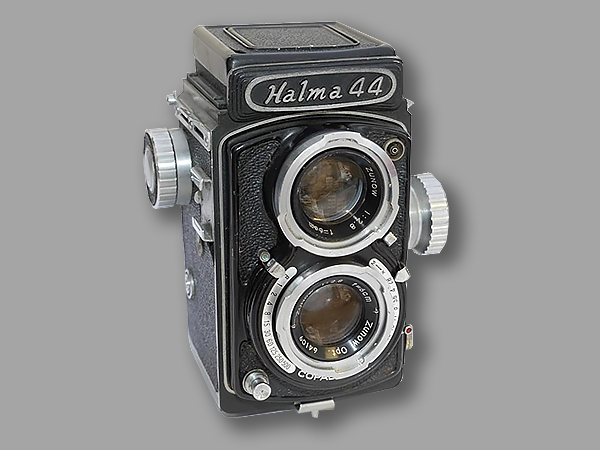
The Halma 44 is a Japanese 4×4 TLR on 127 film with a 6cm f2.8 ZUNOW lens, perhaps made around 1960. Two versions exist, with manual or automatic film advance. The camera was also sold as Prinz 44 or Tower 44B. The Halma 44 has the classical TLR shape and a predominantly black finish. The front standard moves back and forth for focusing.
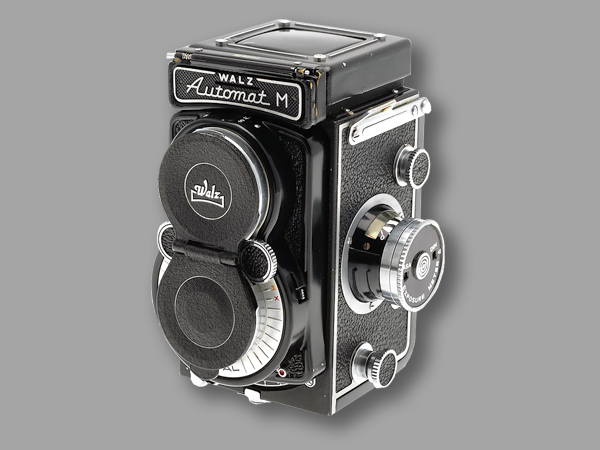
The Walz Automat M Camera was a 127 format manual focus TLR released in 1959. It used the no longer available 127 format film. It has a Zunow 6cm f2.8 lens with a minimum focus distance of 0.7m. The M model included integrated selenium lightmeter under the nameplate that the non-M version didn’t have. Metal body in black finish and leatherette.
